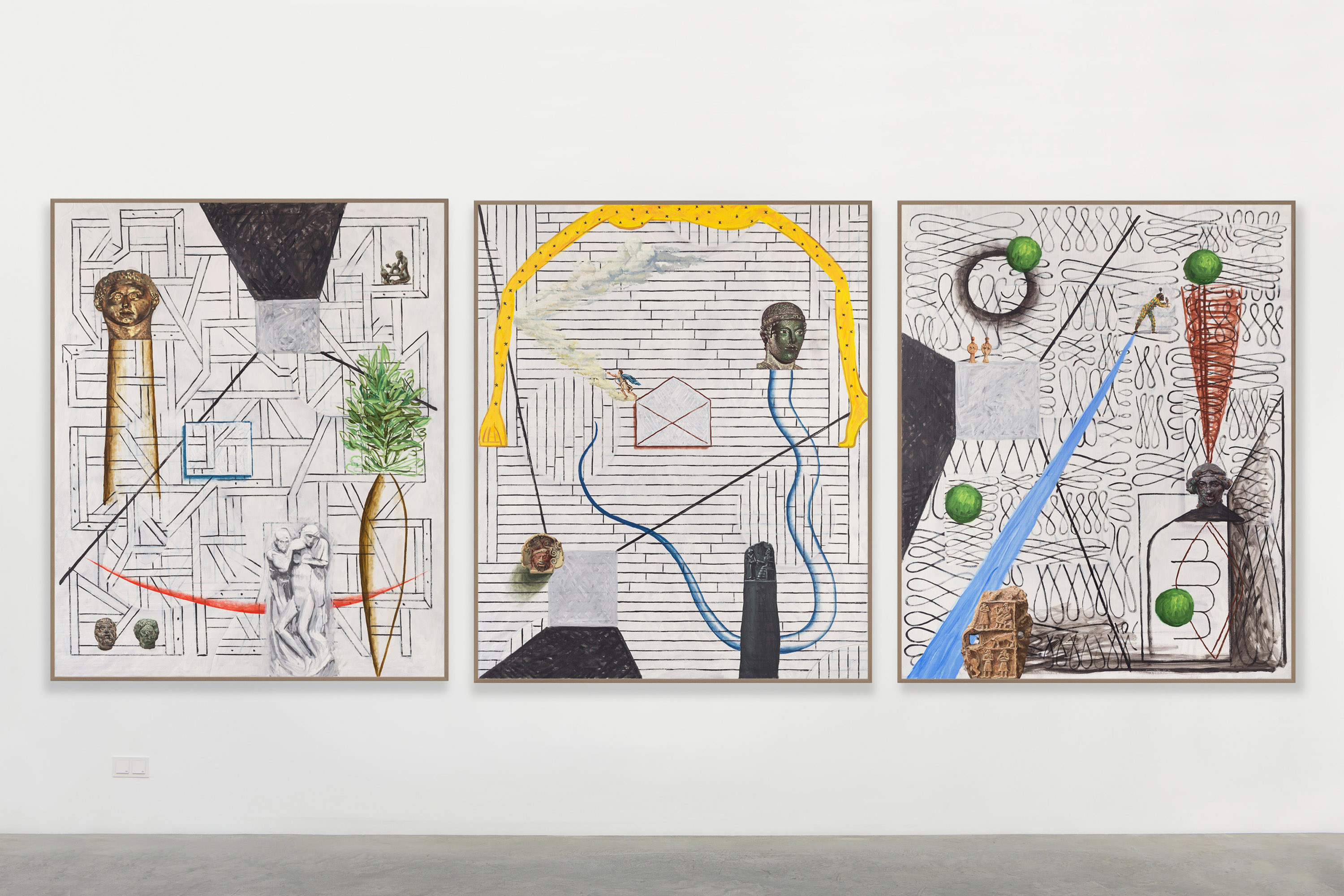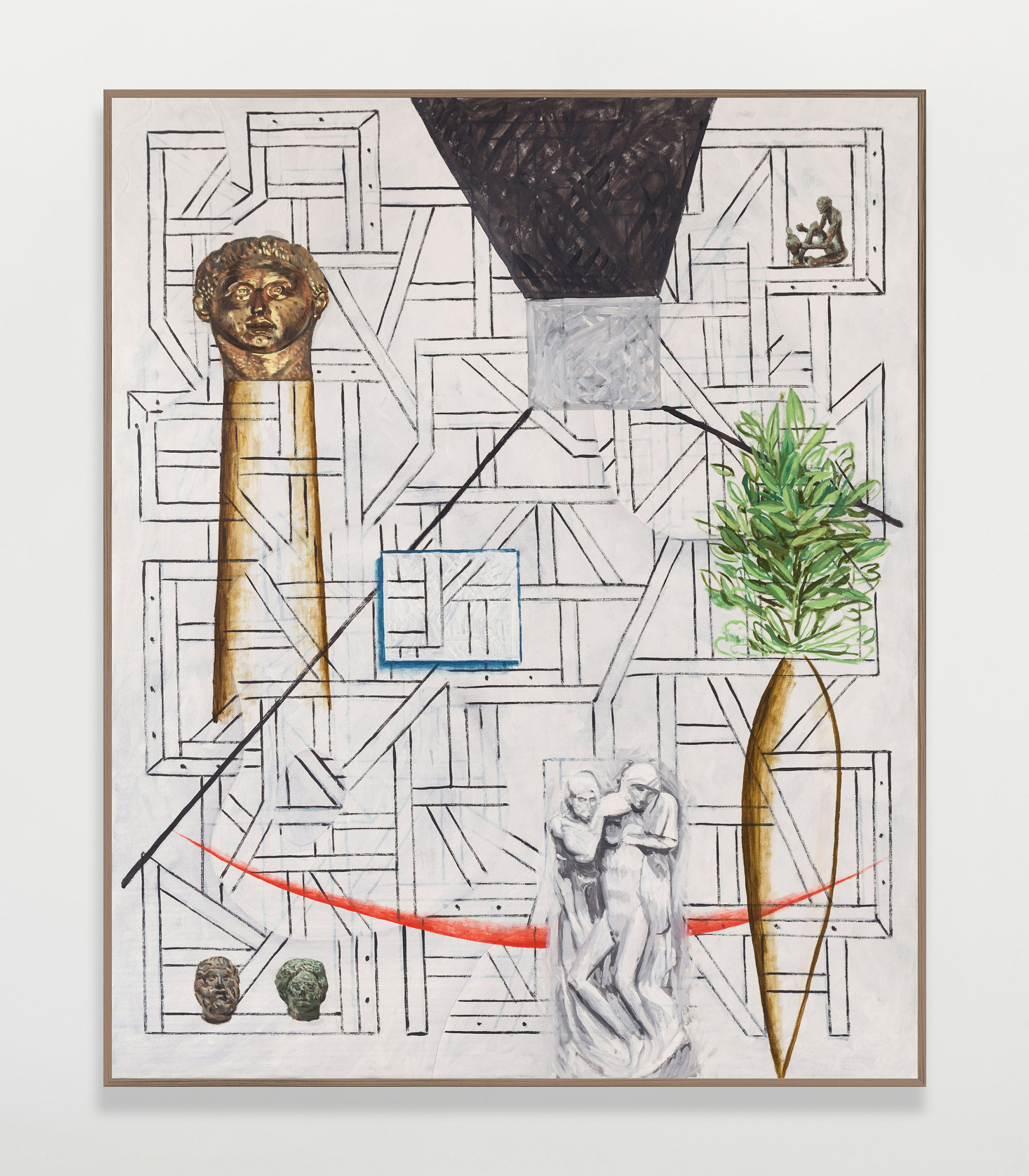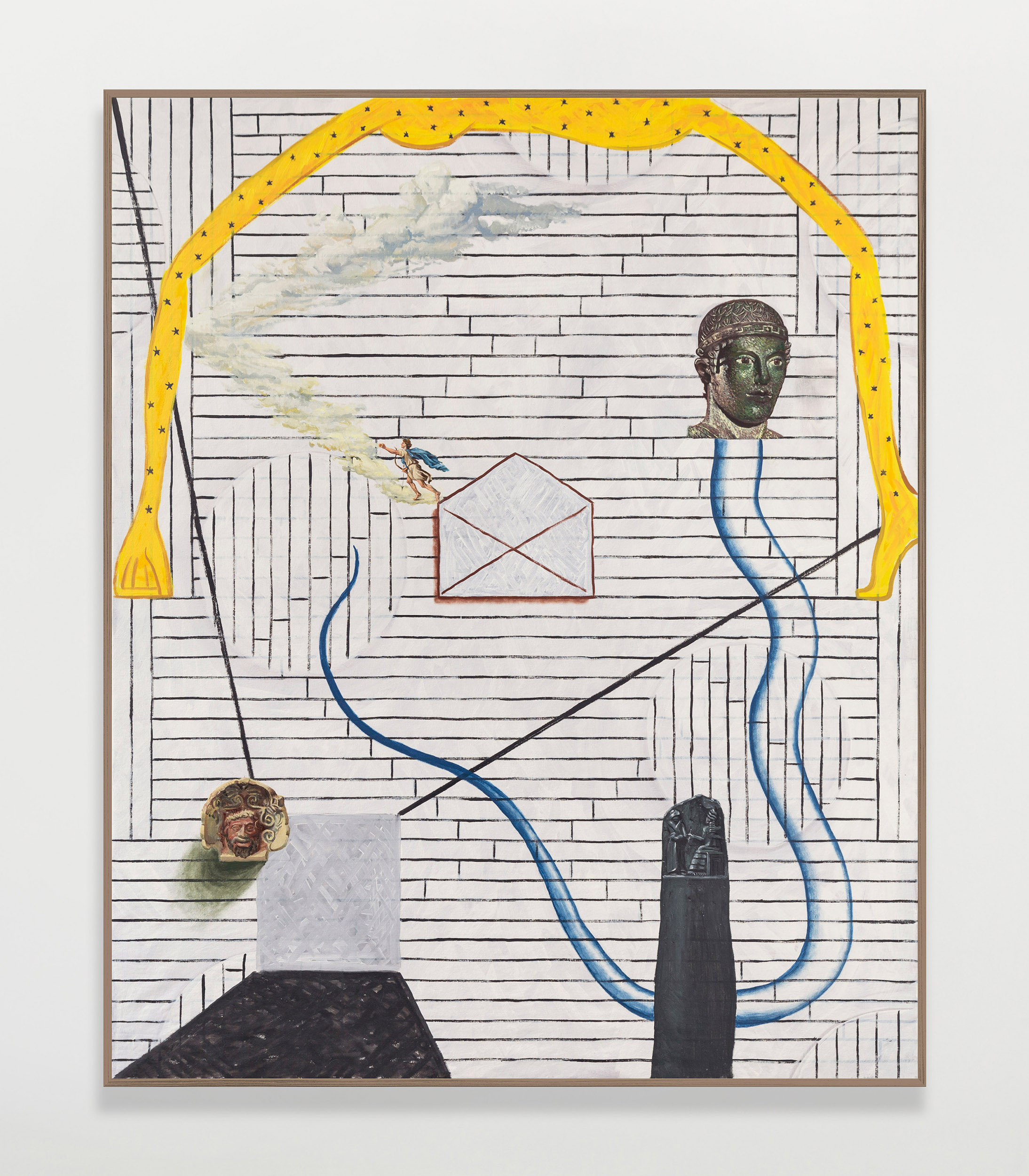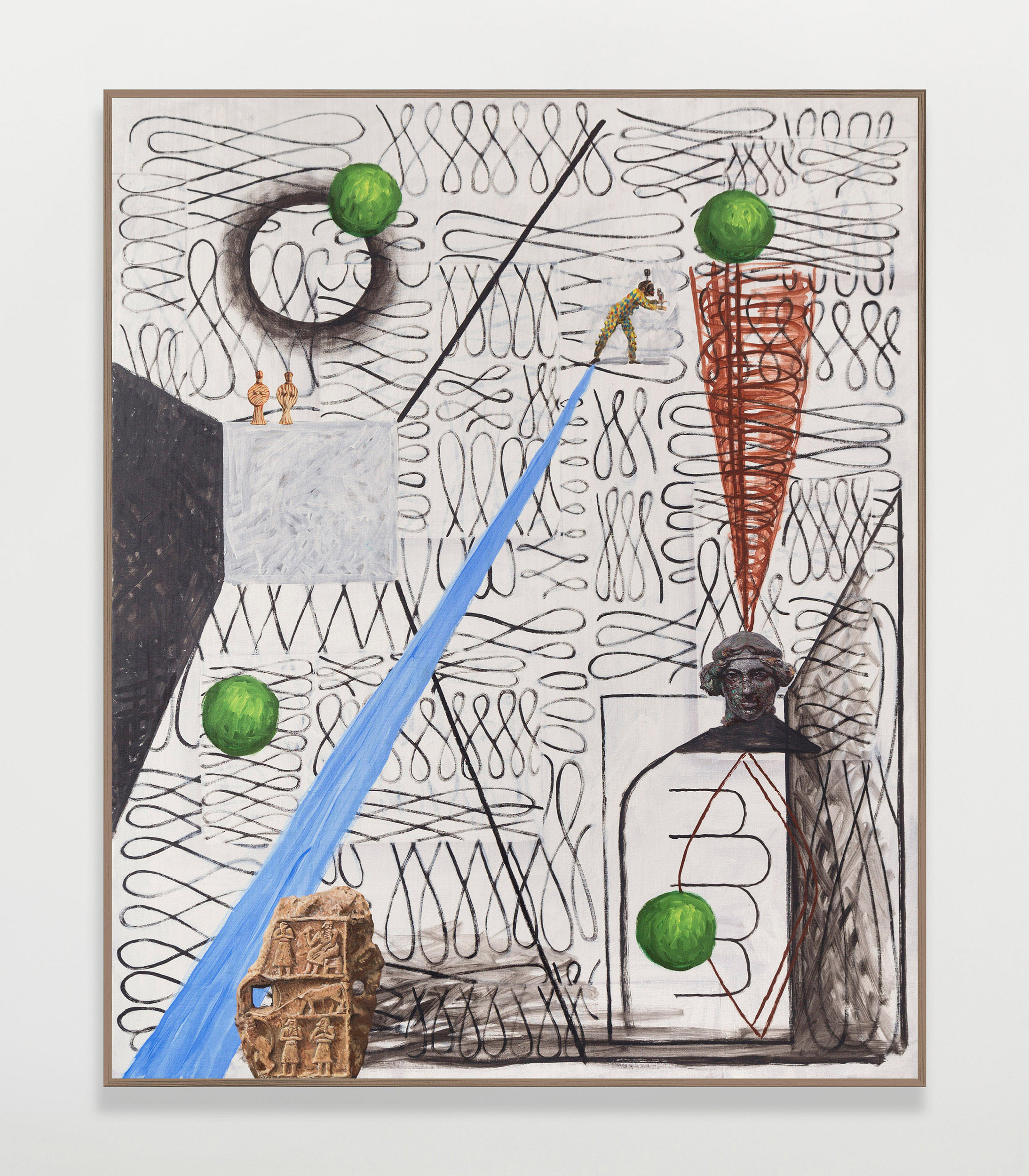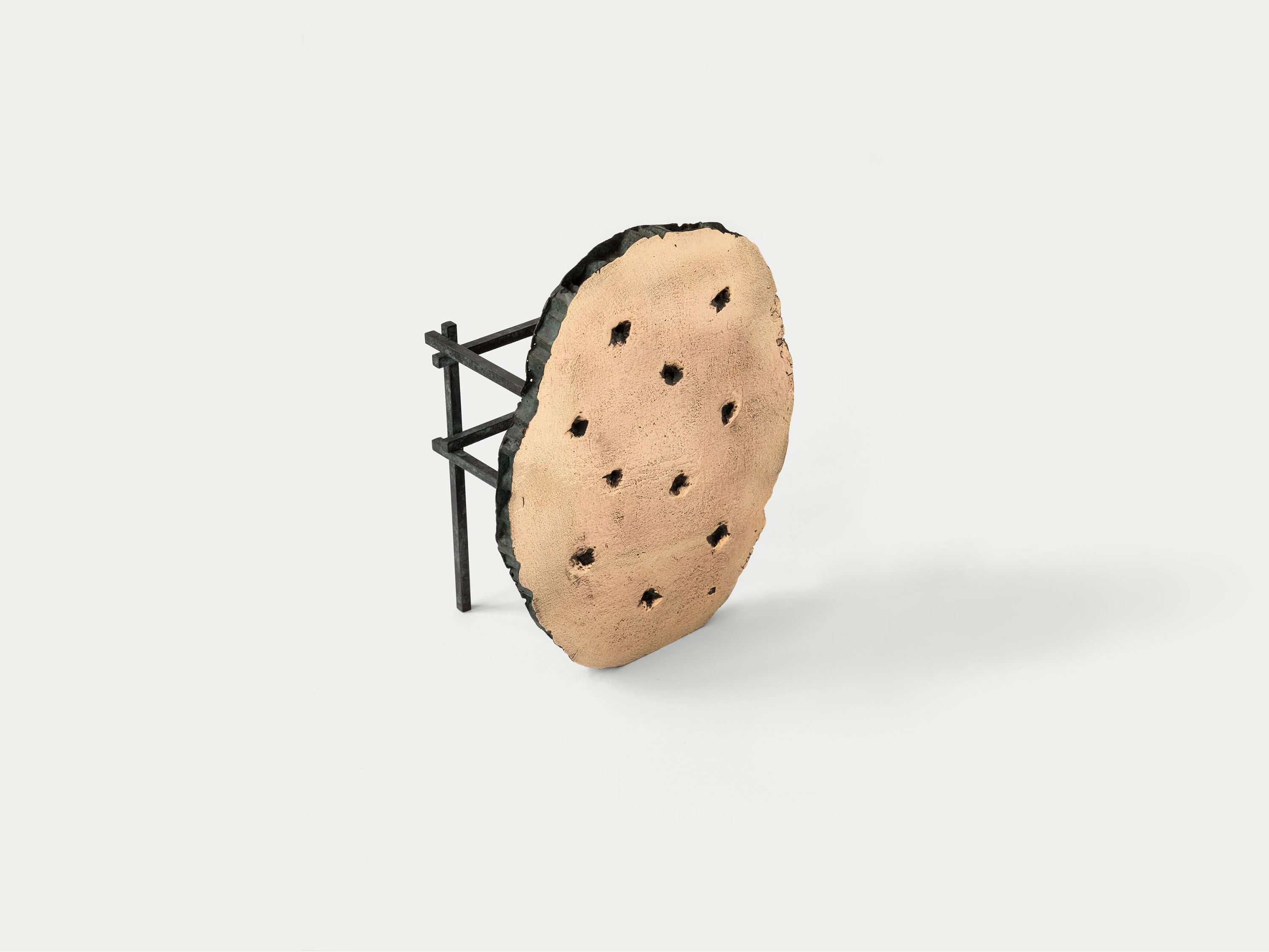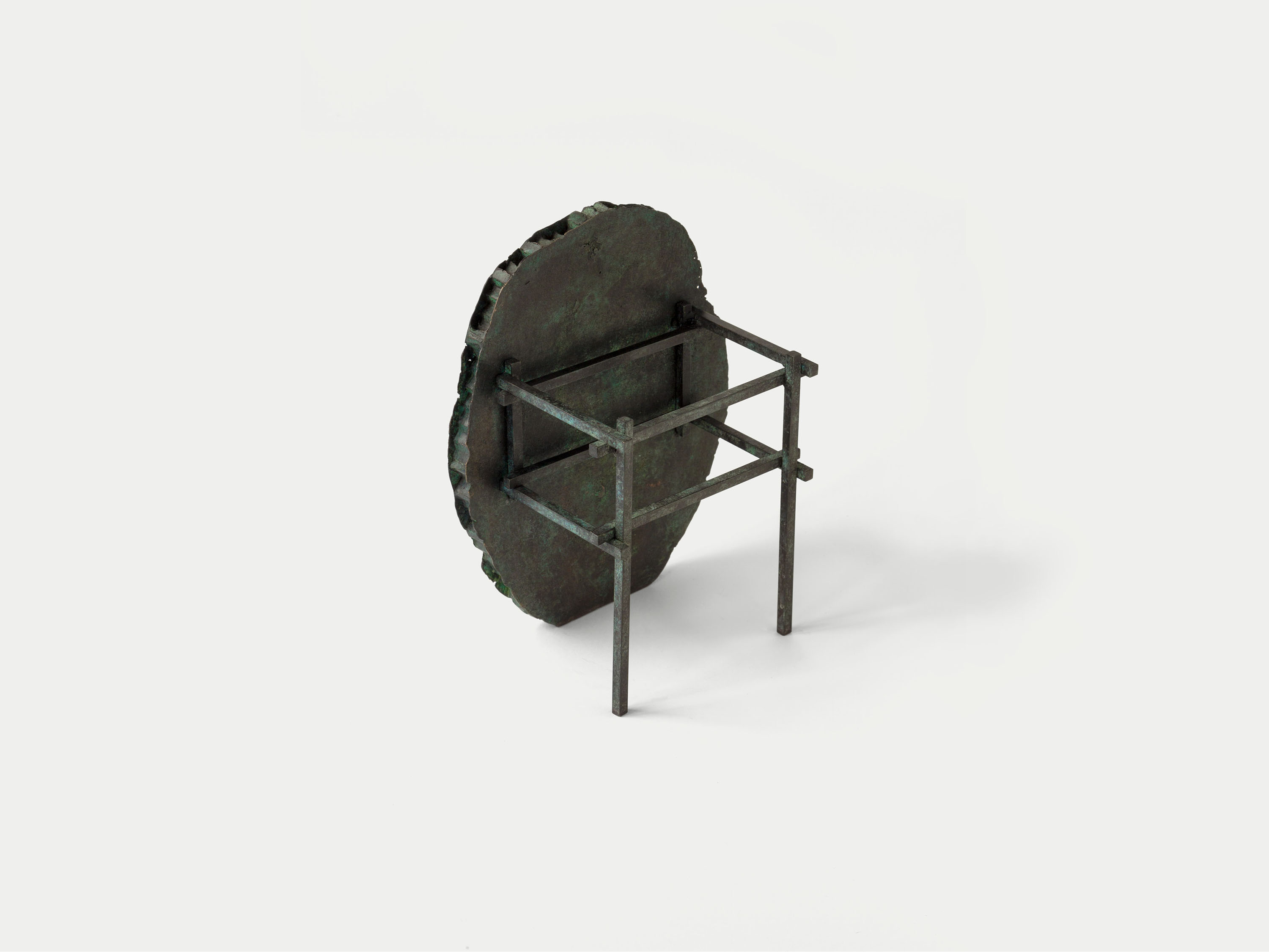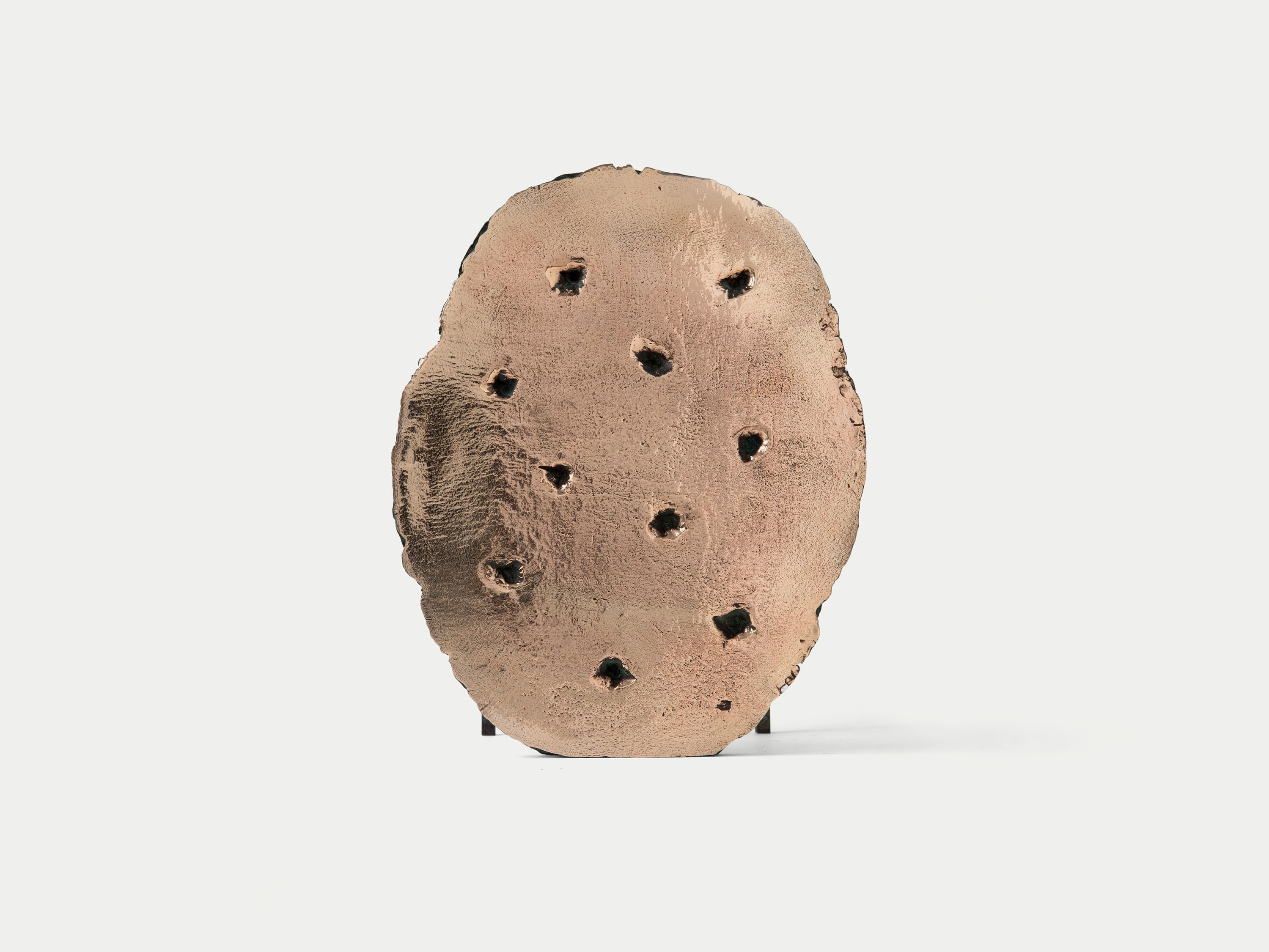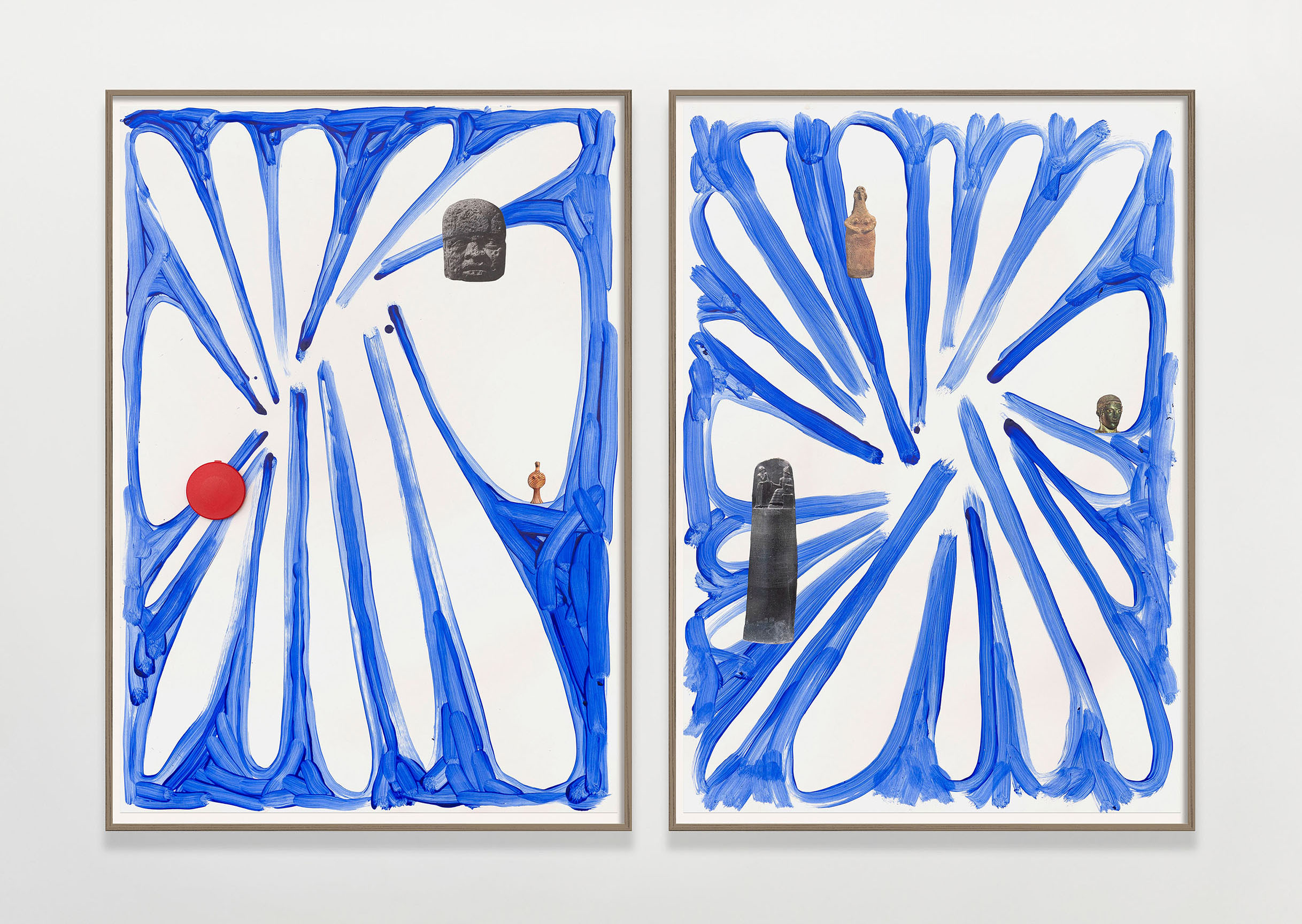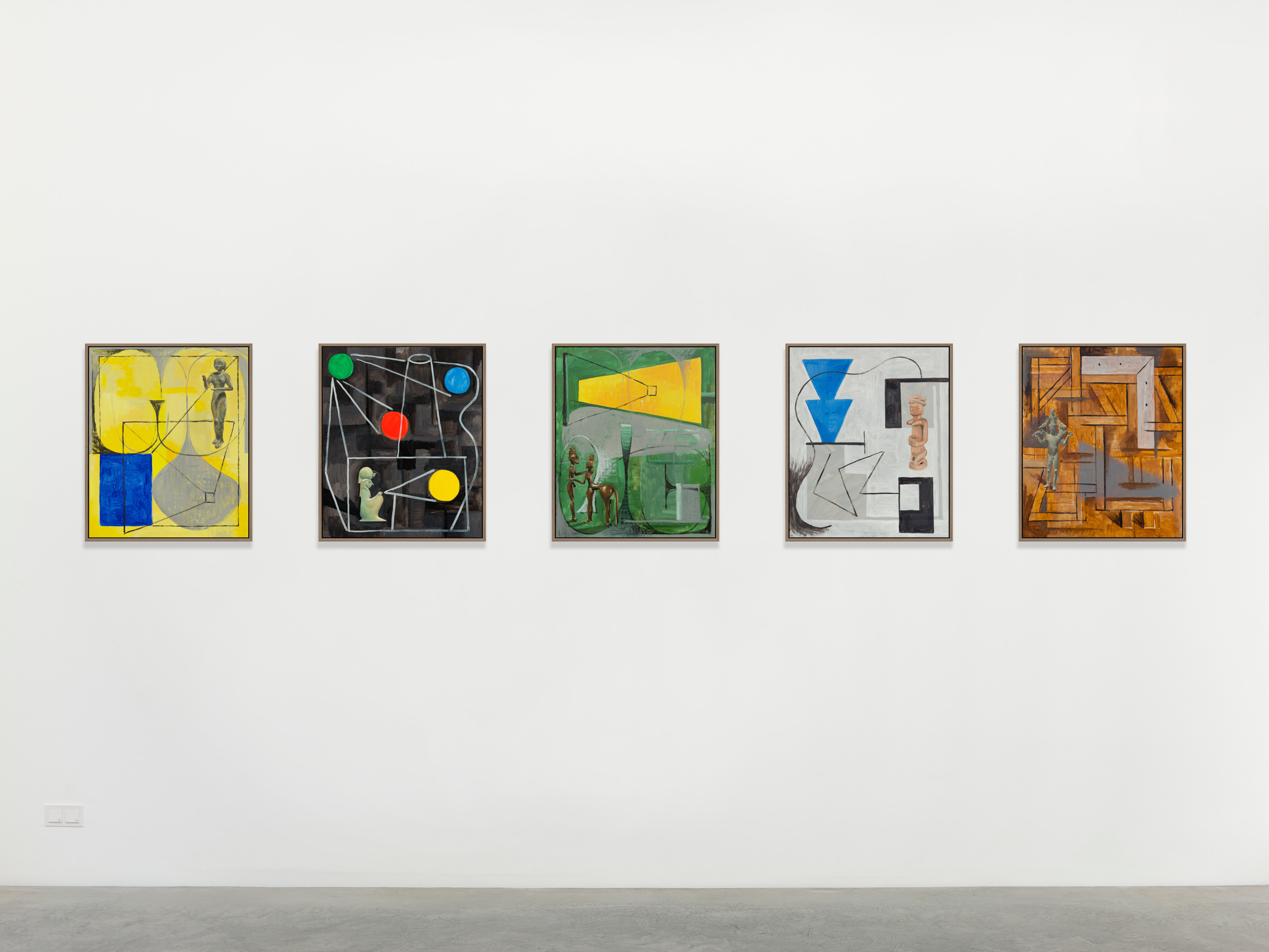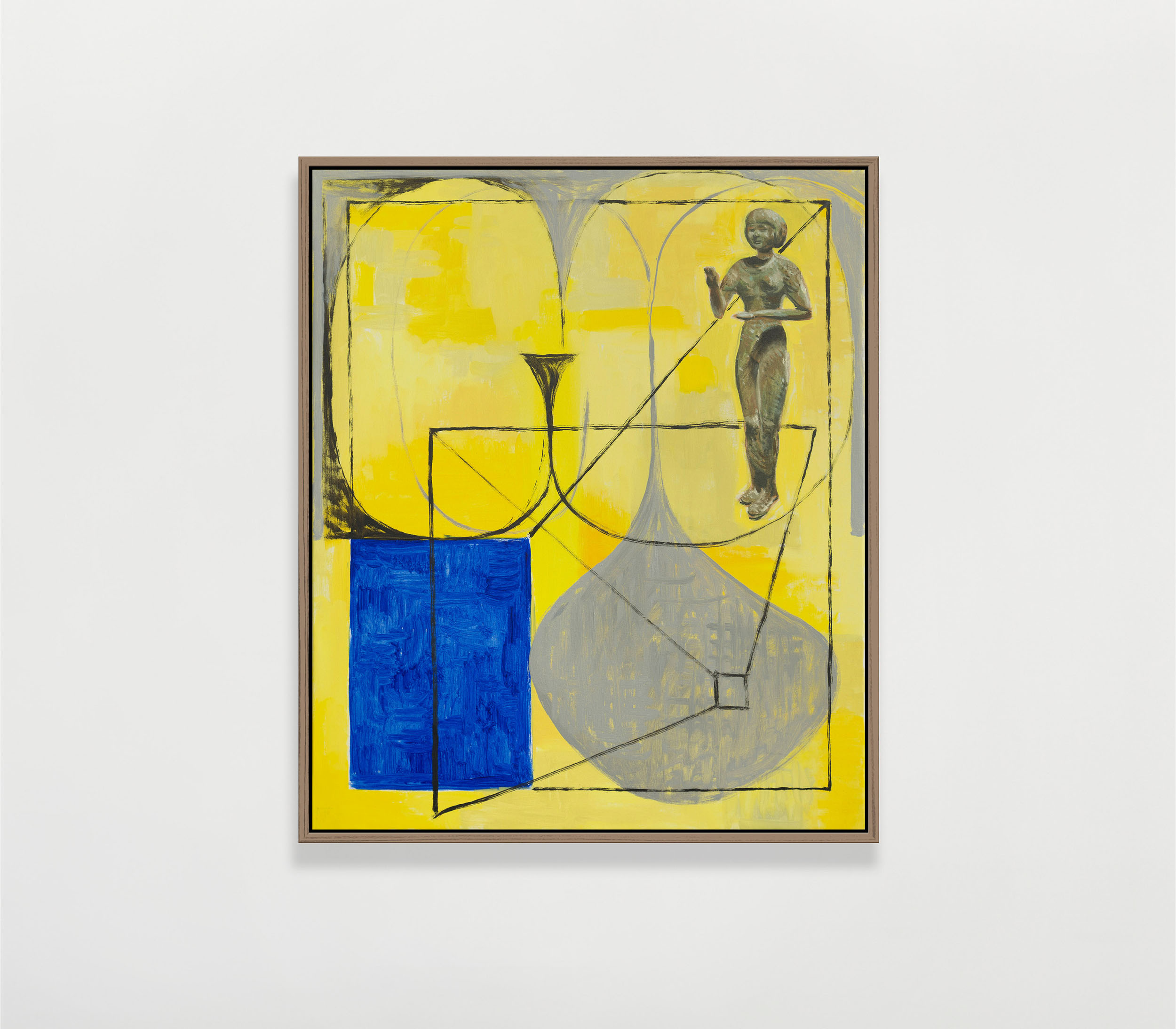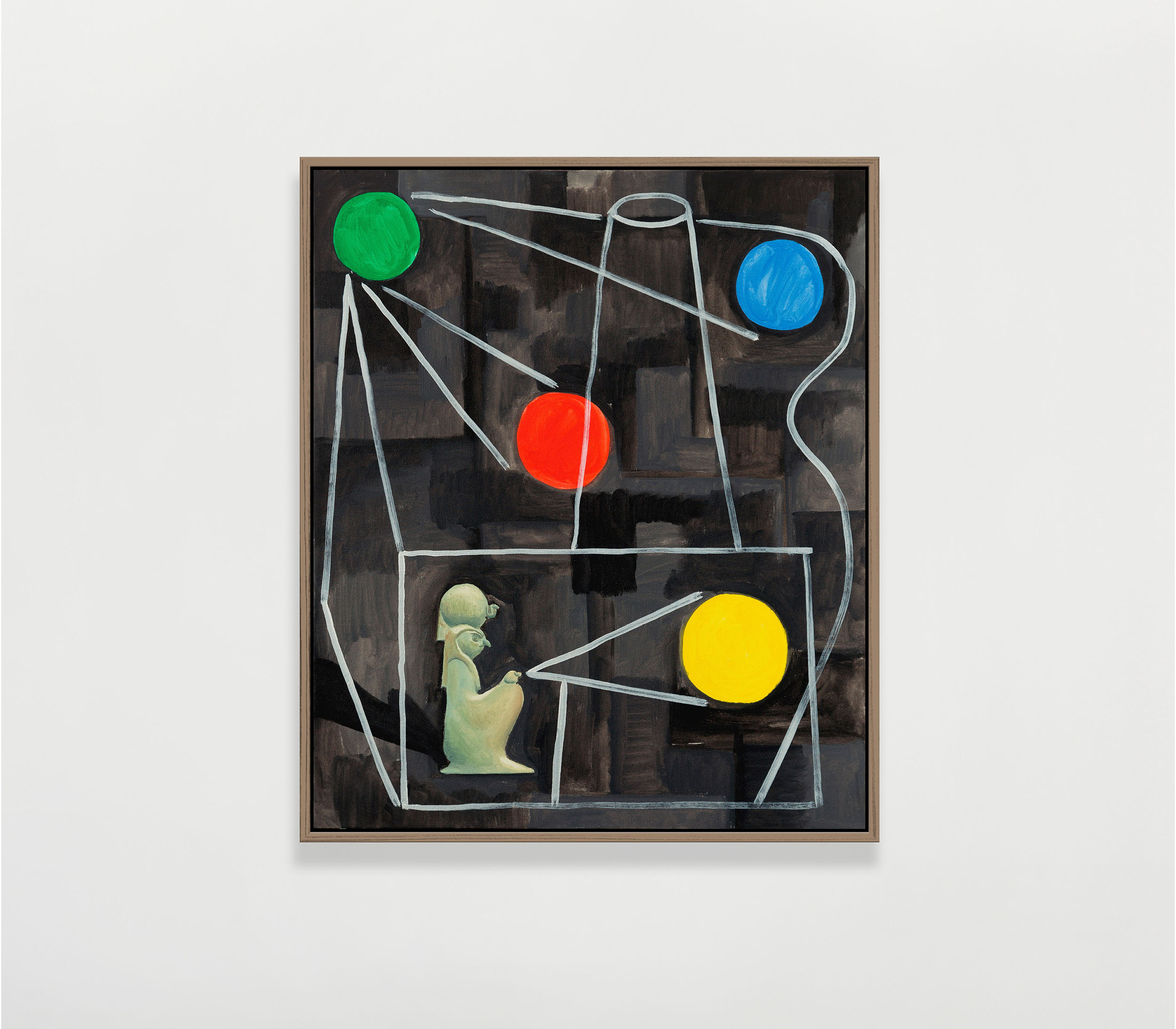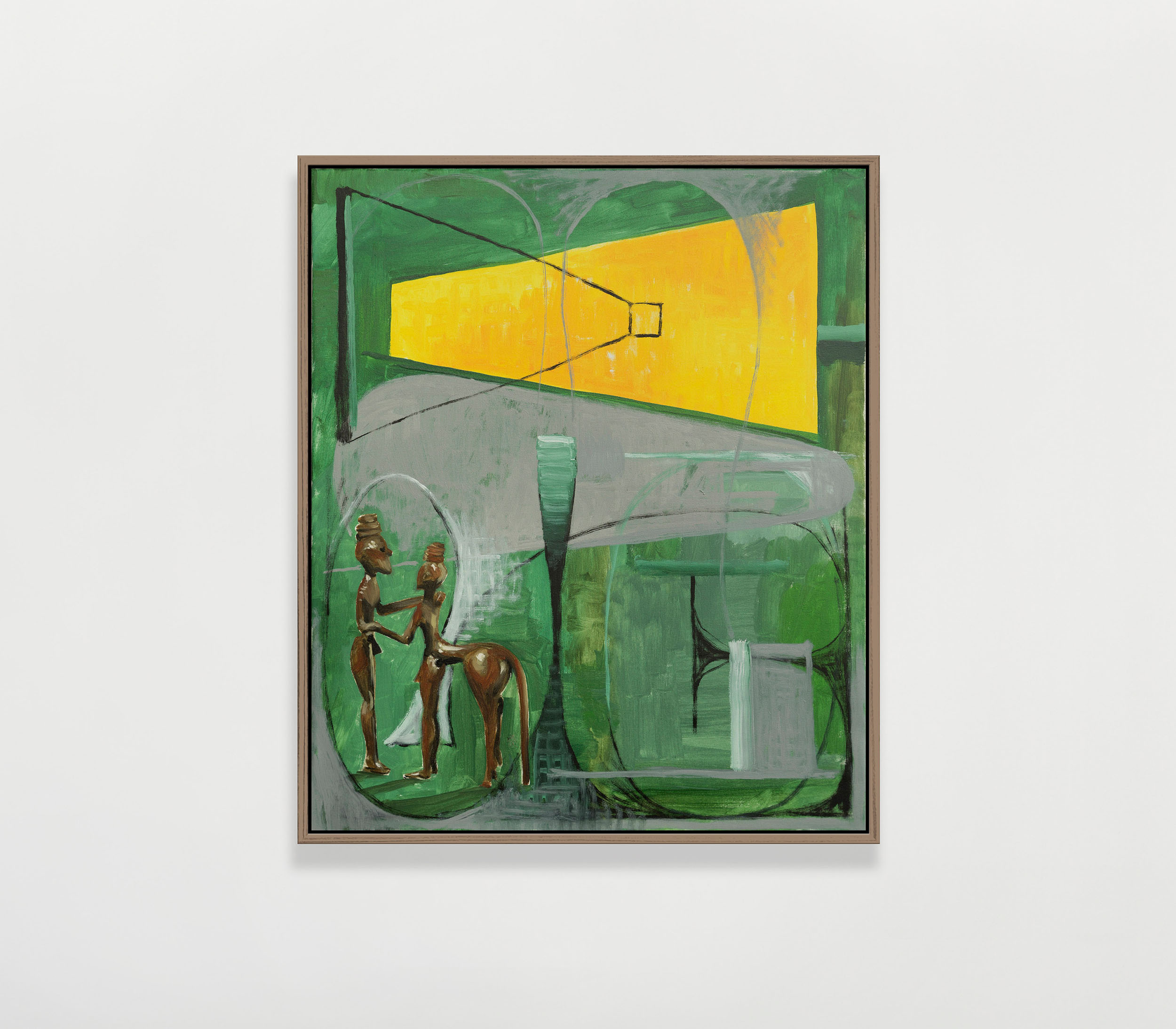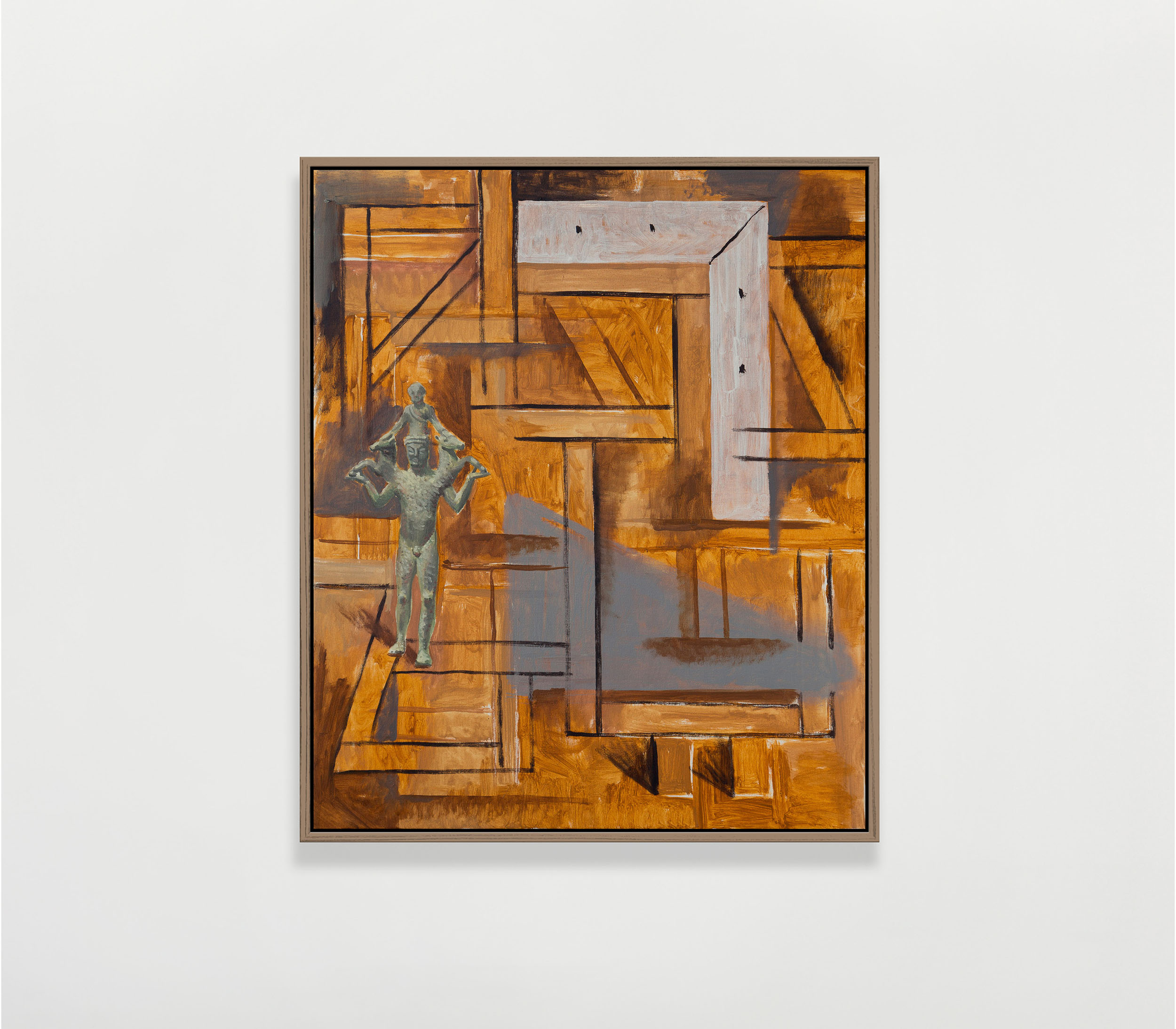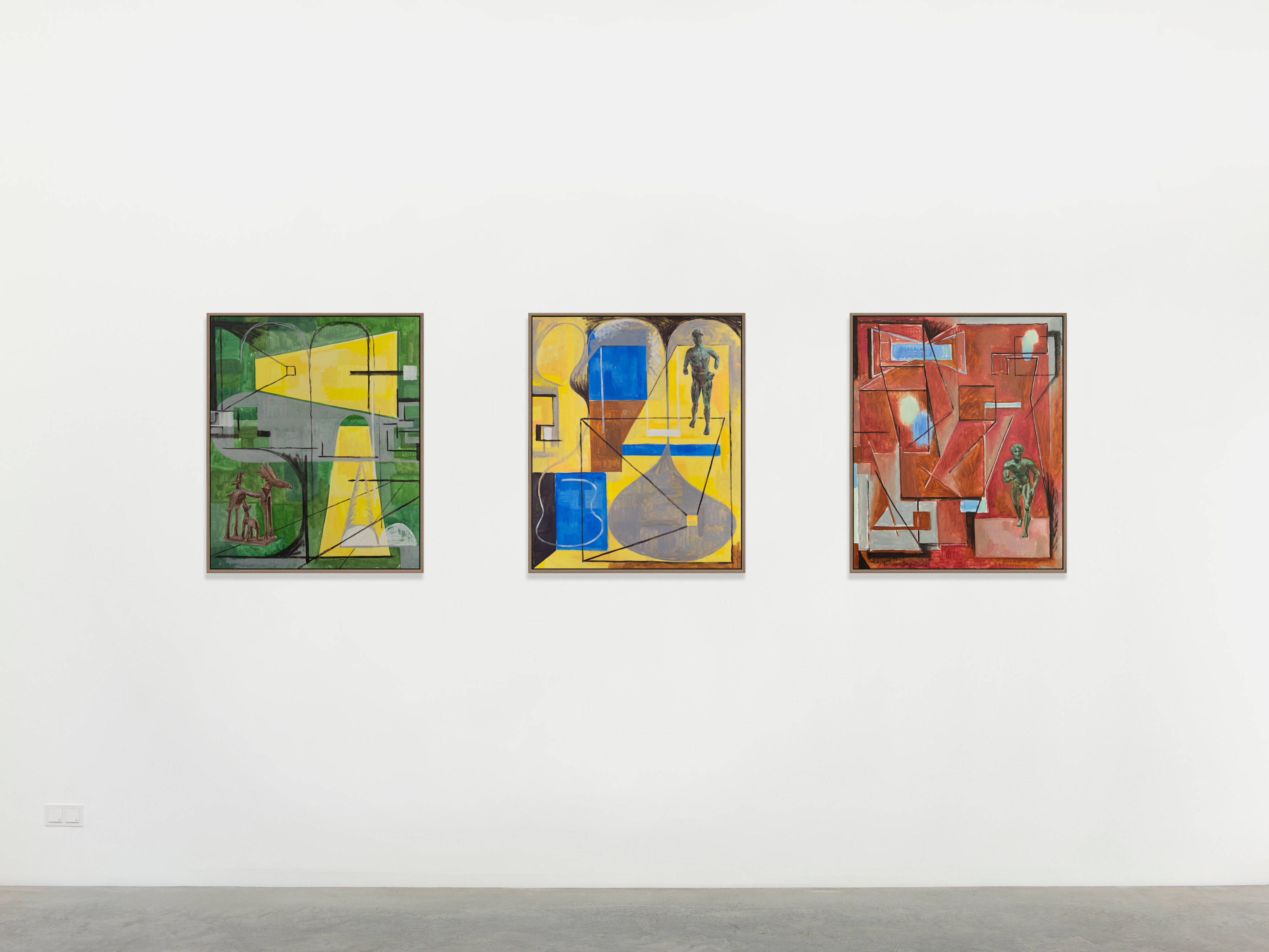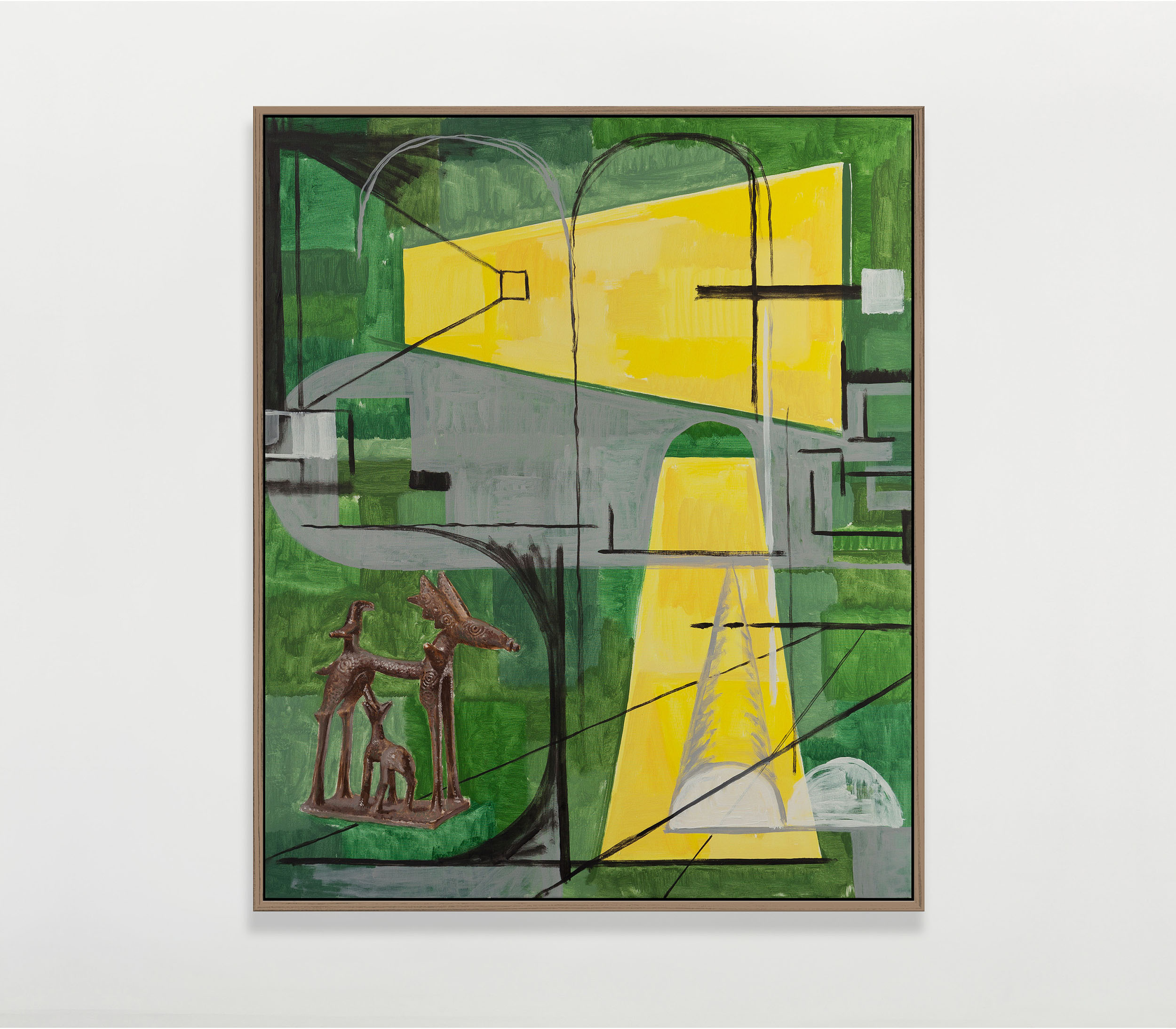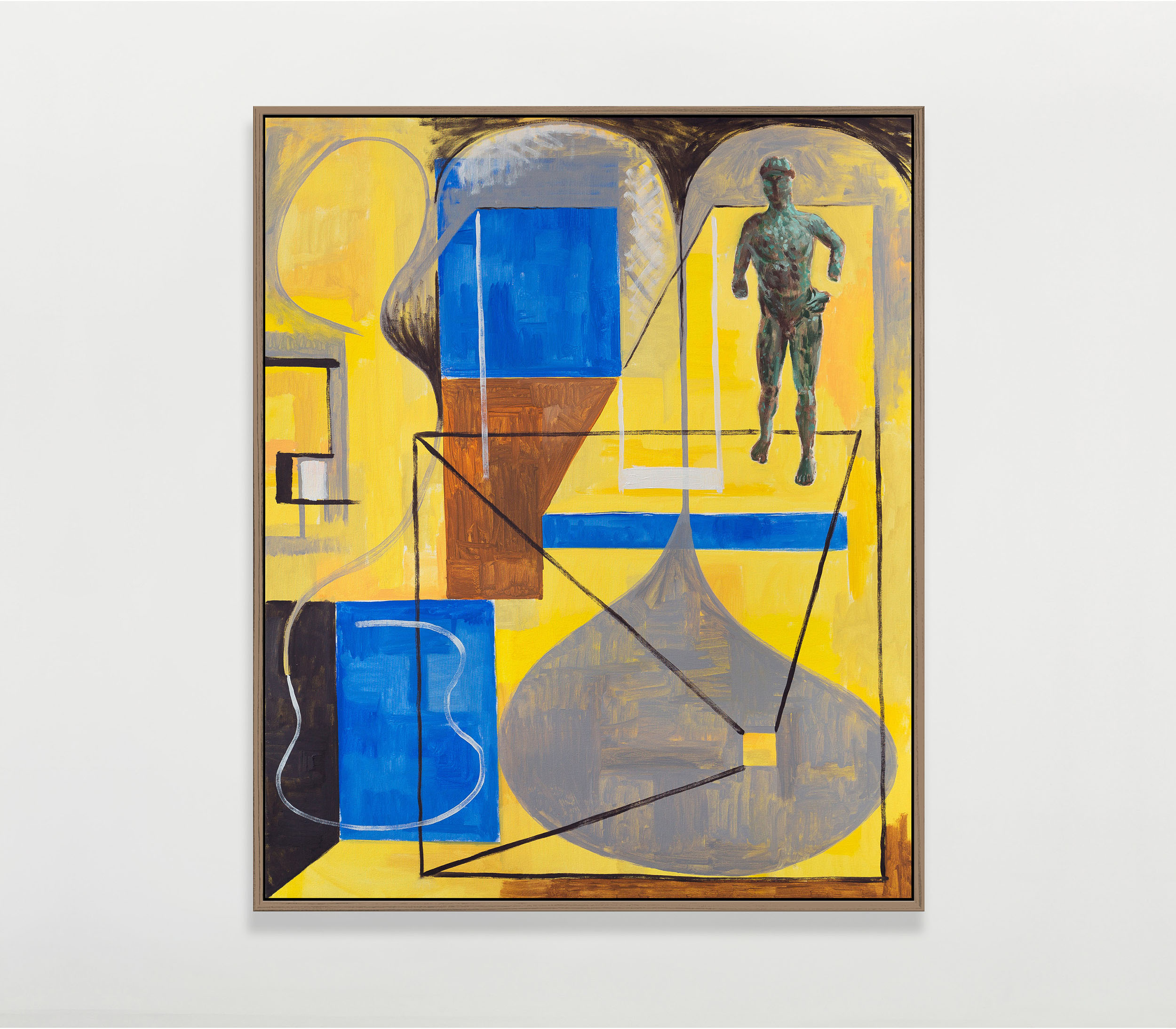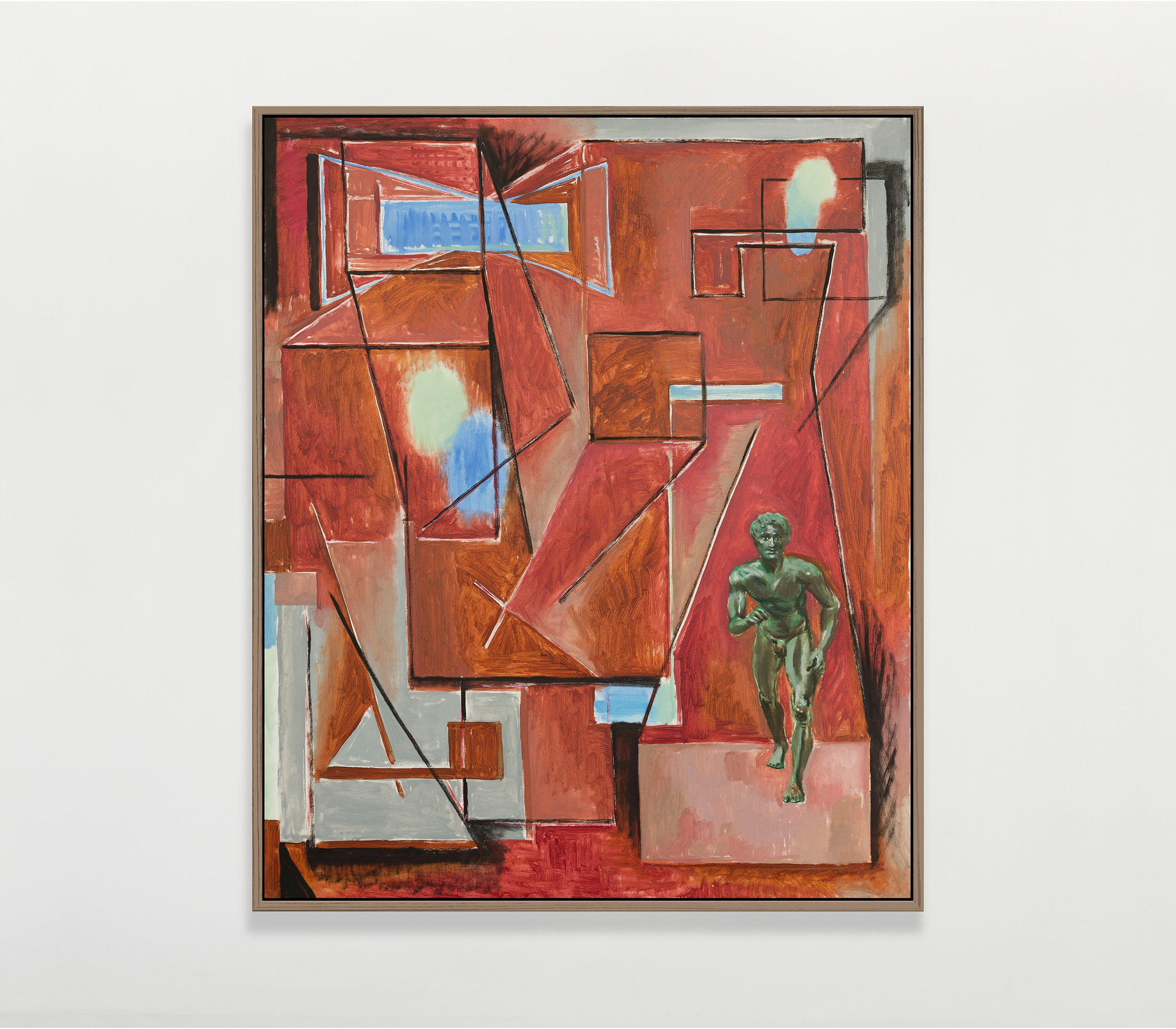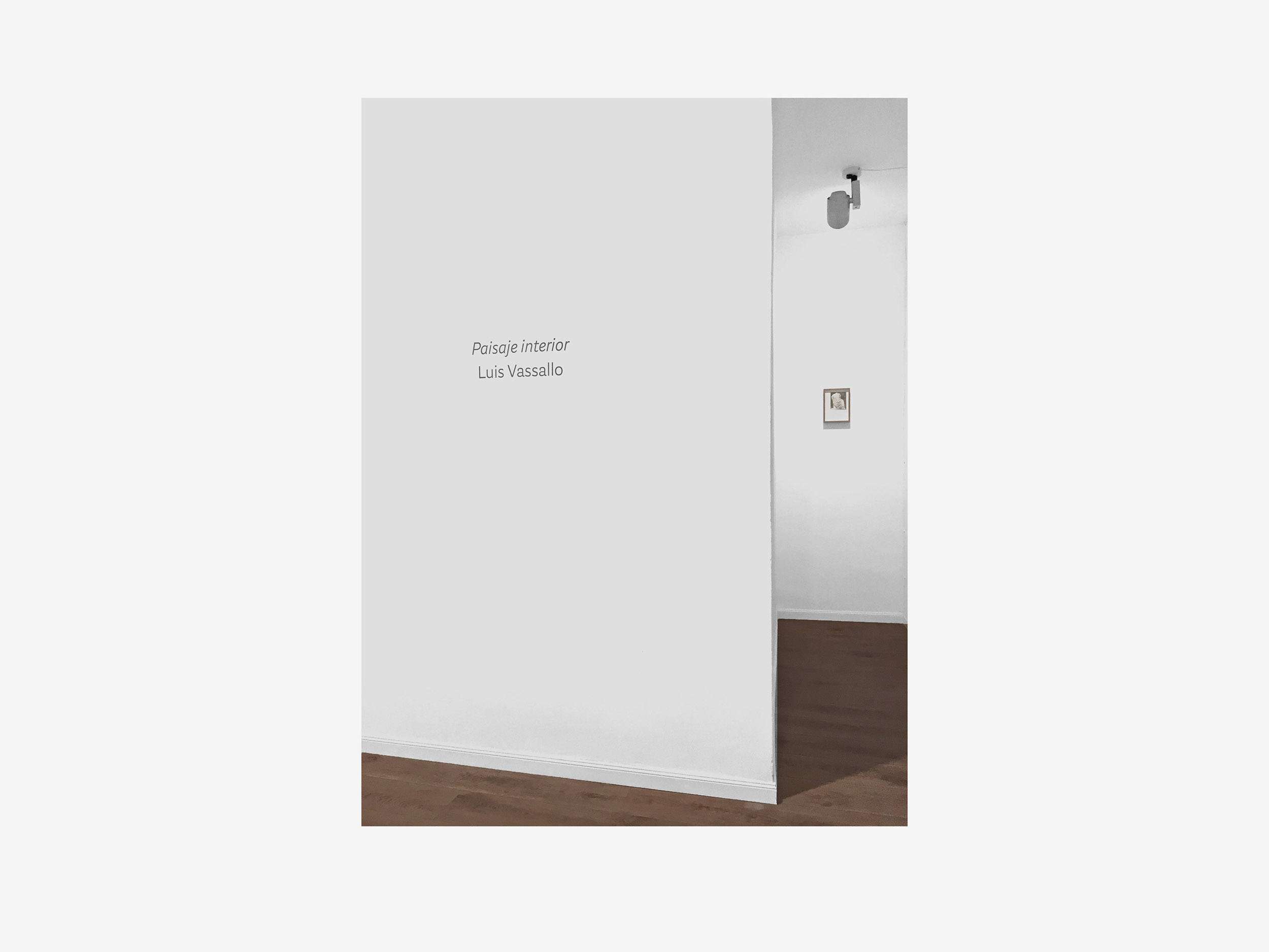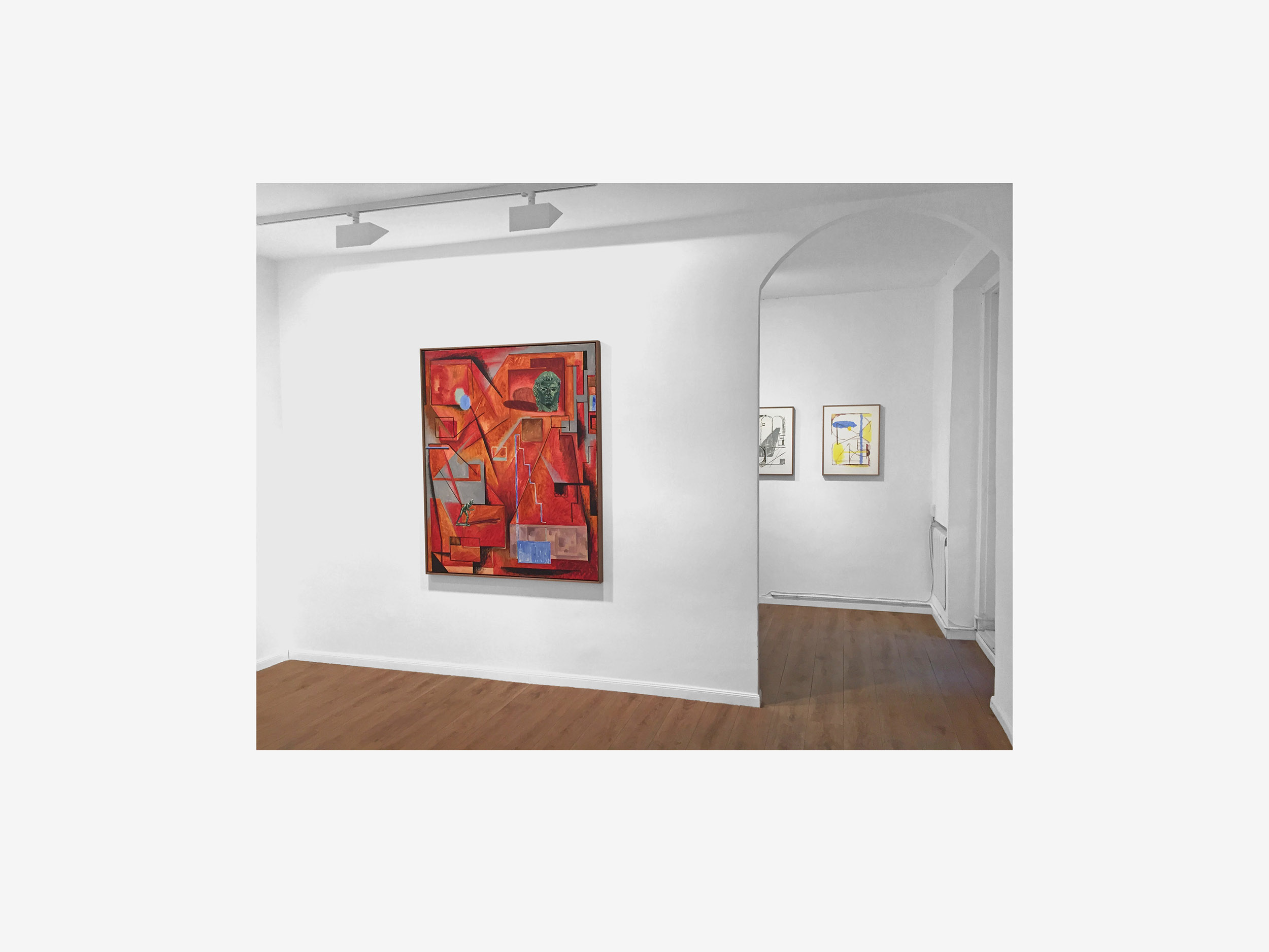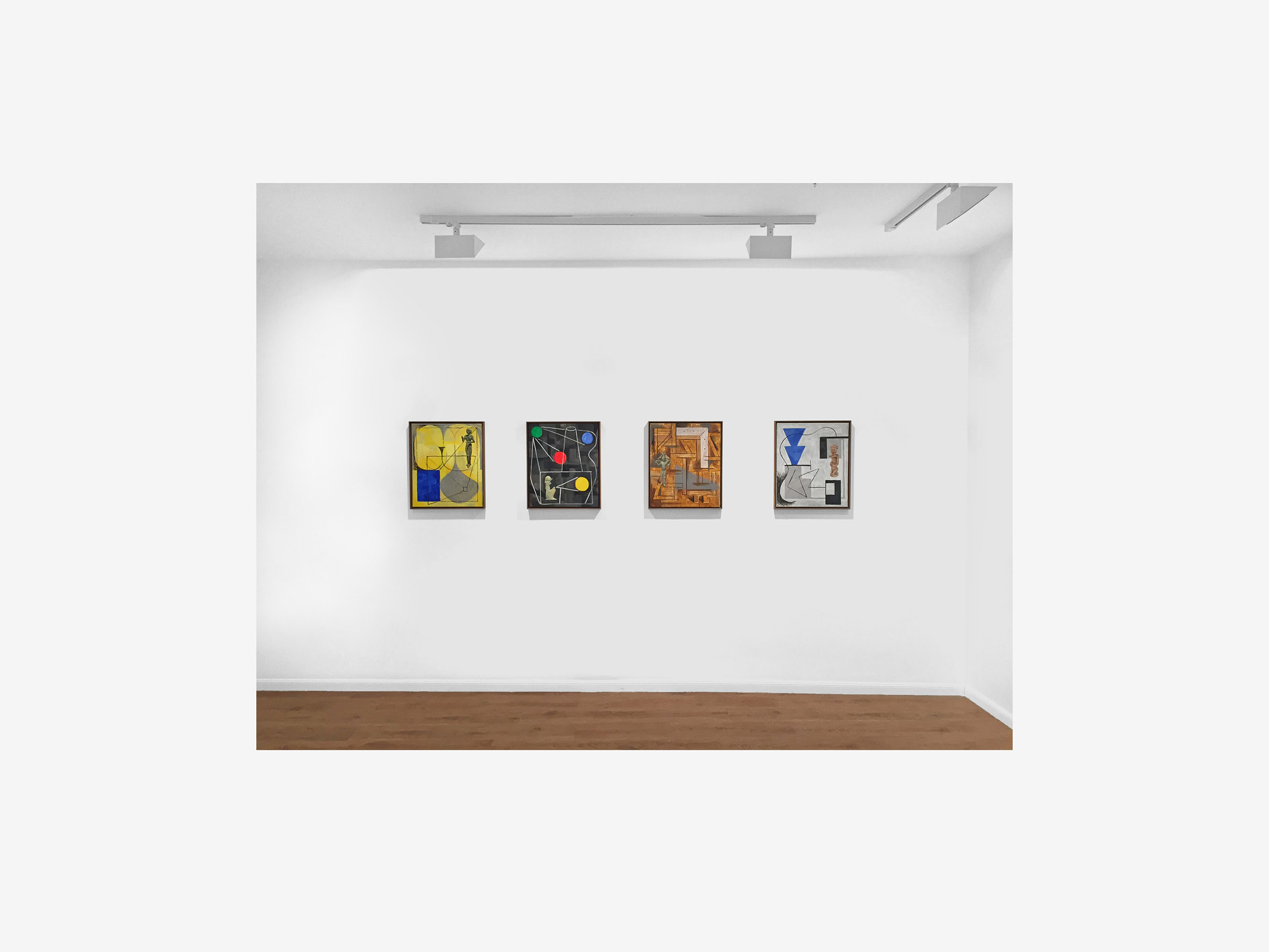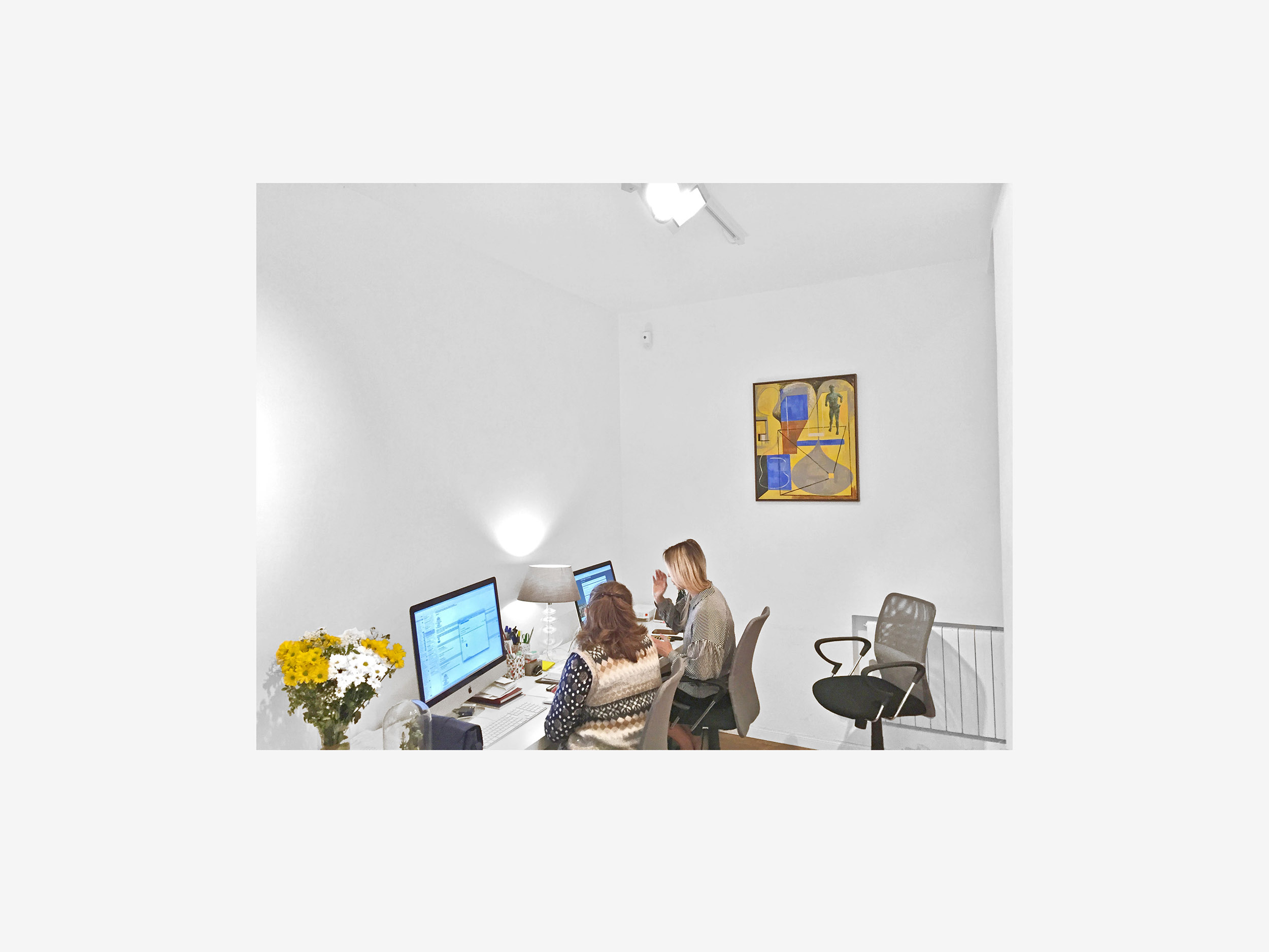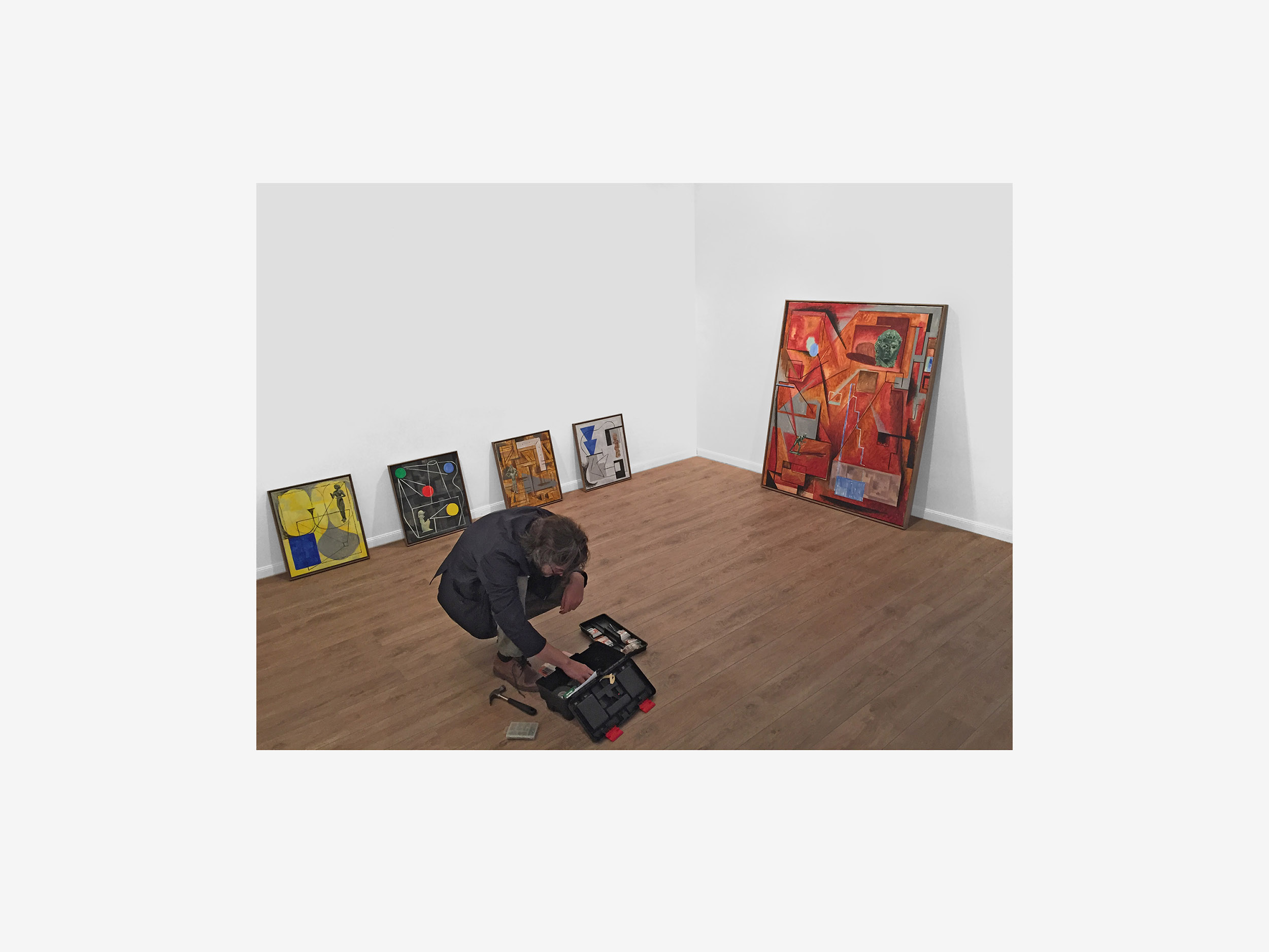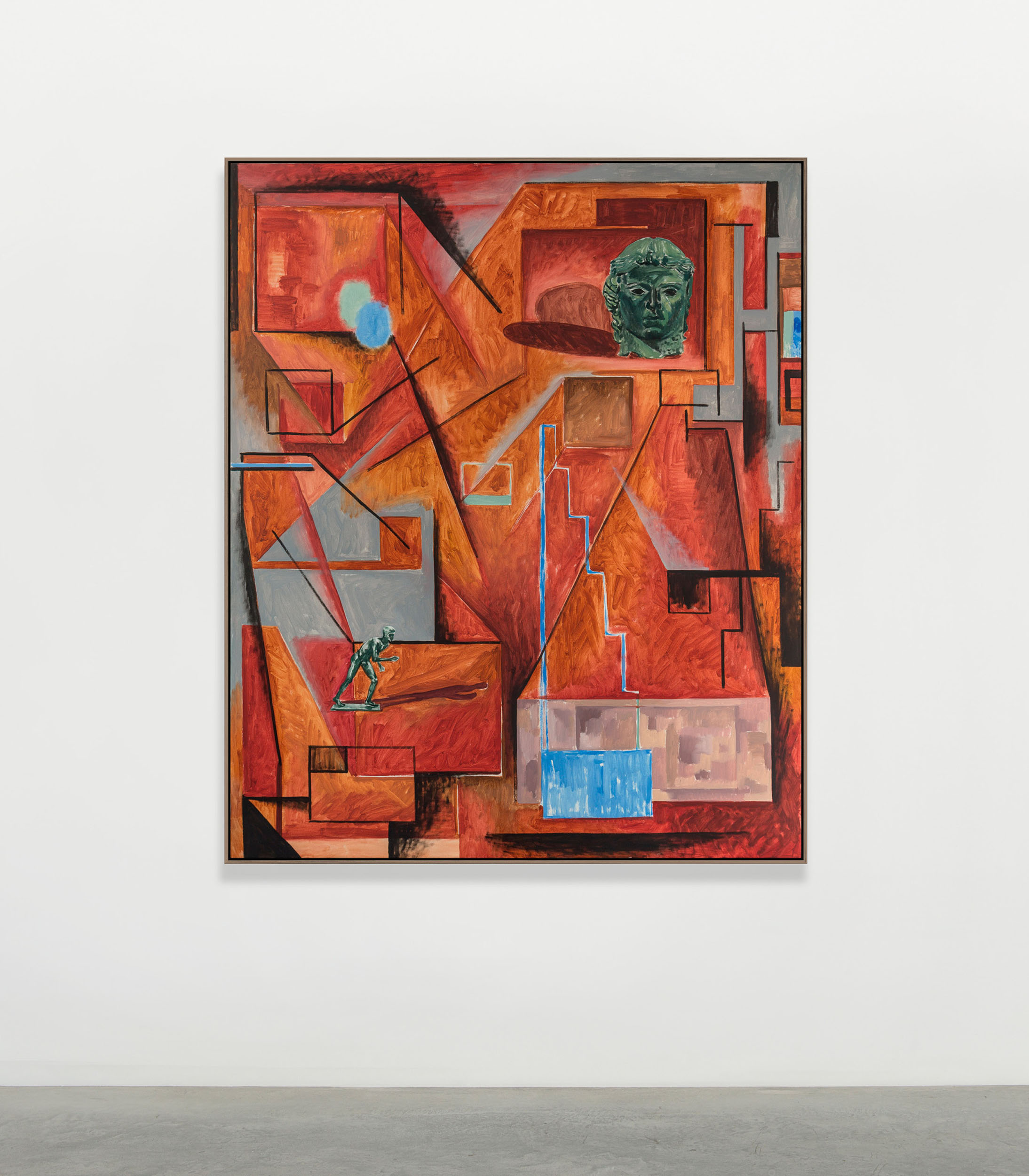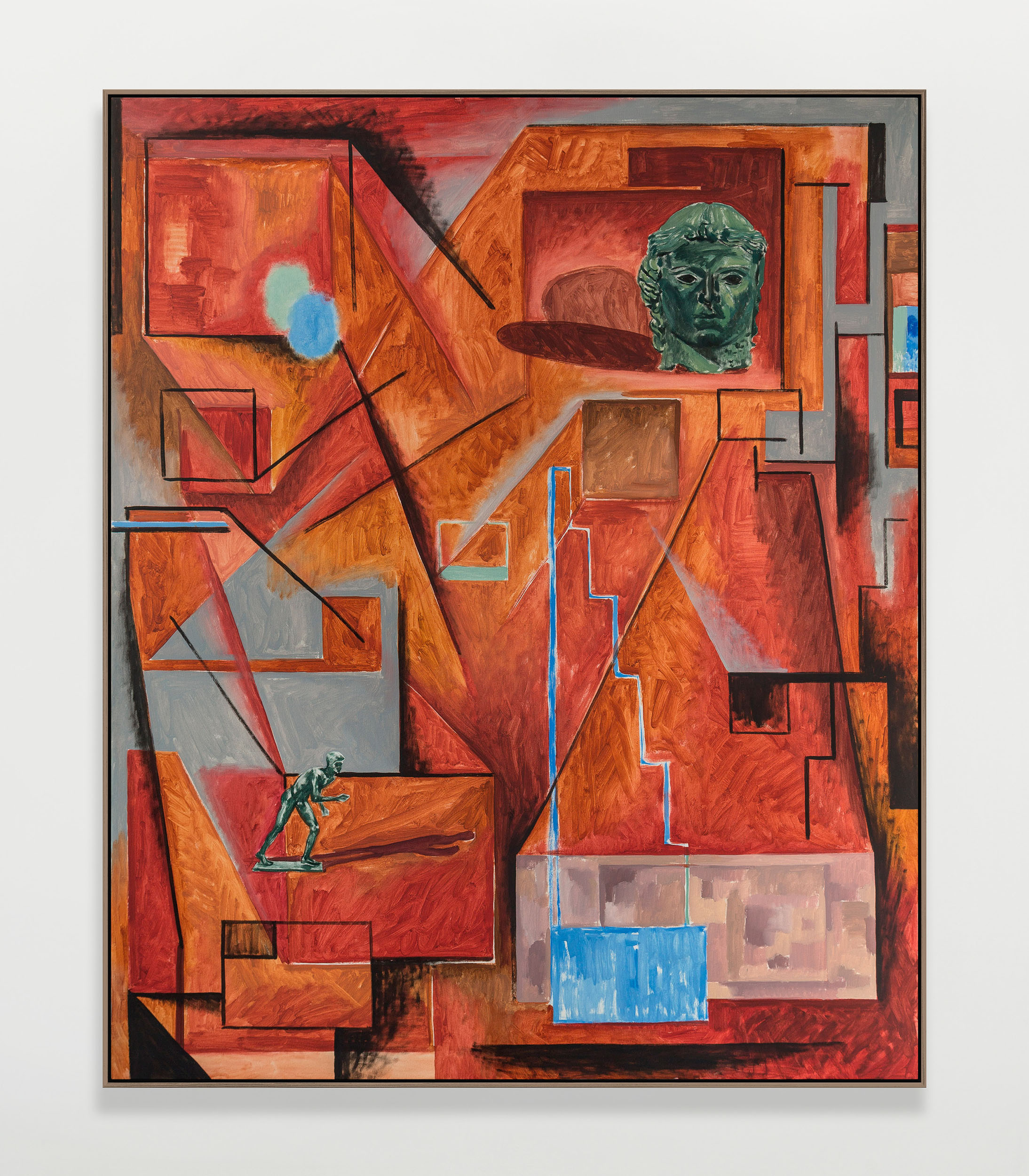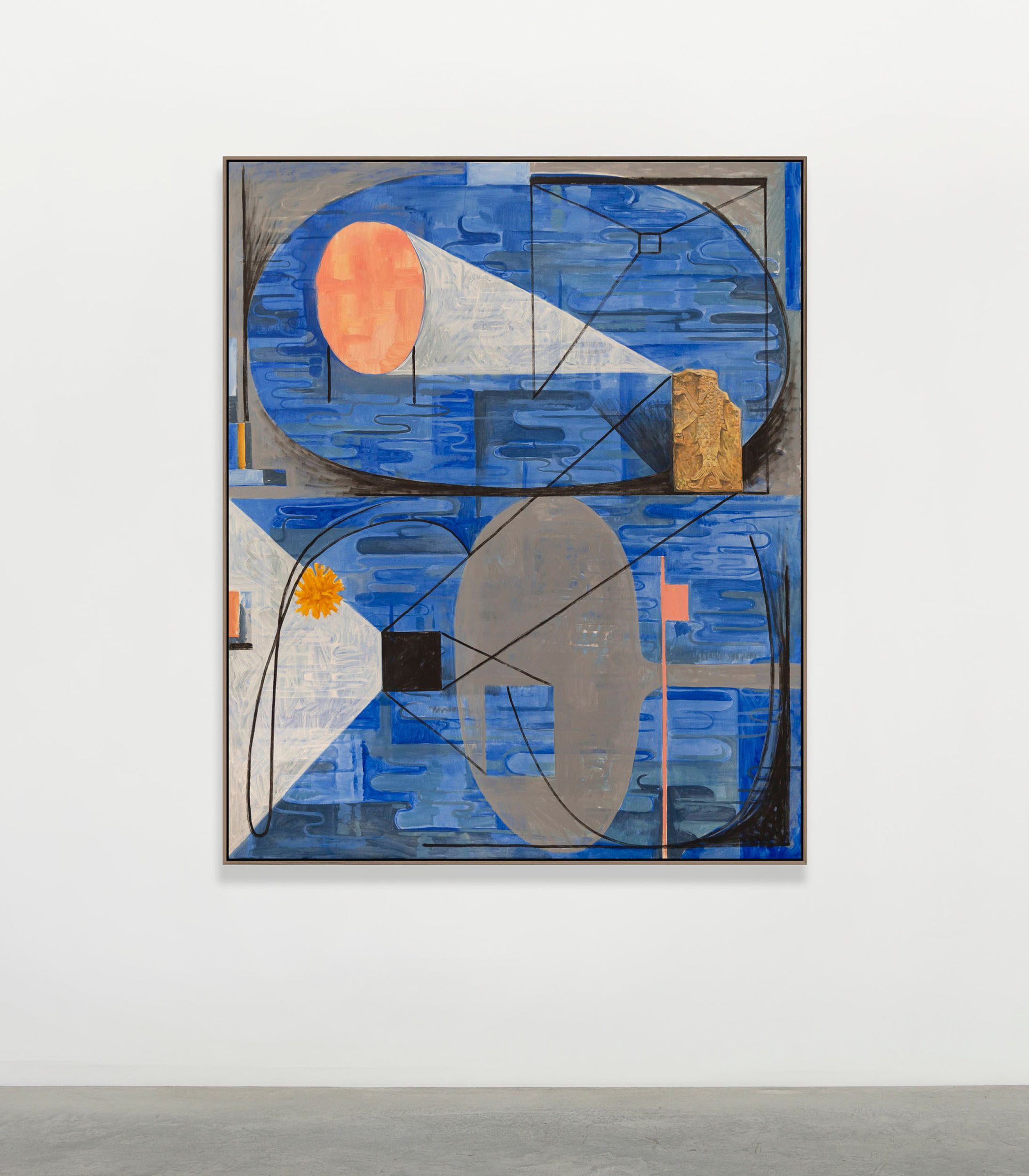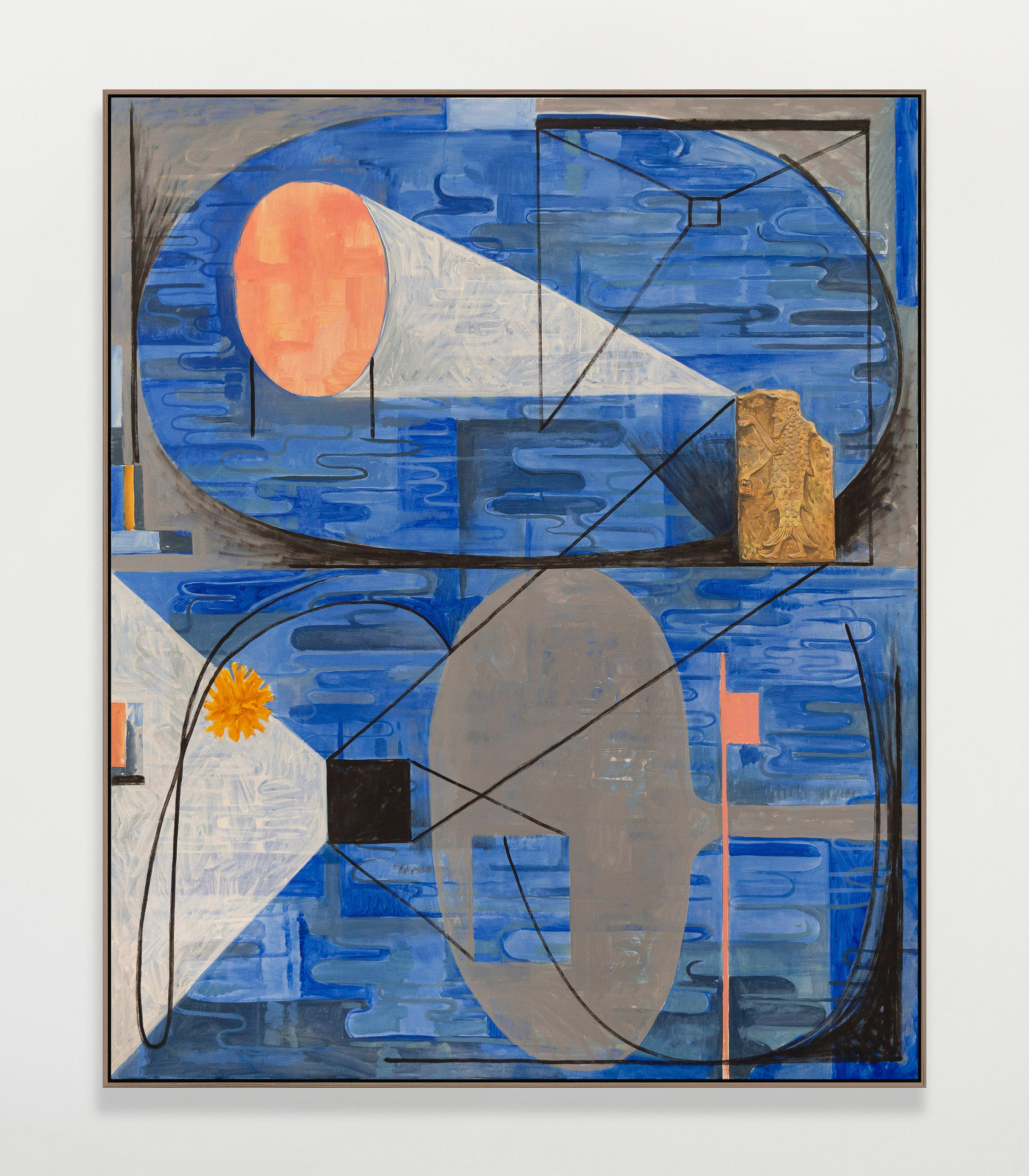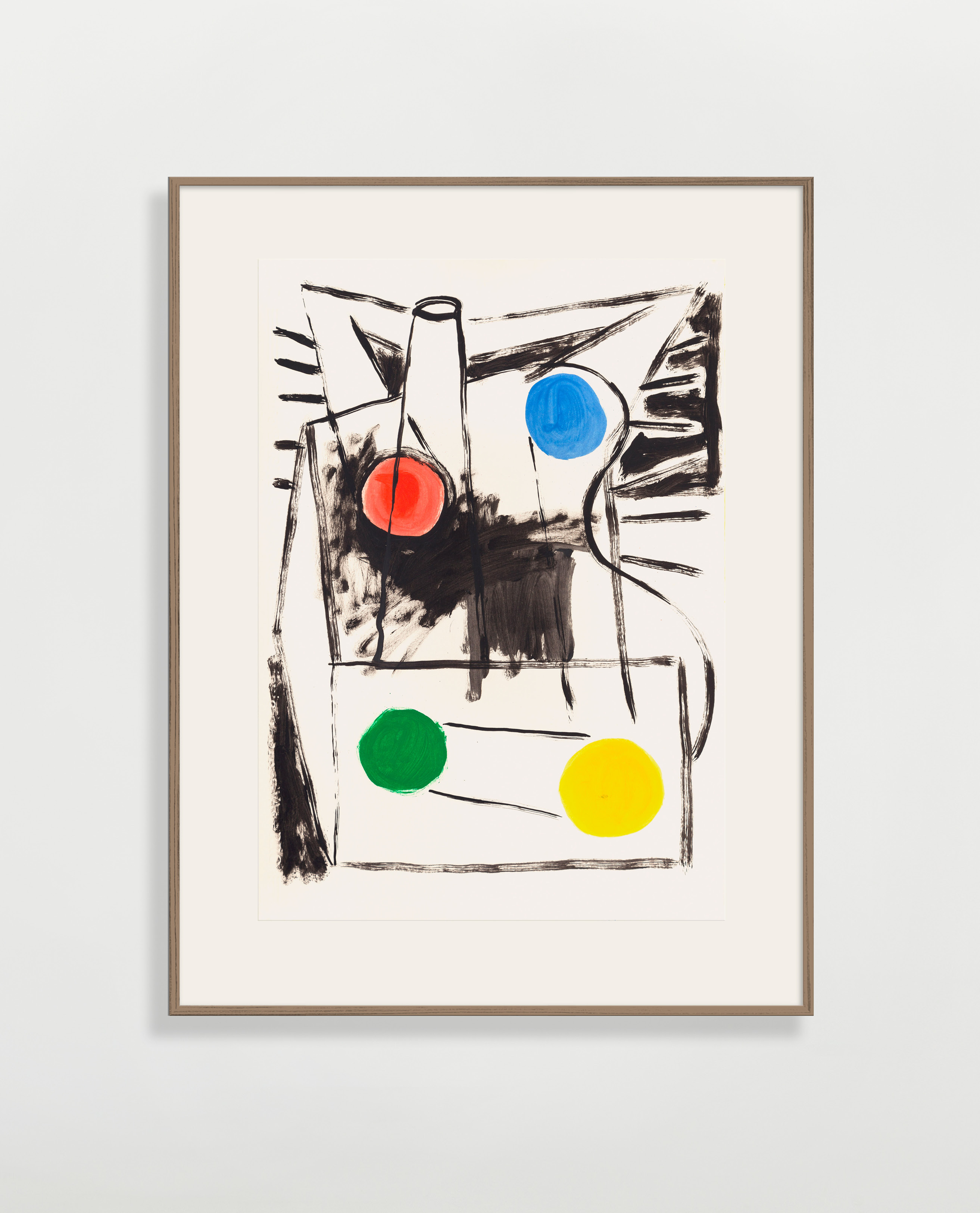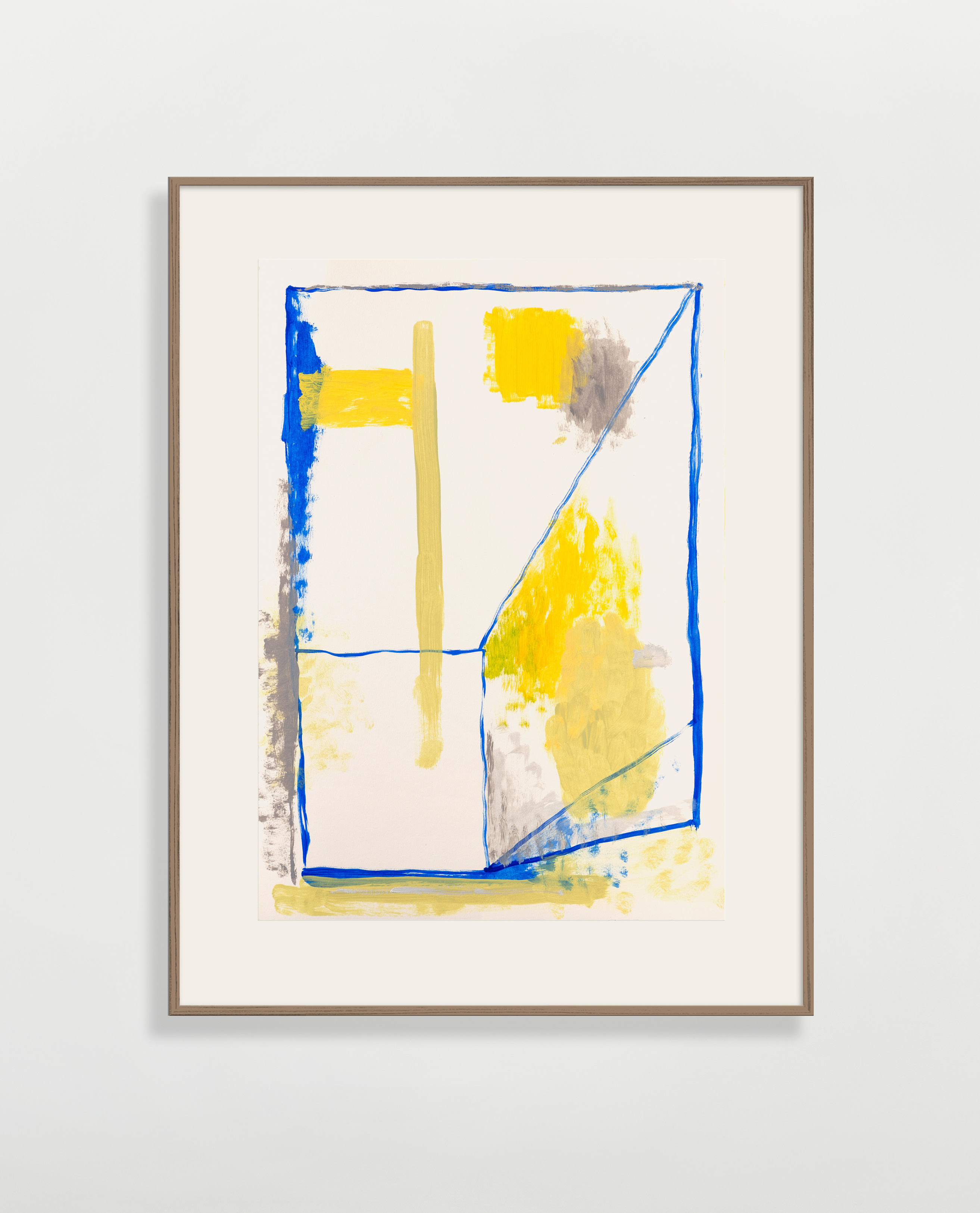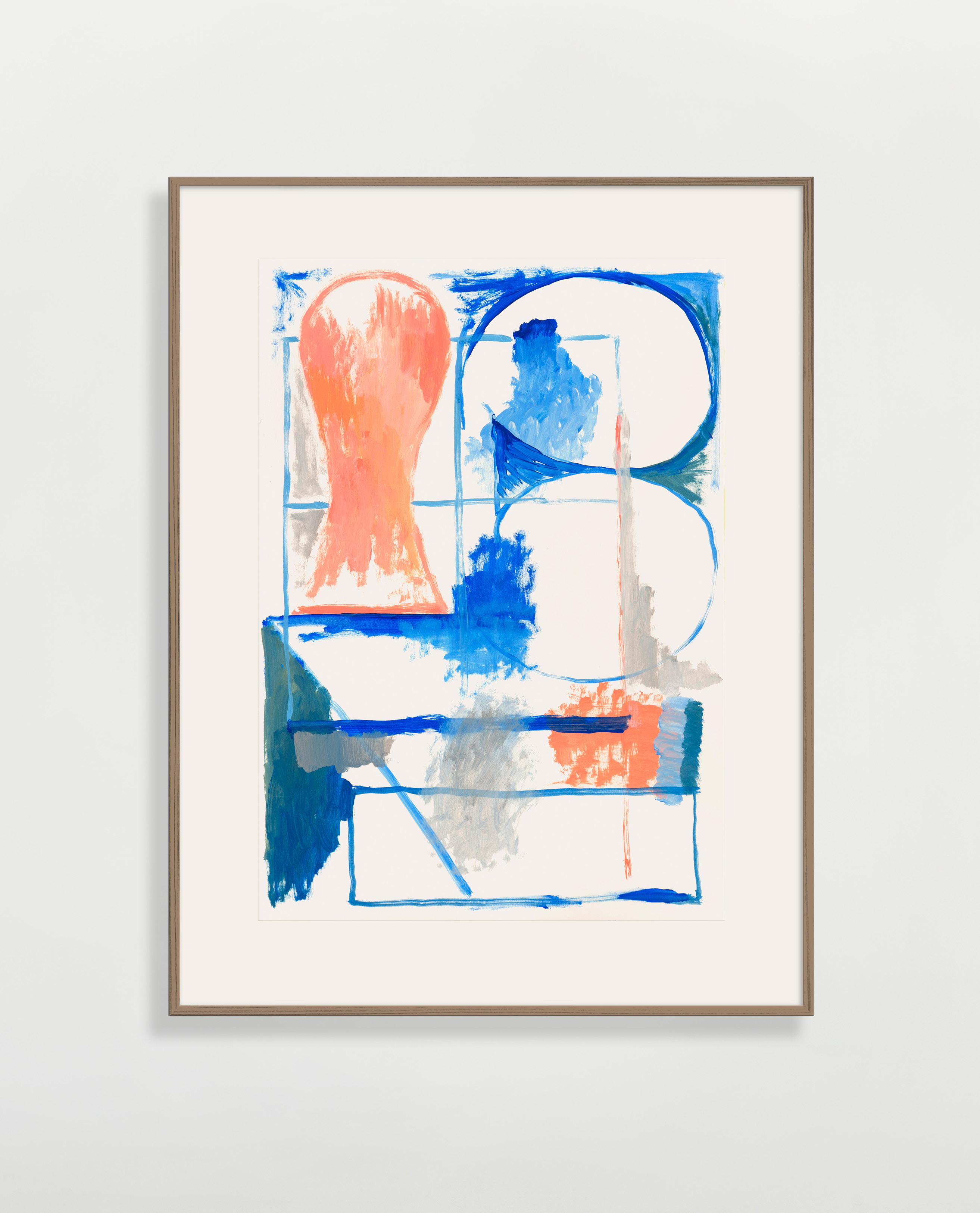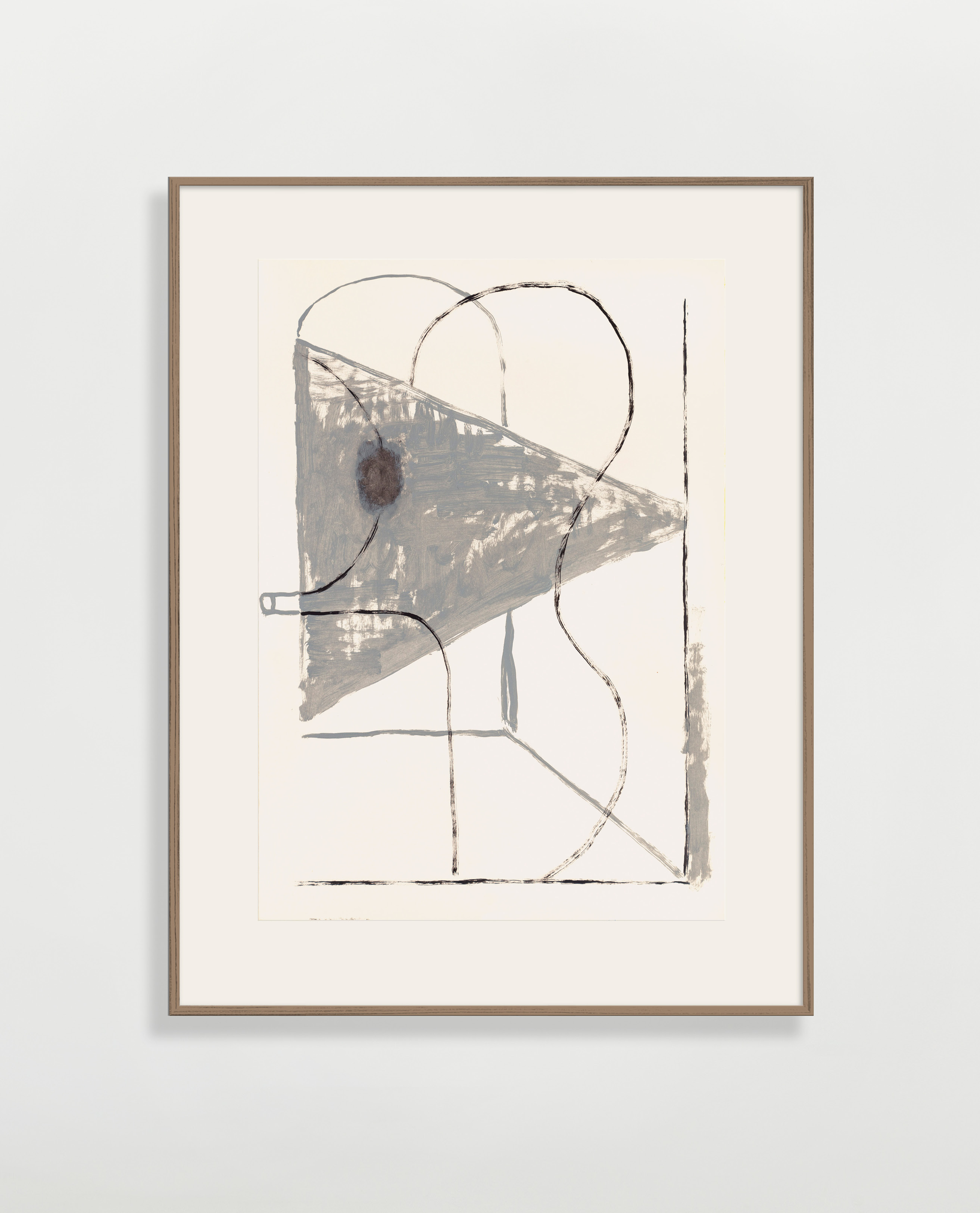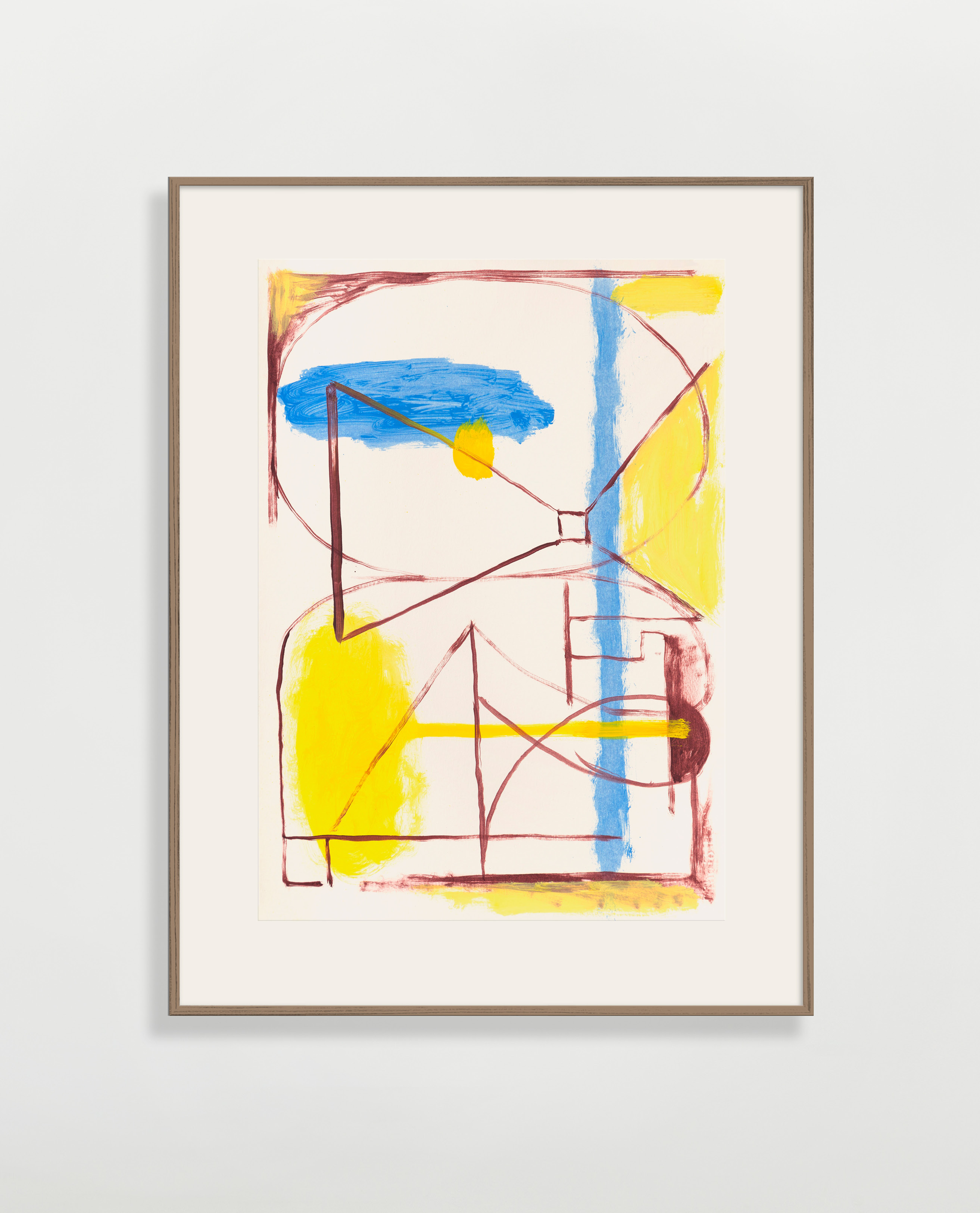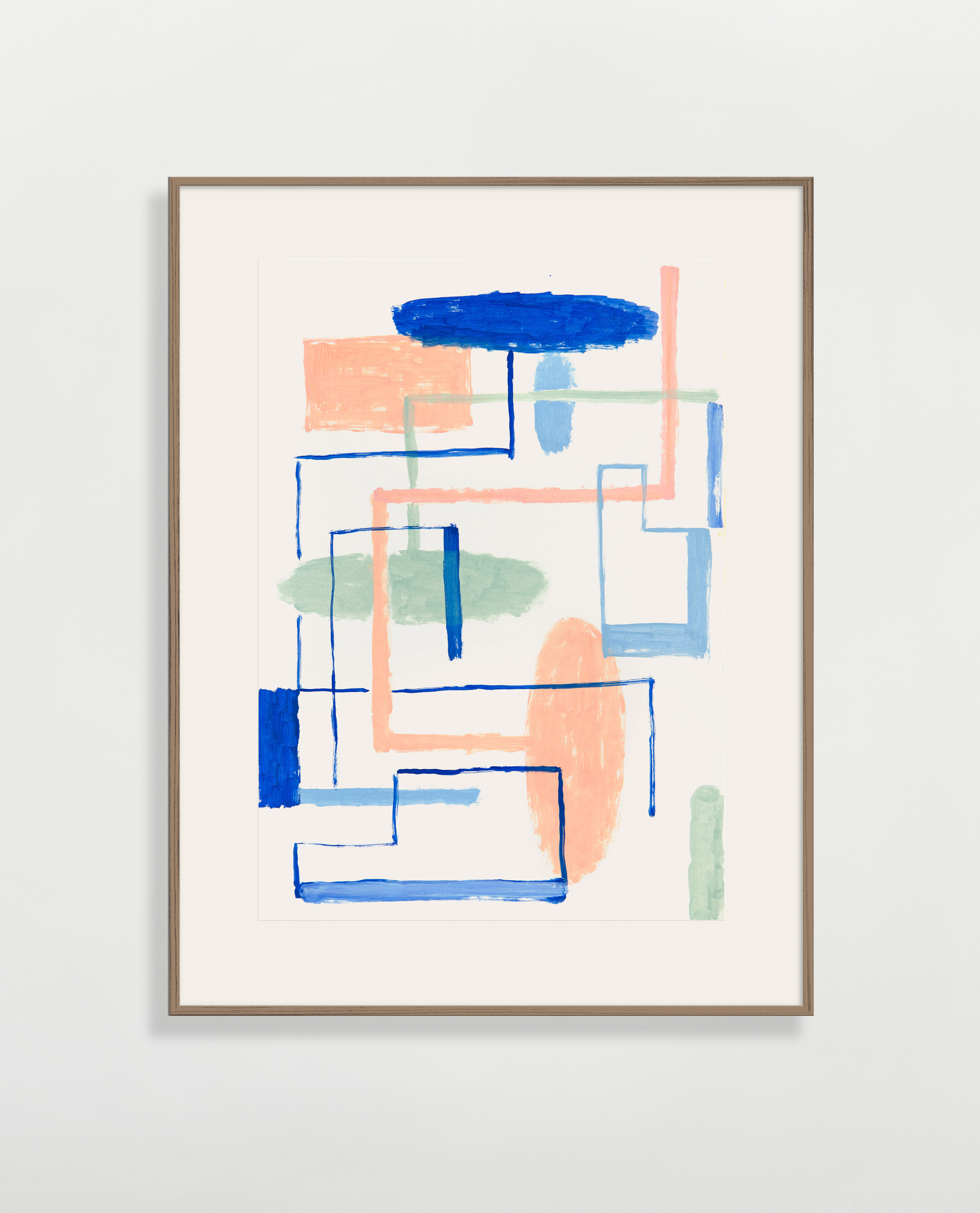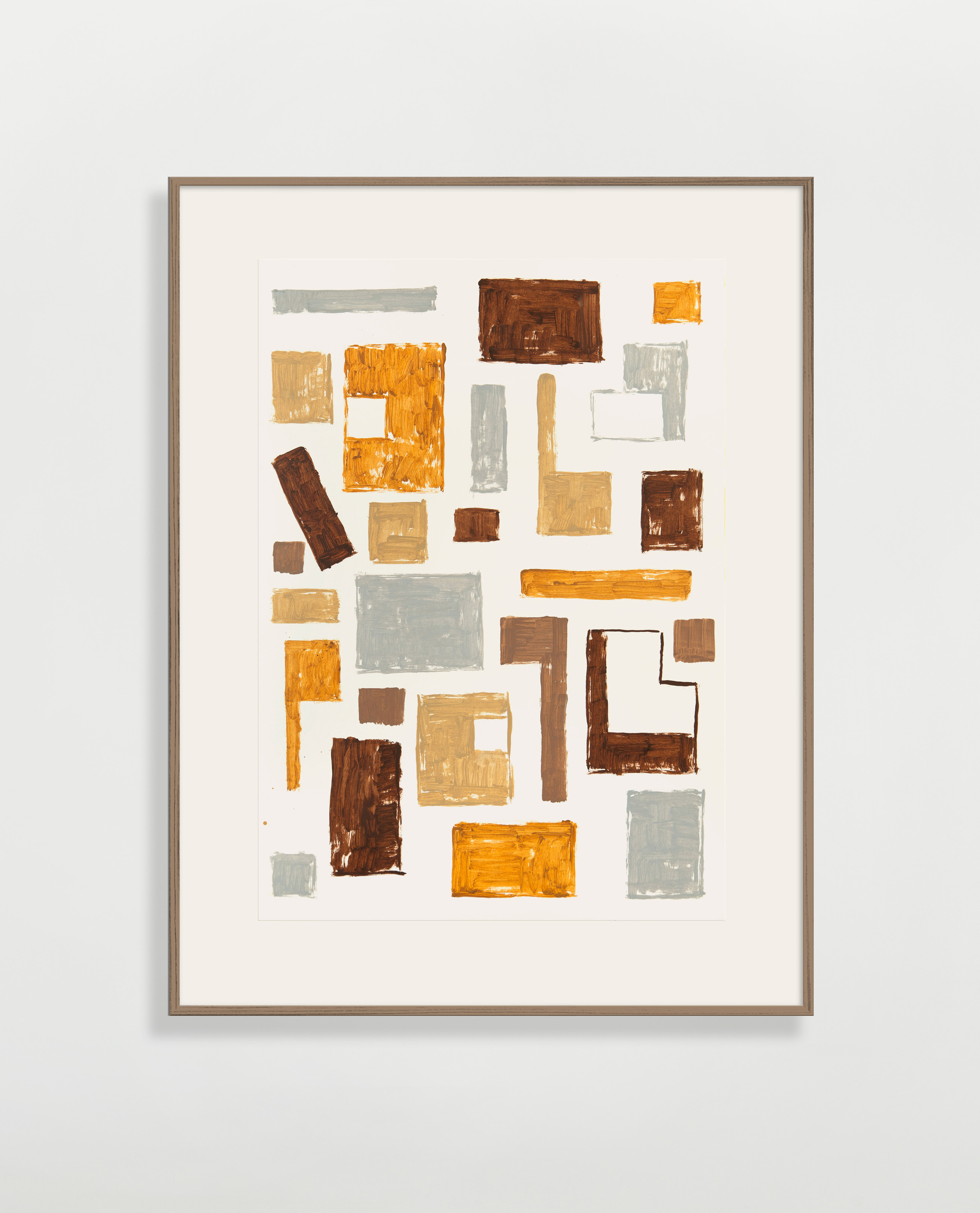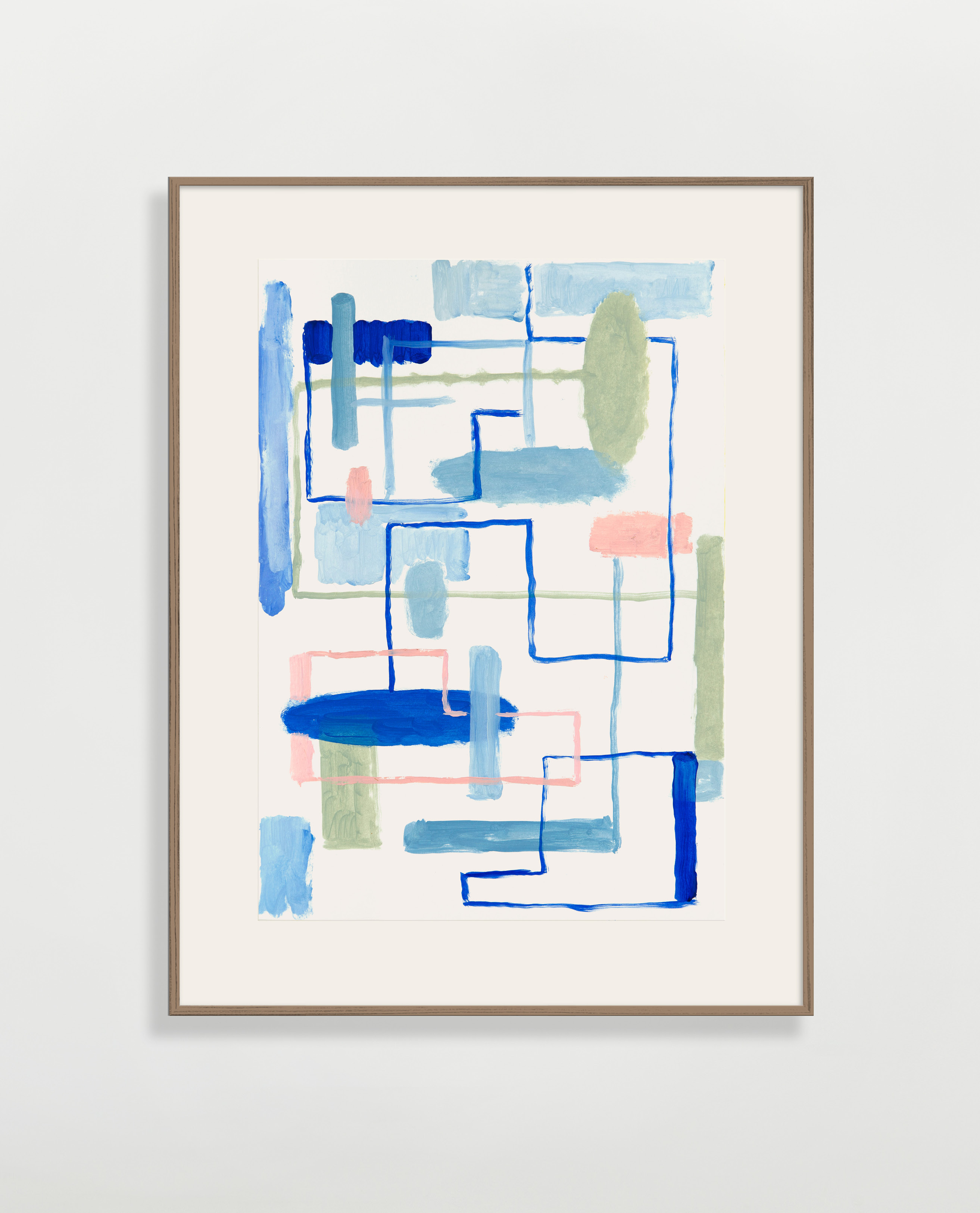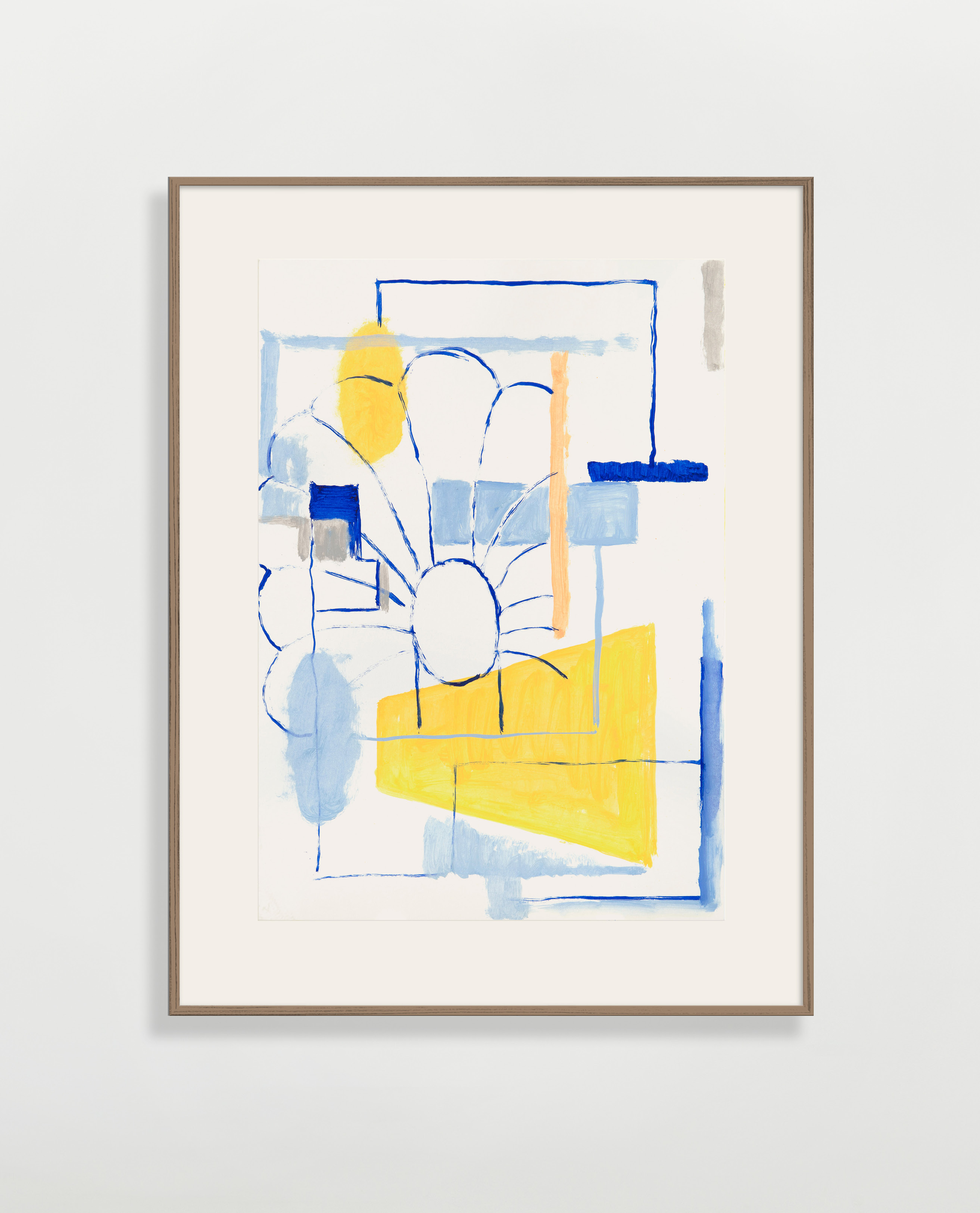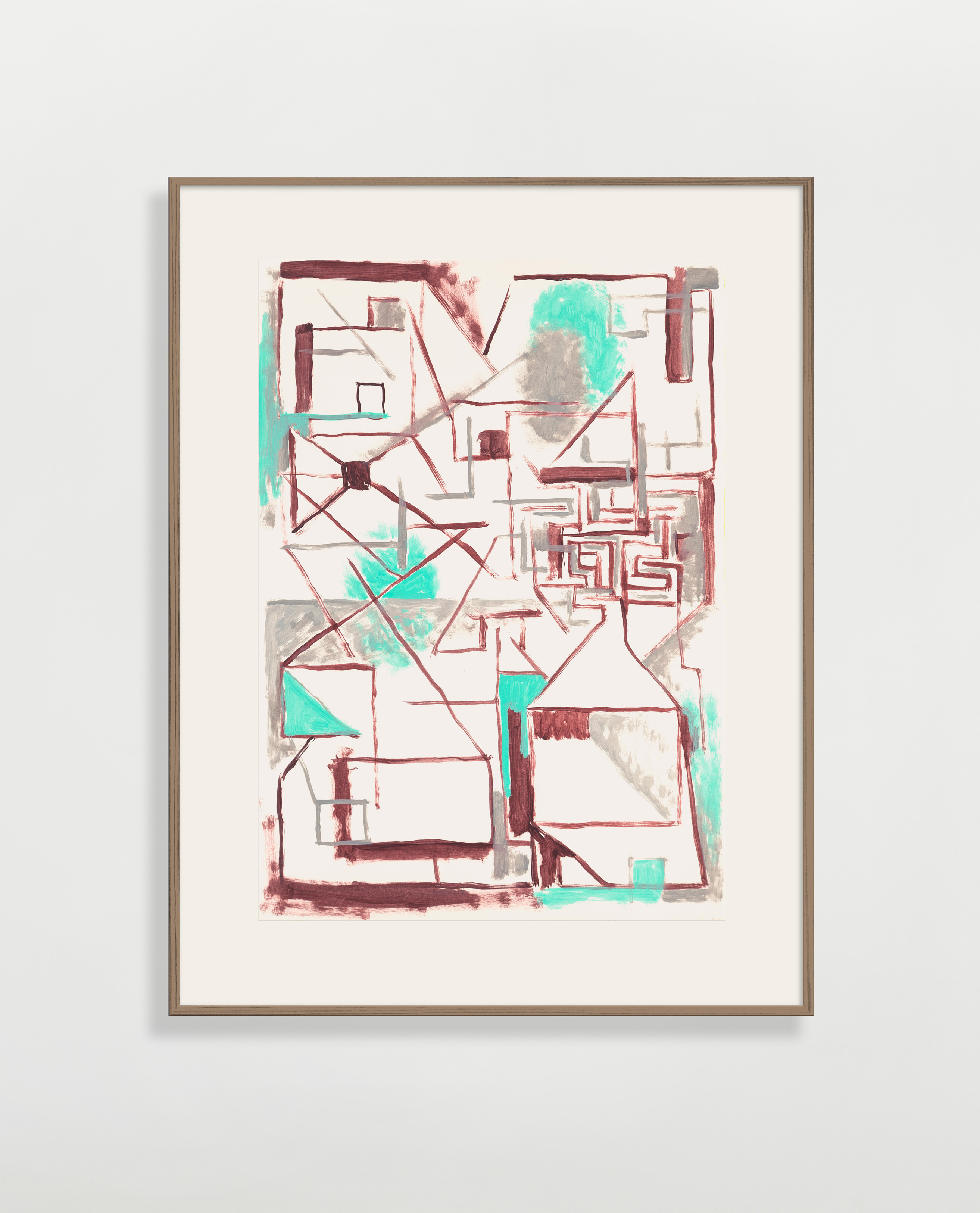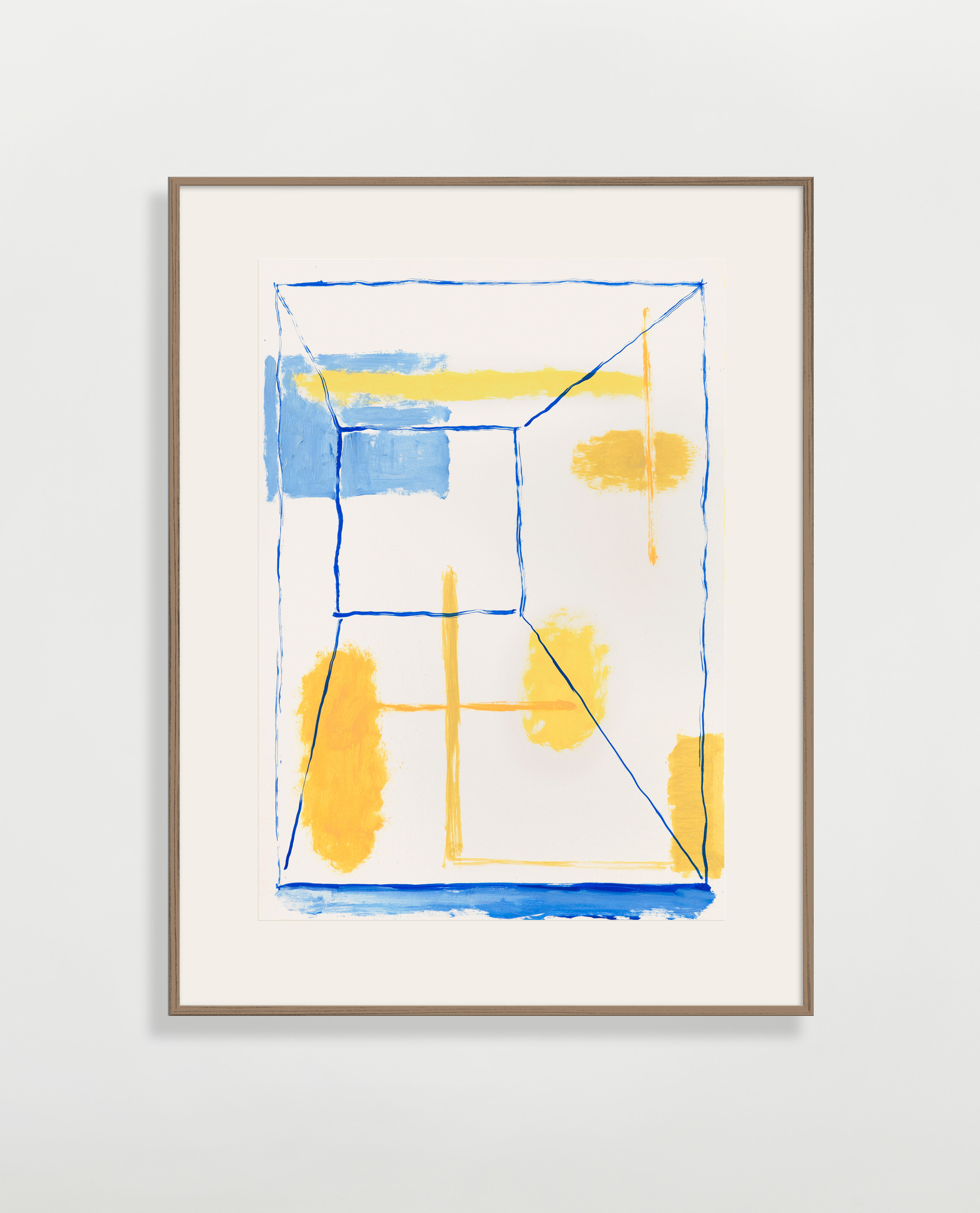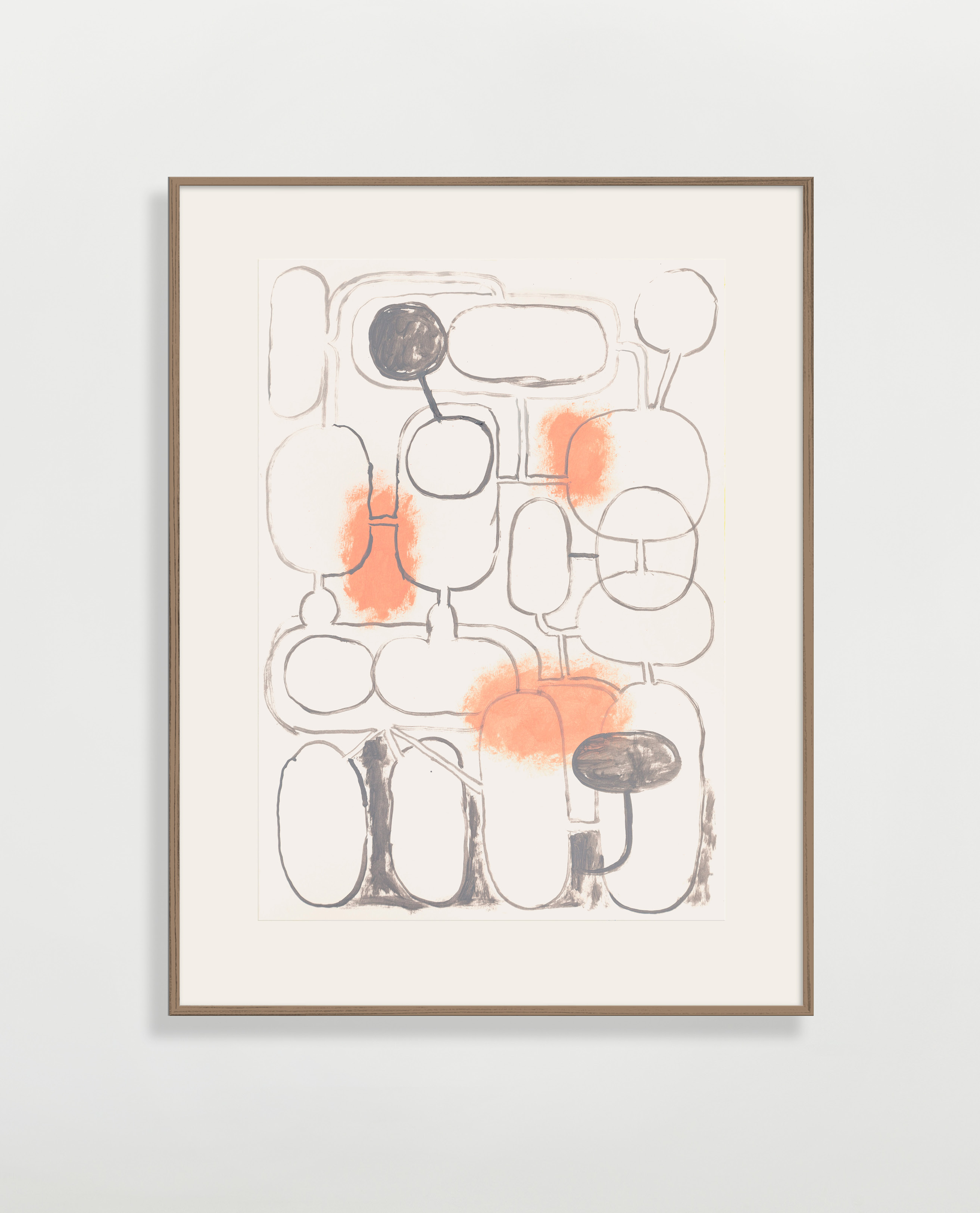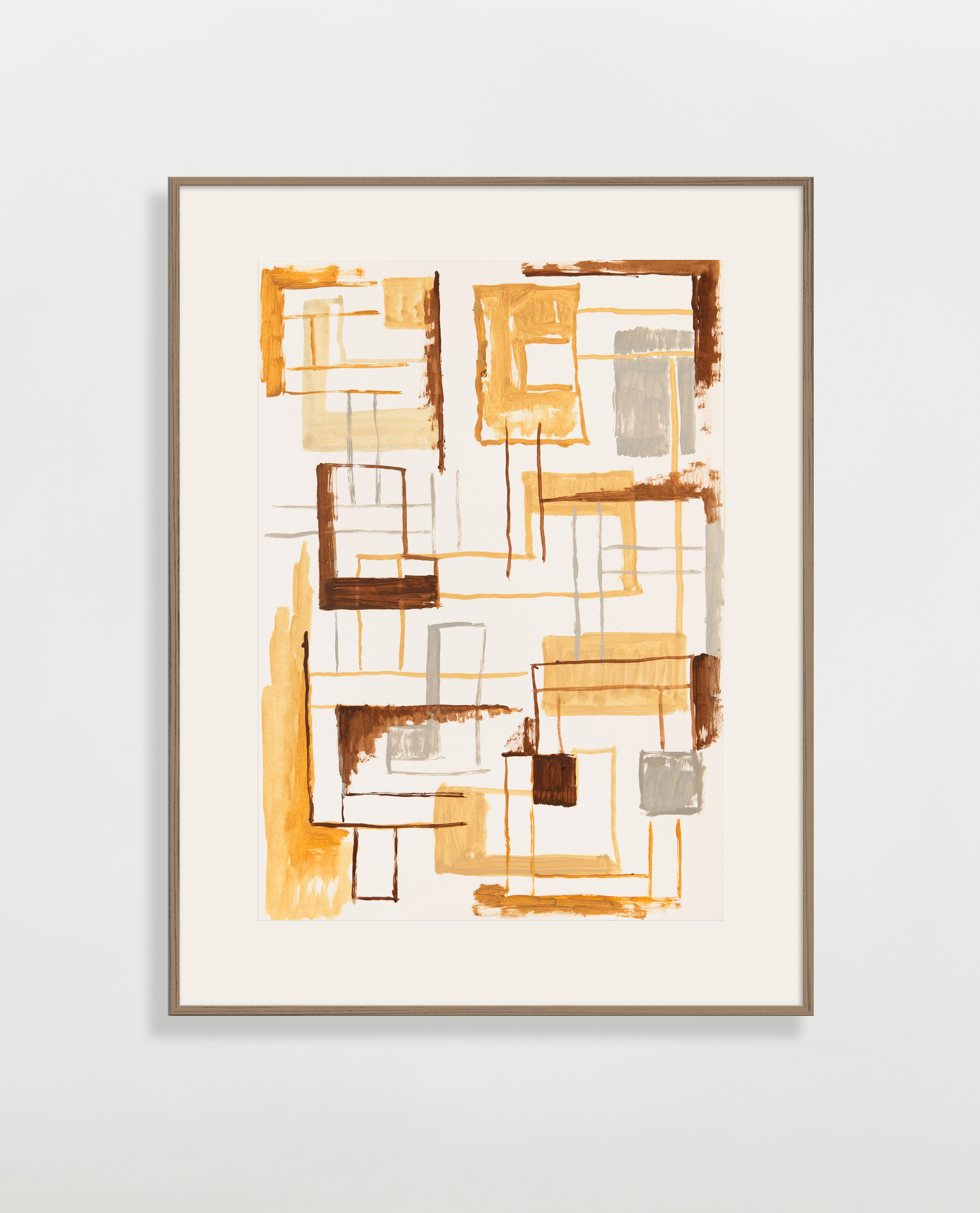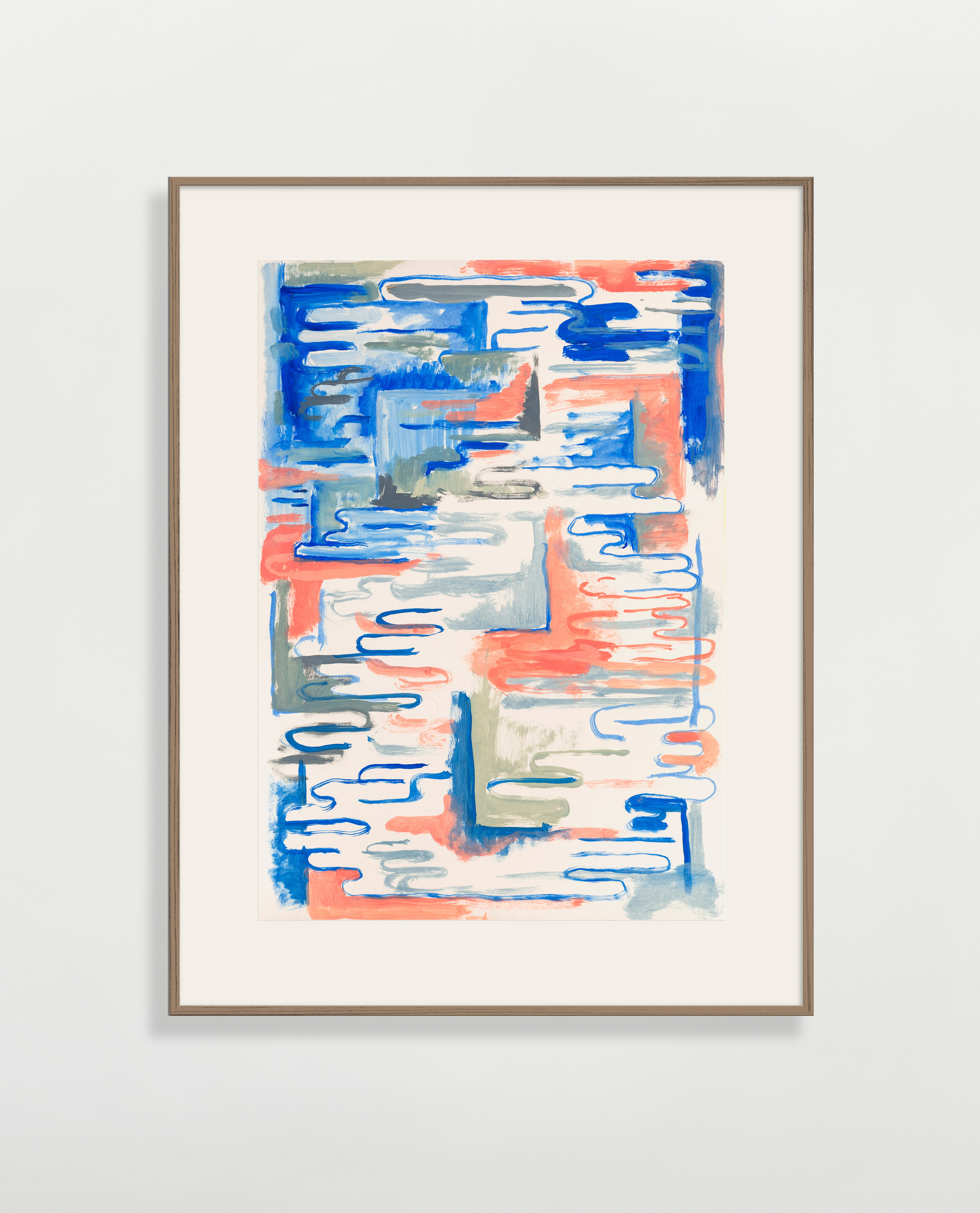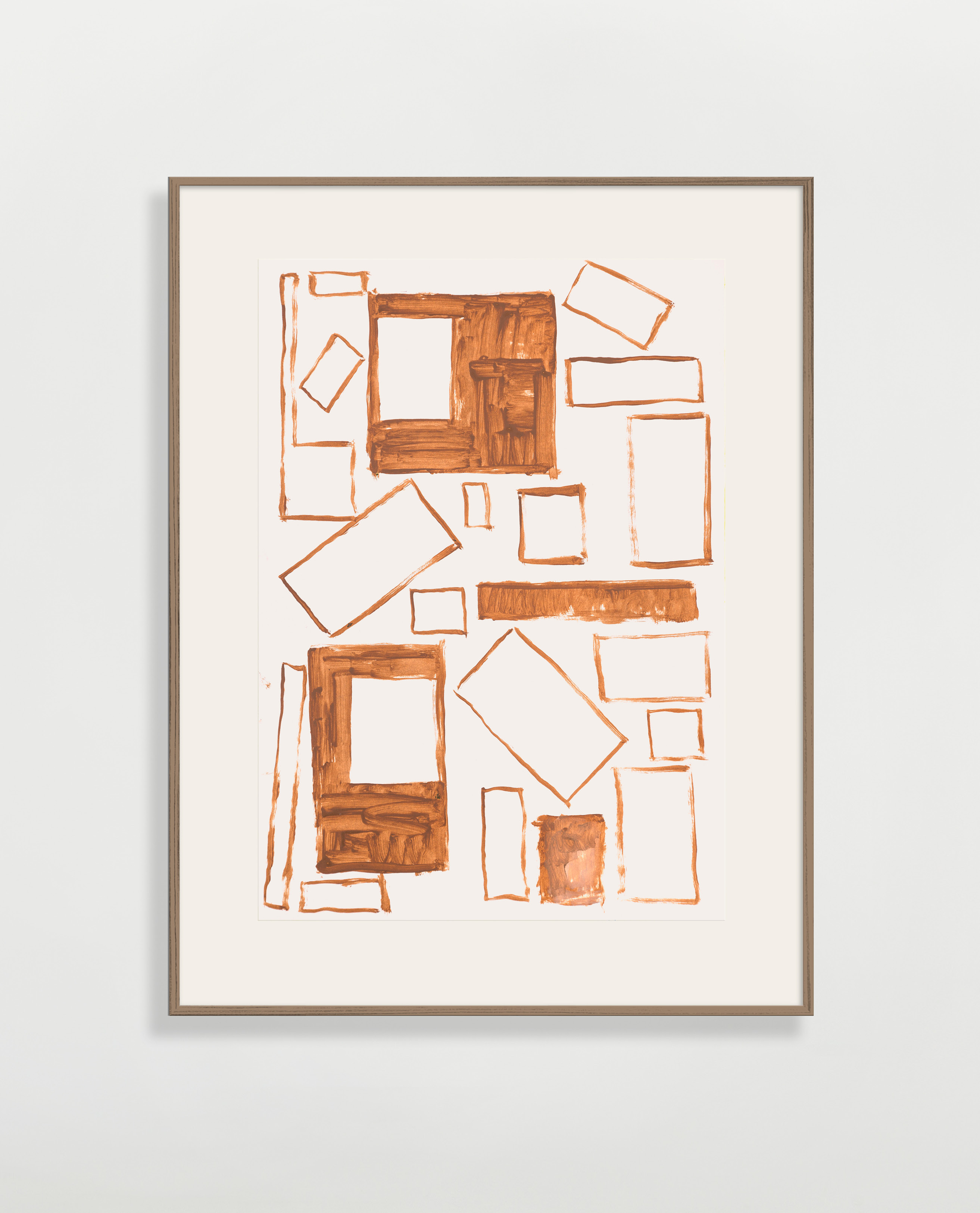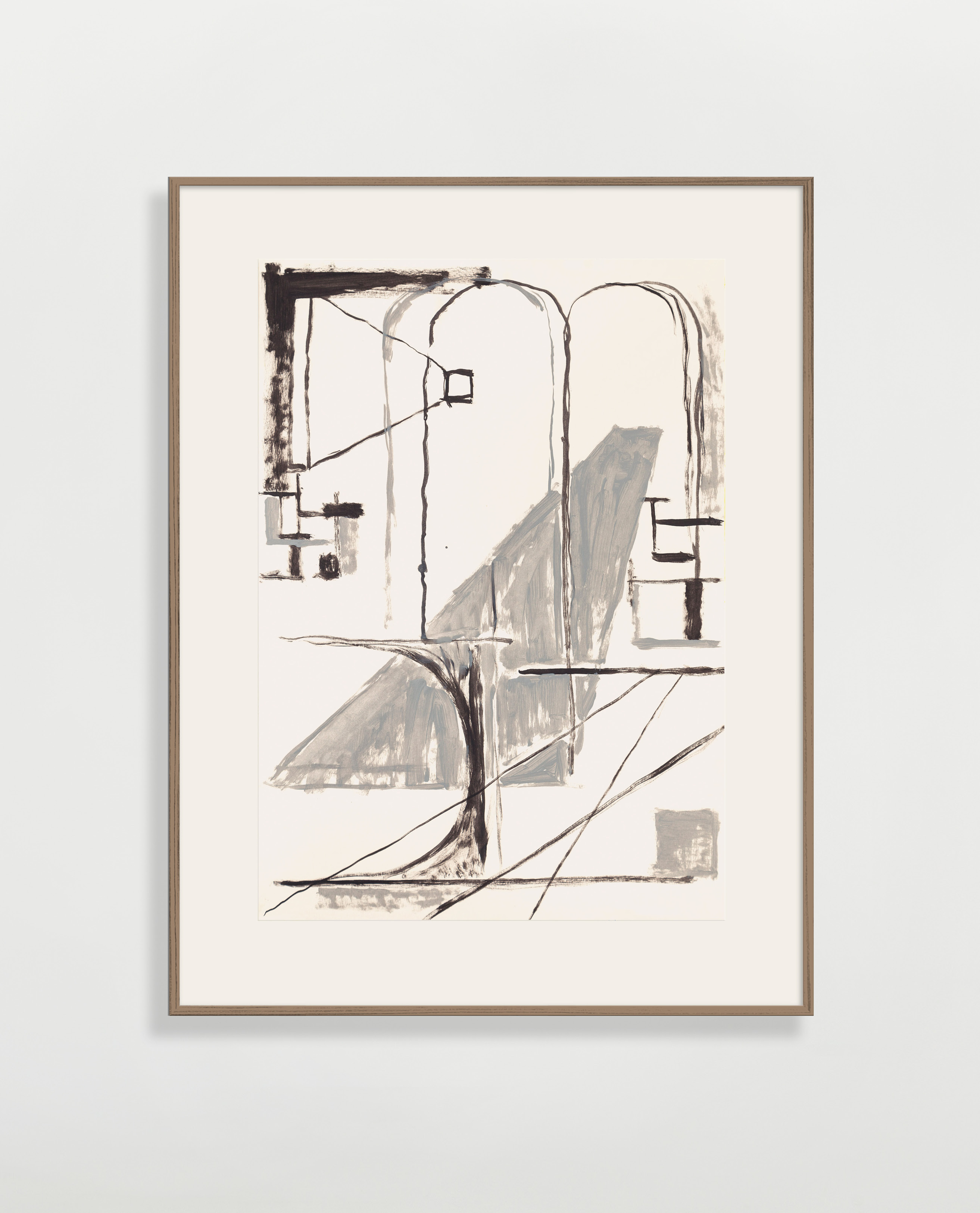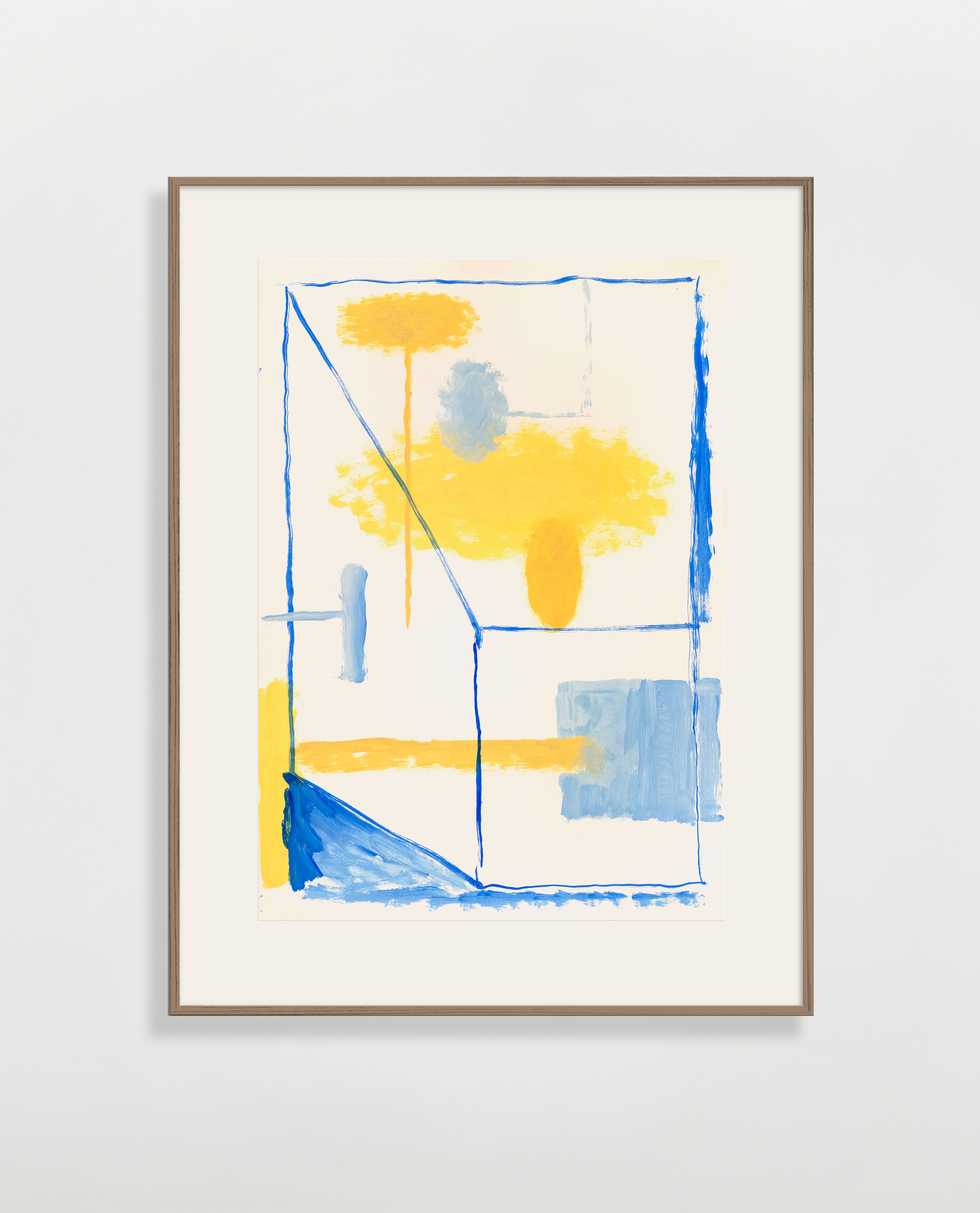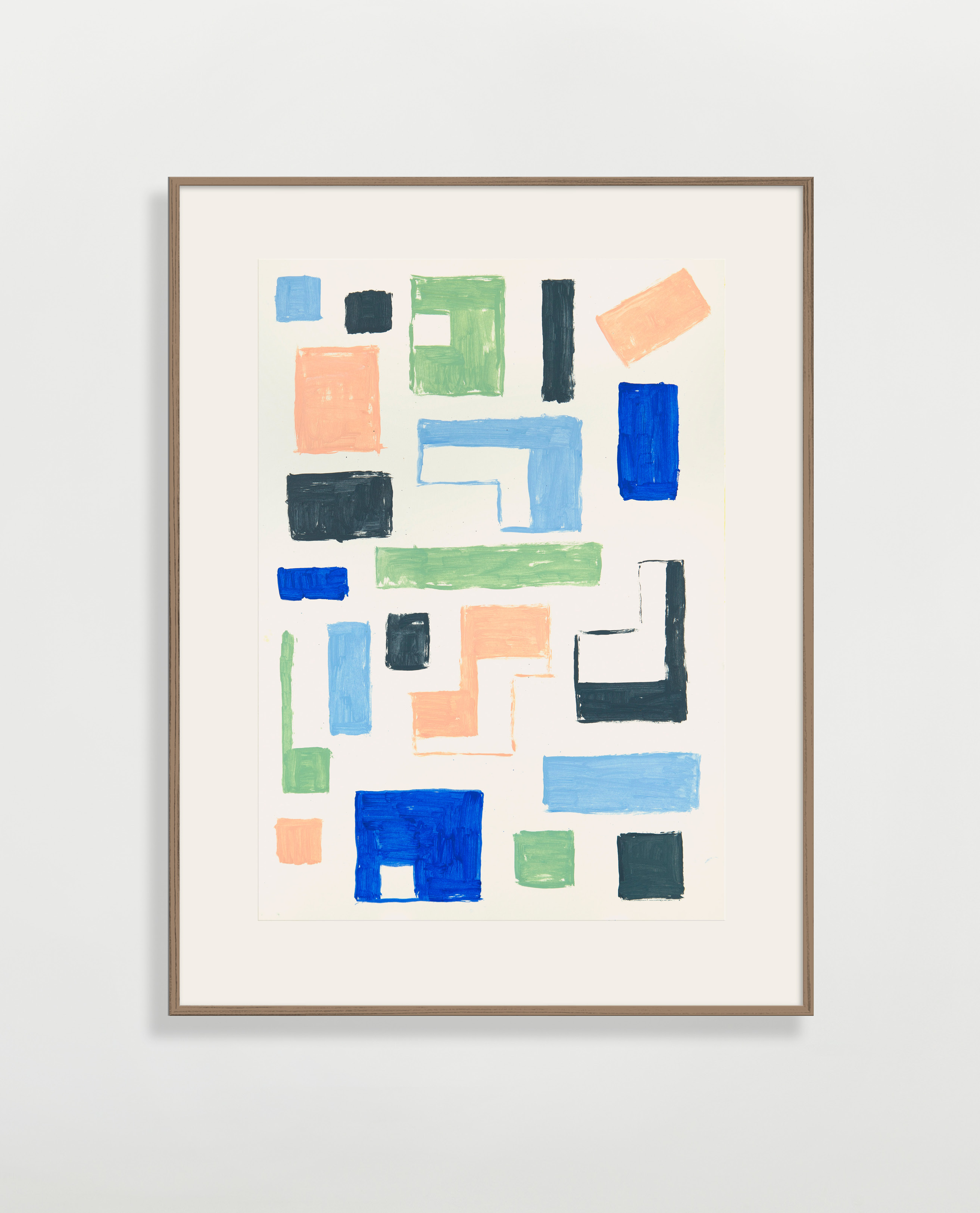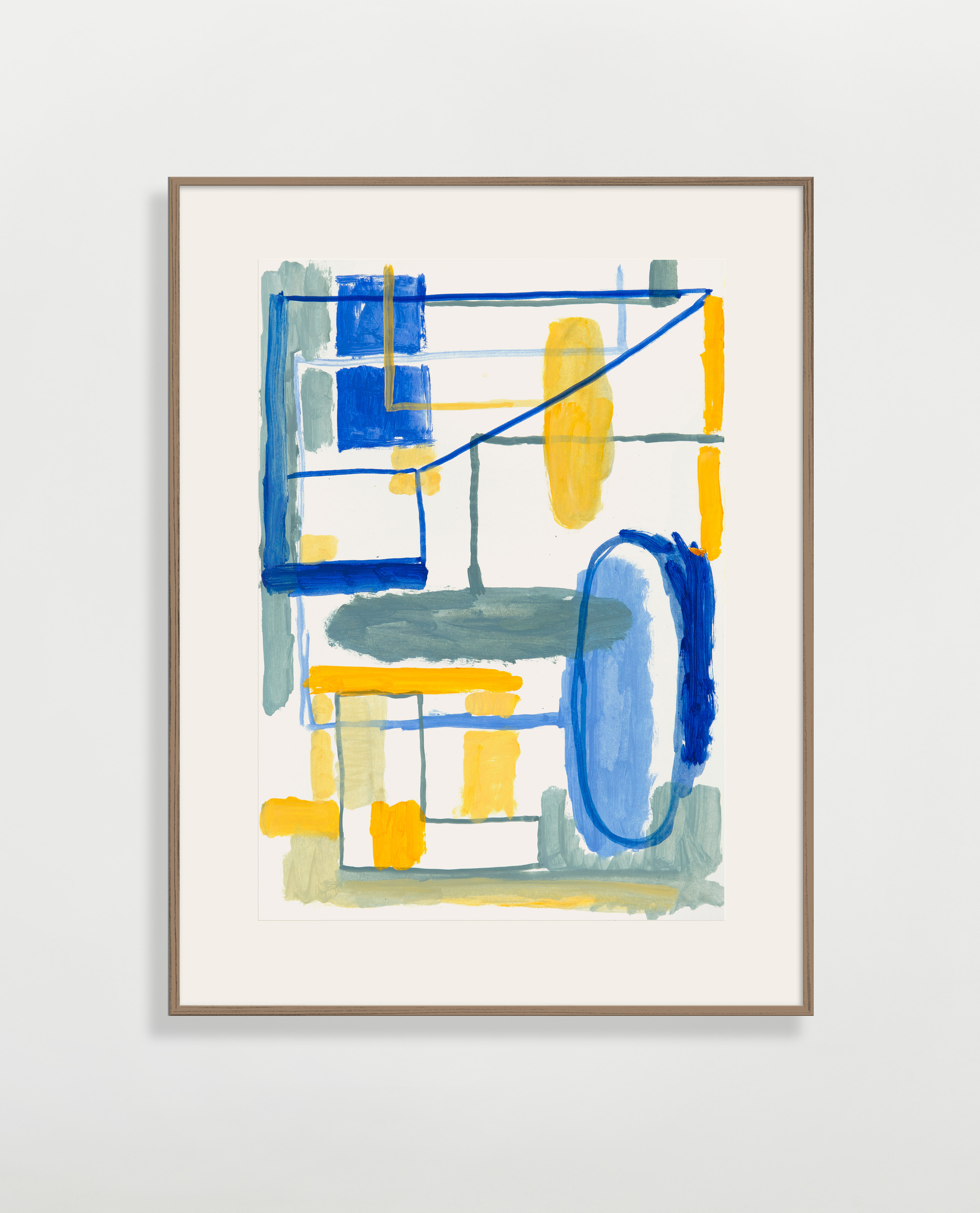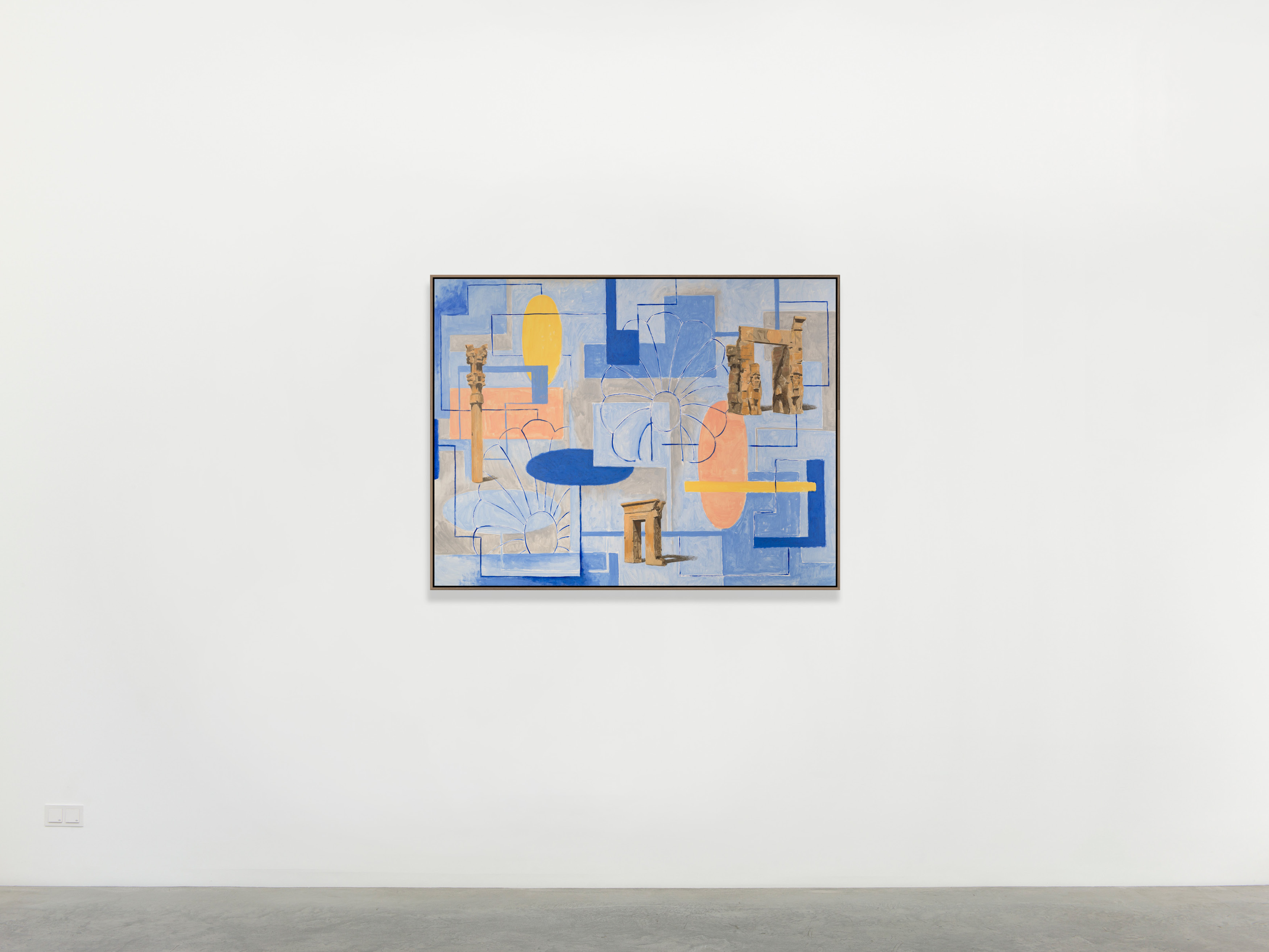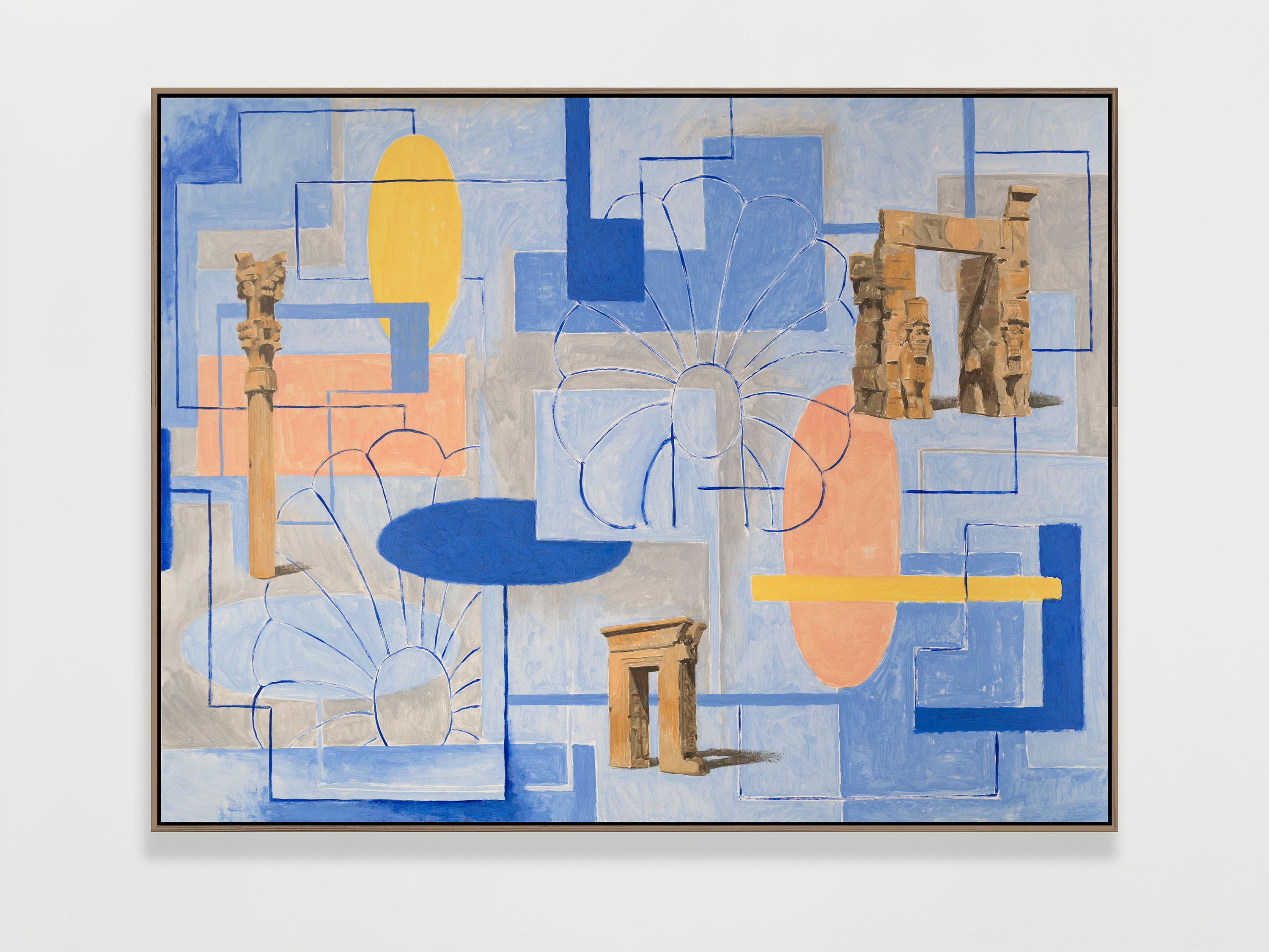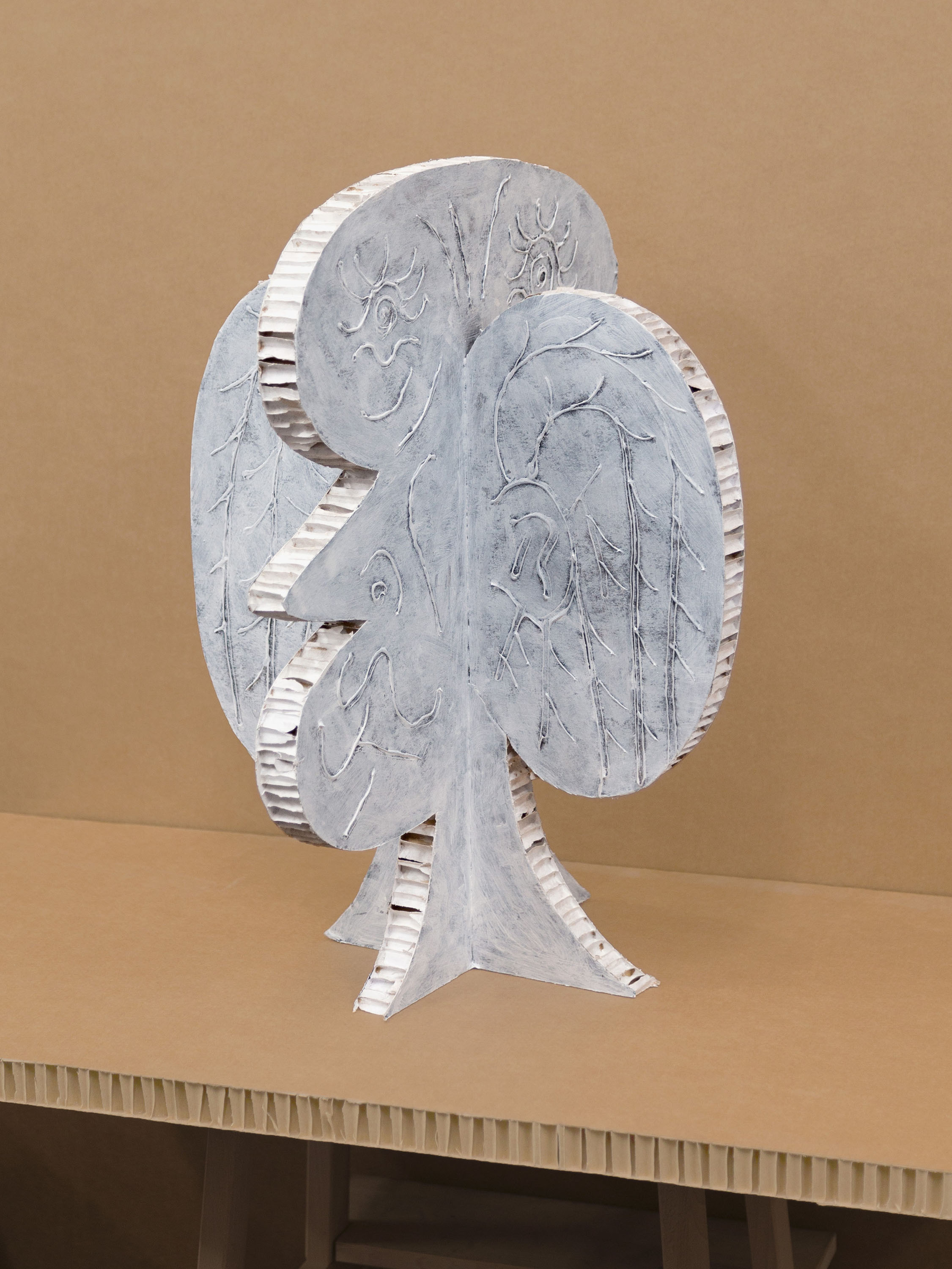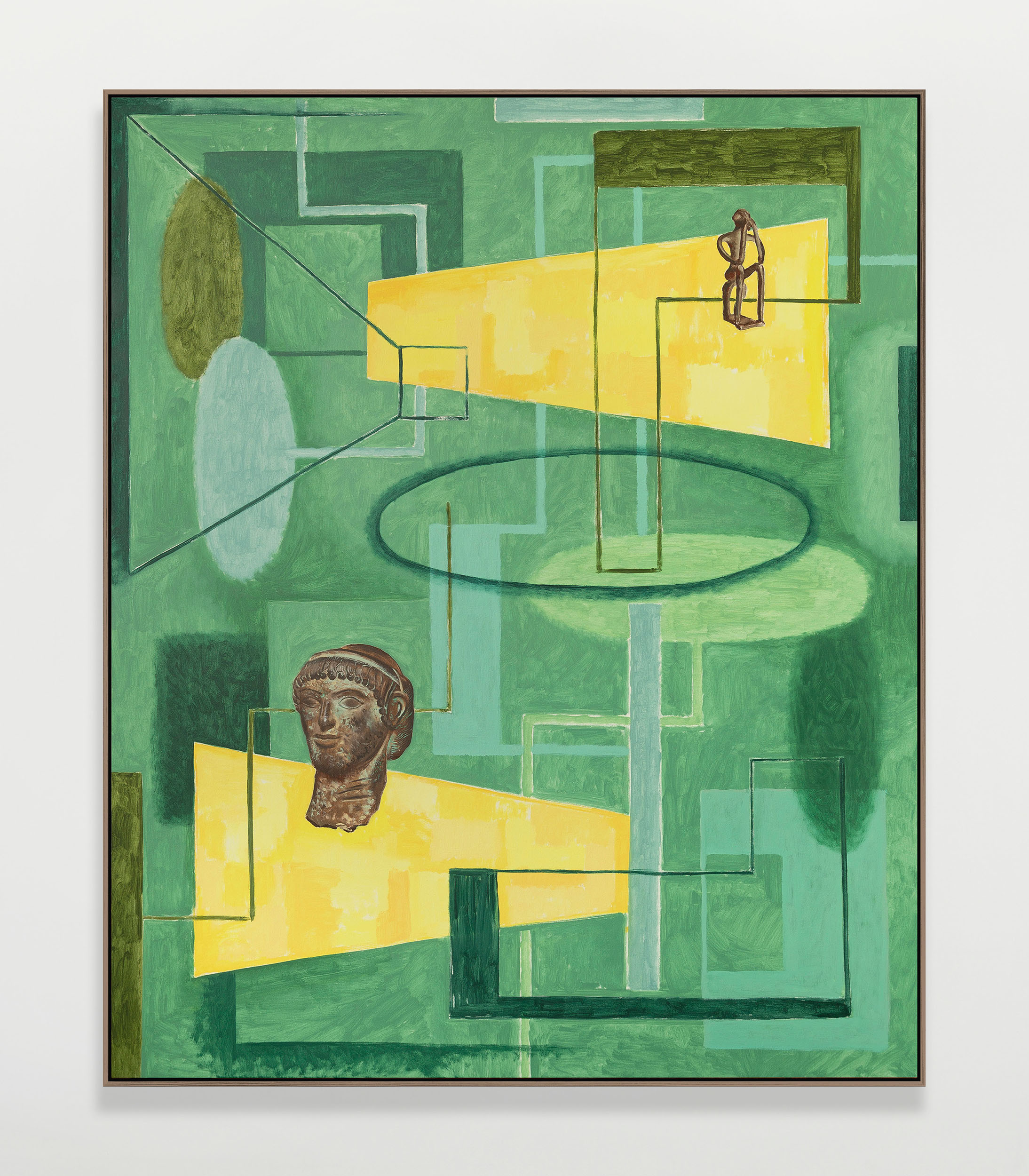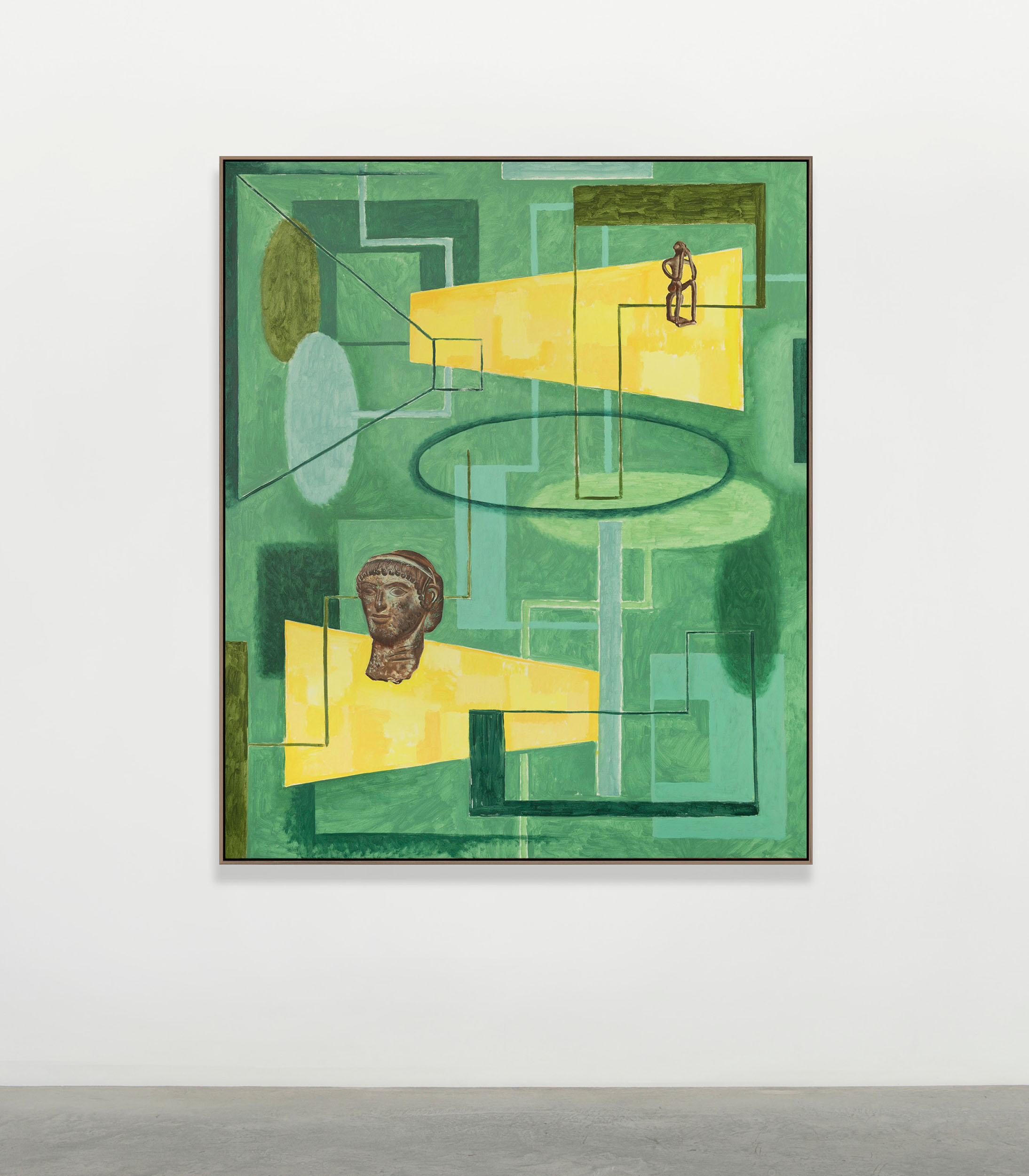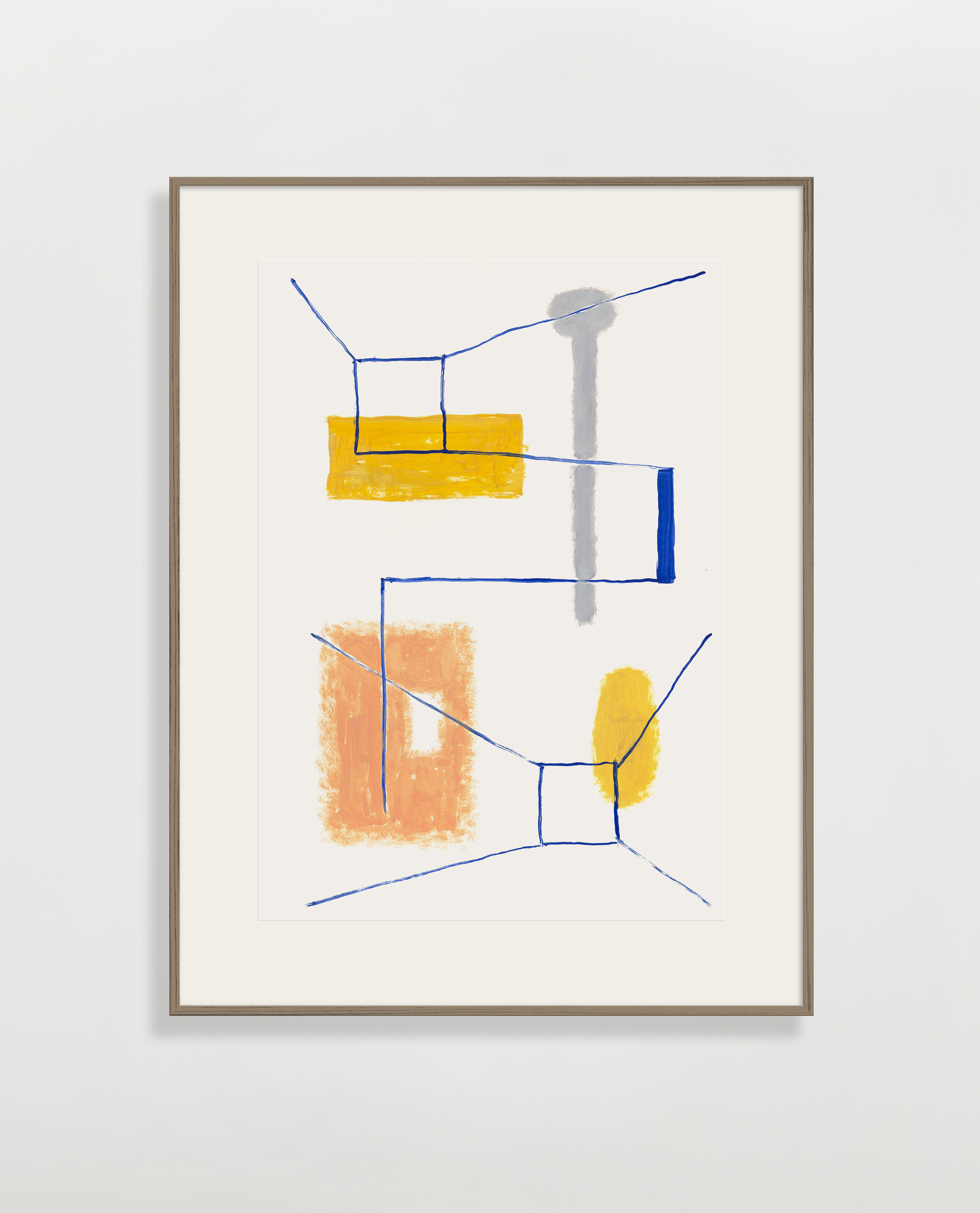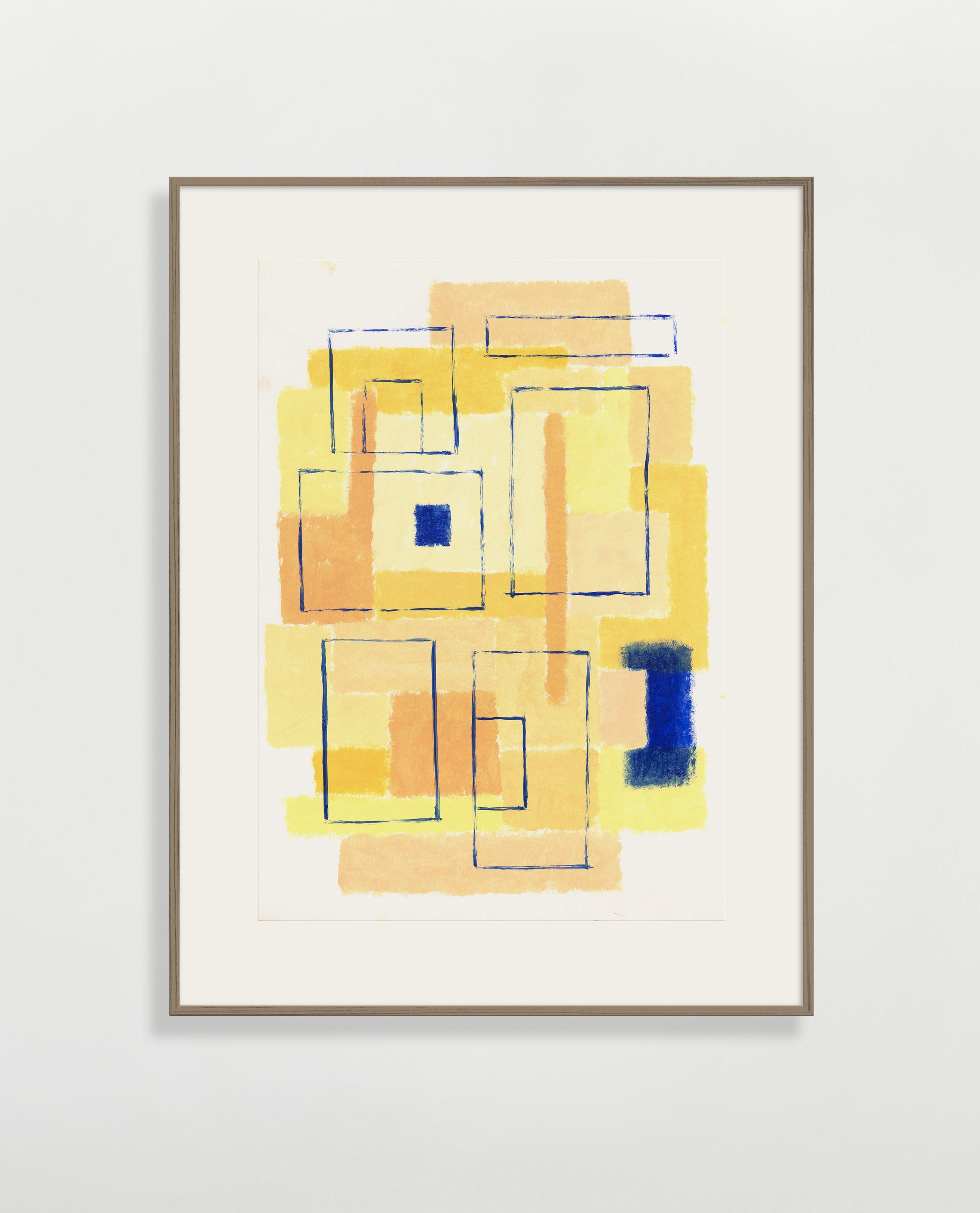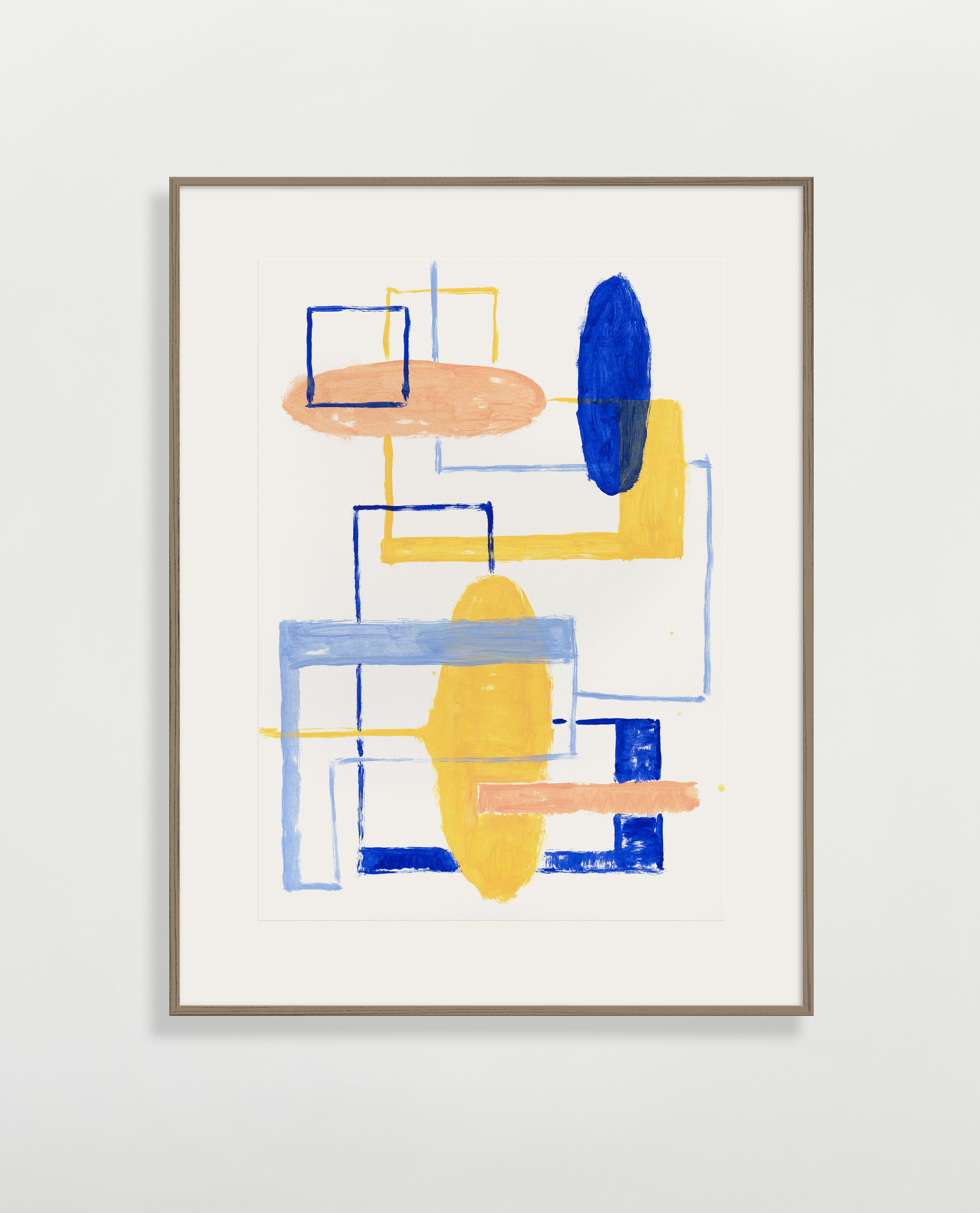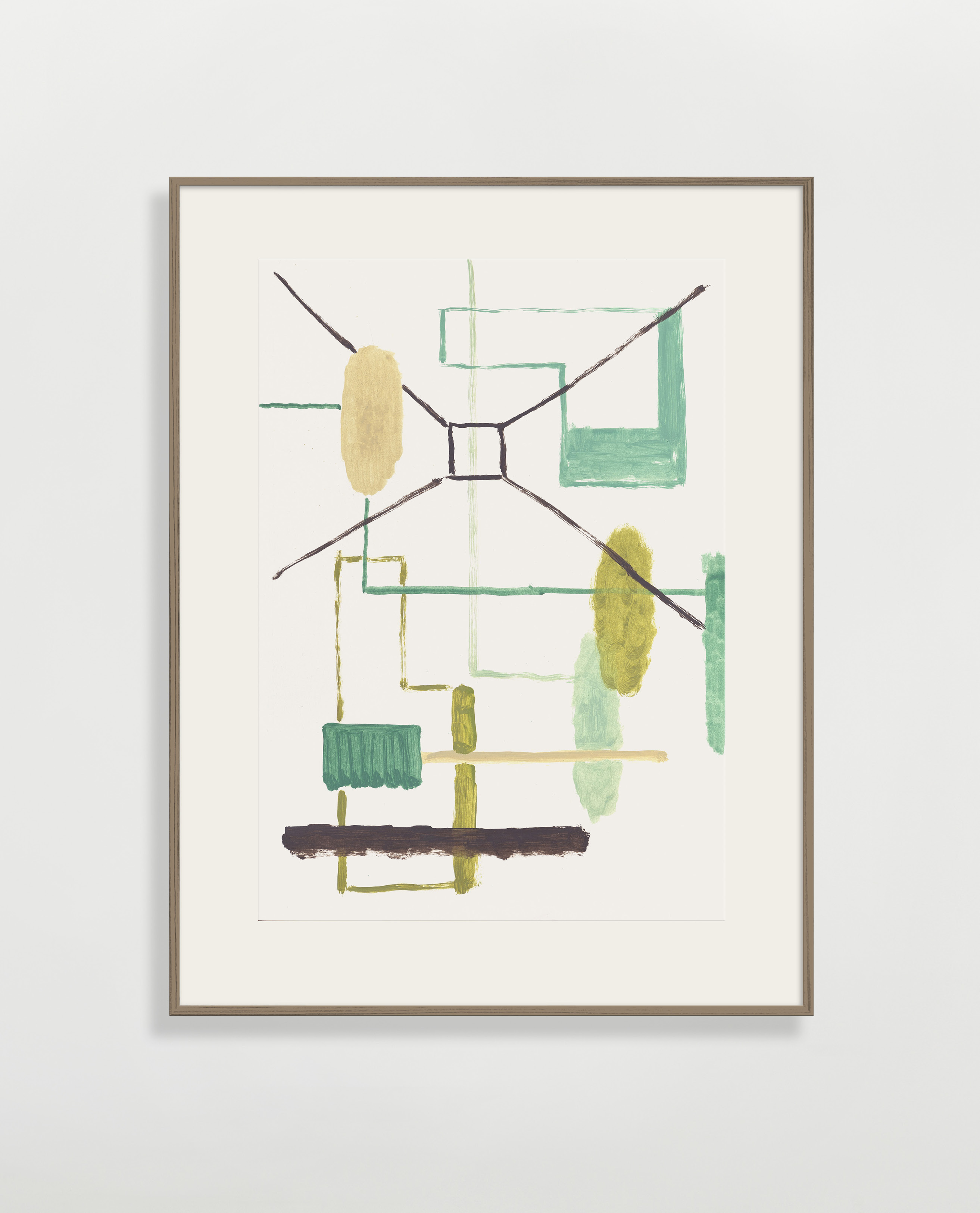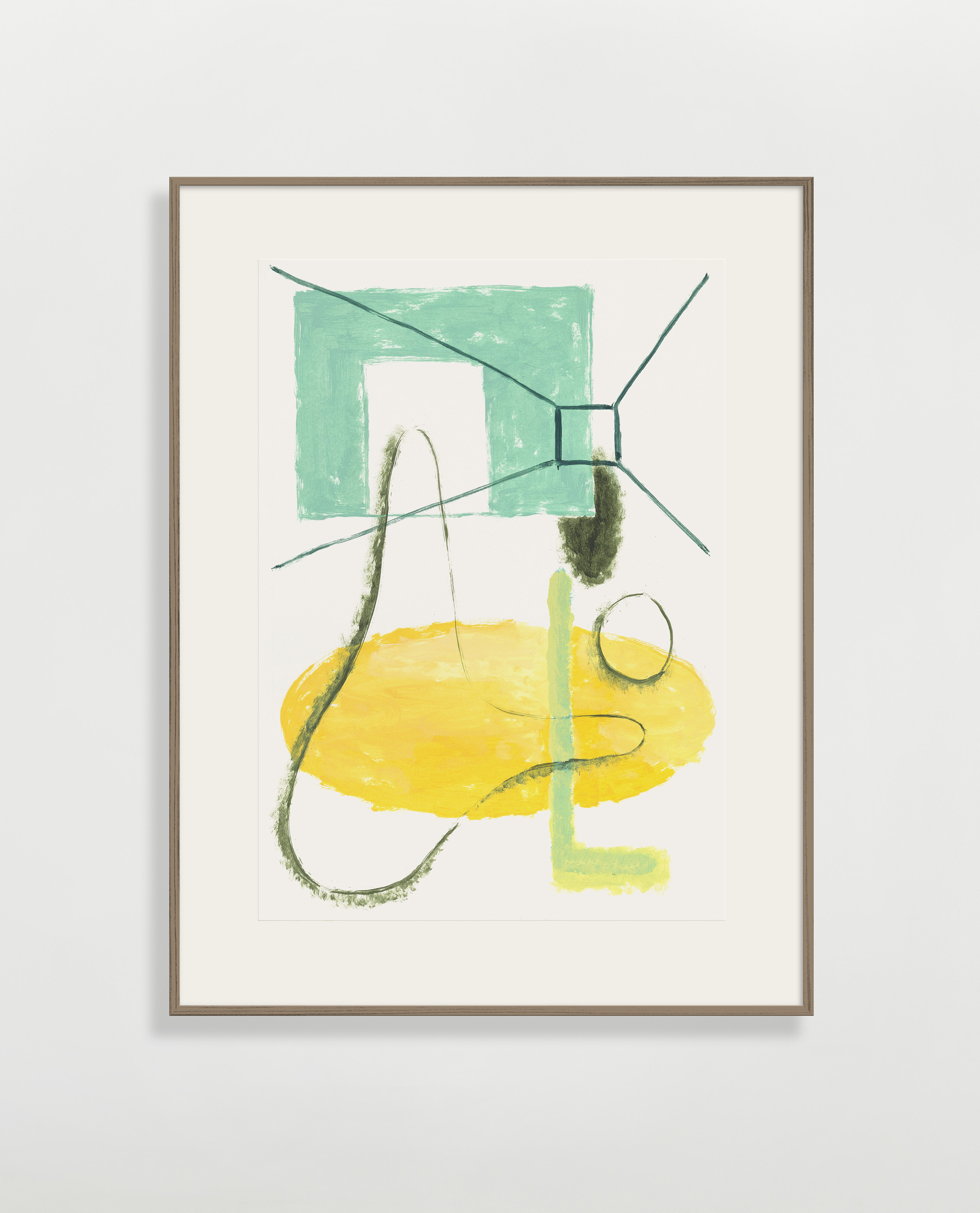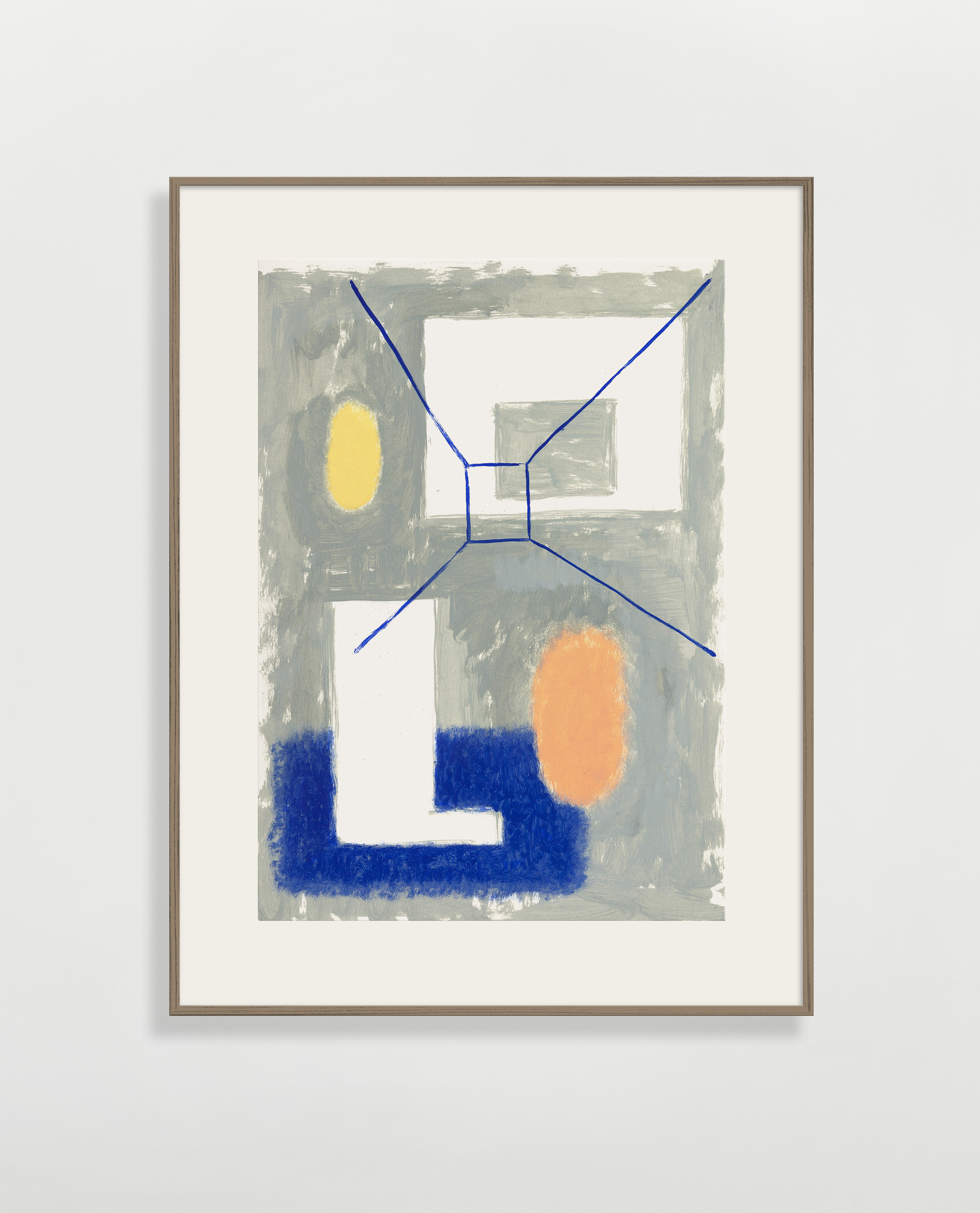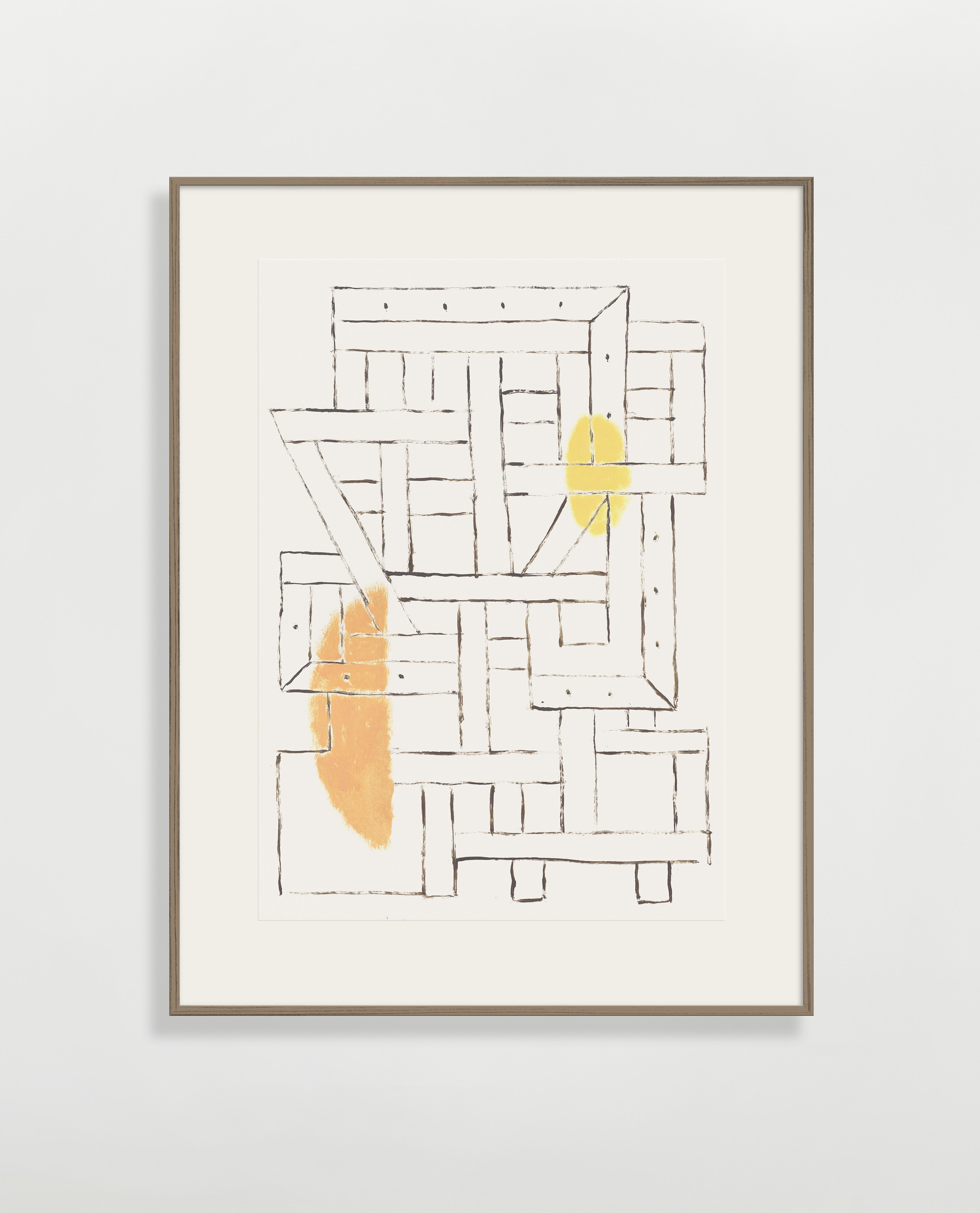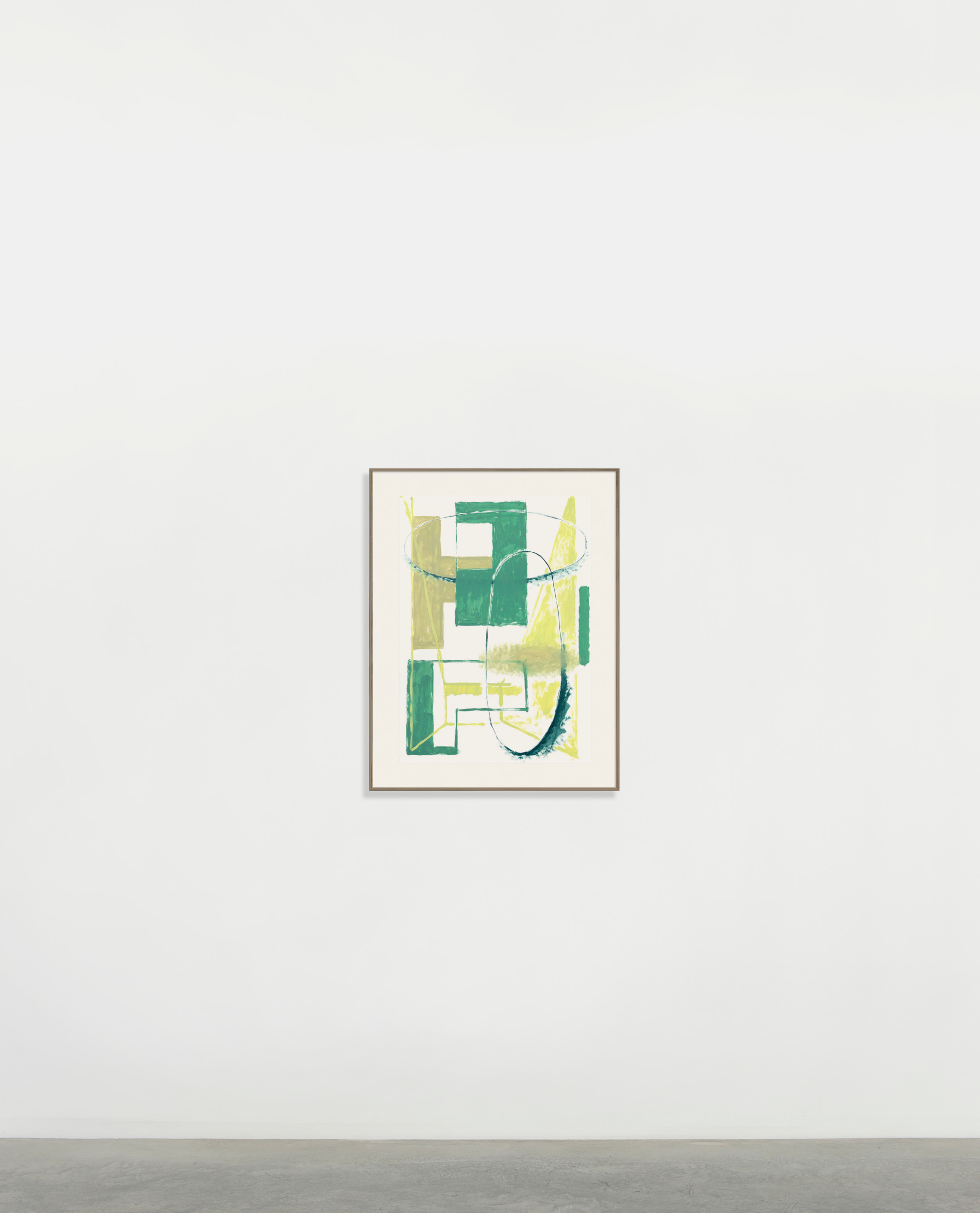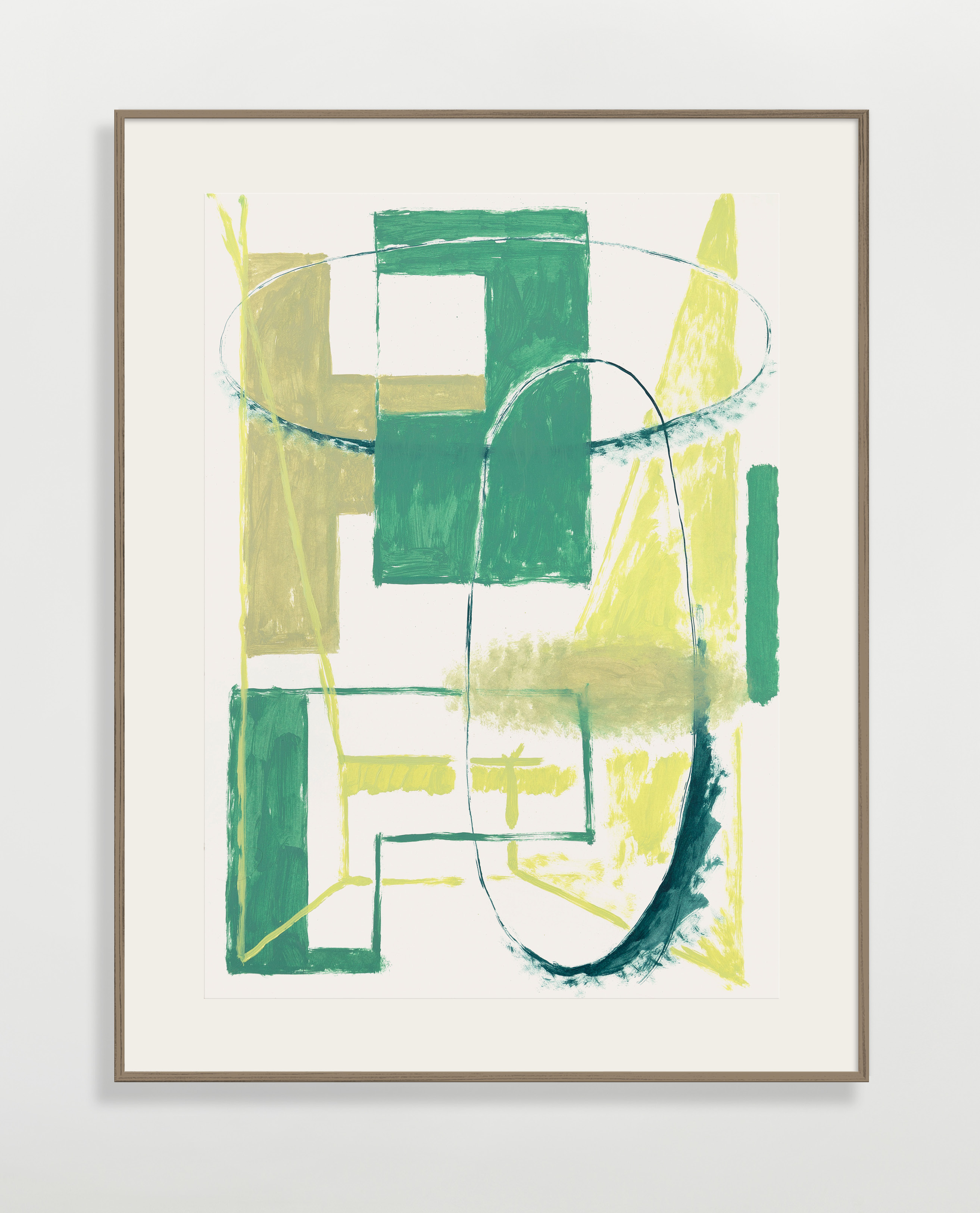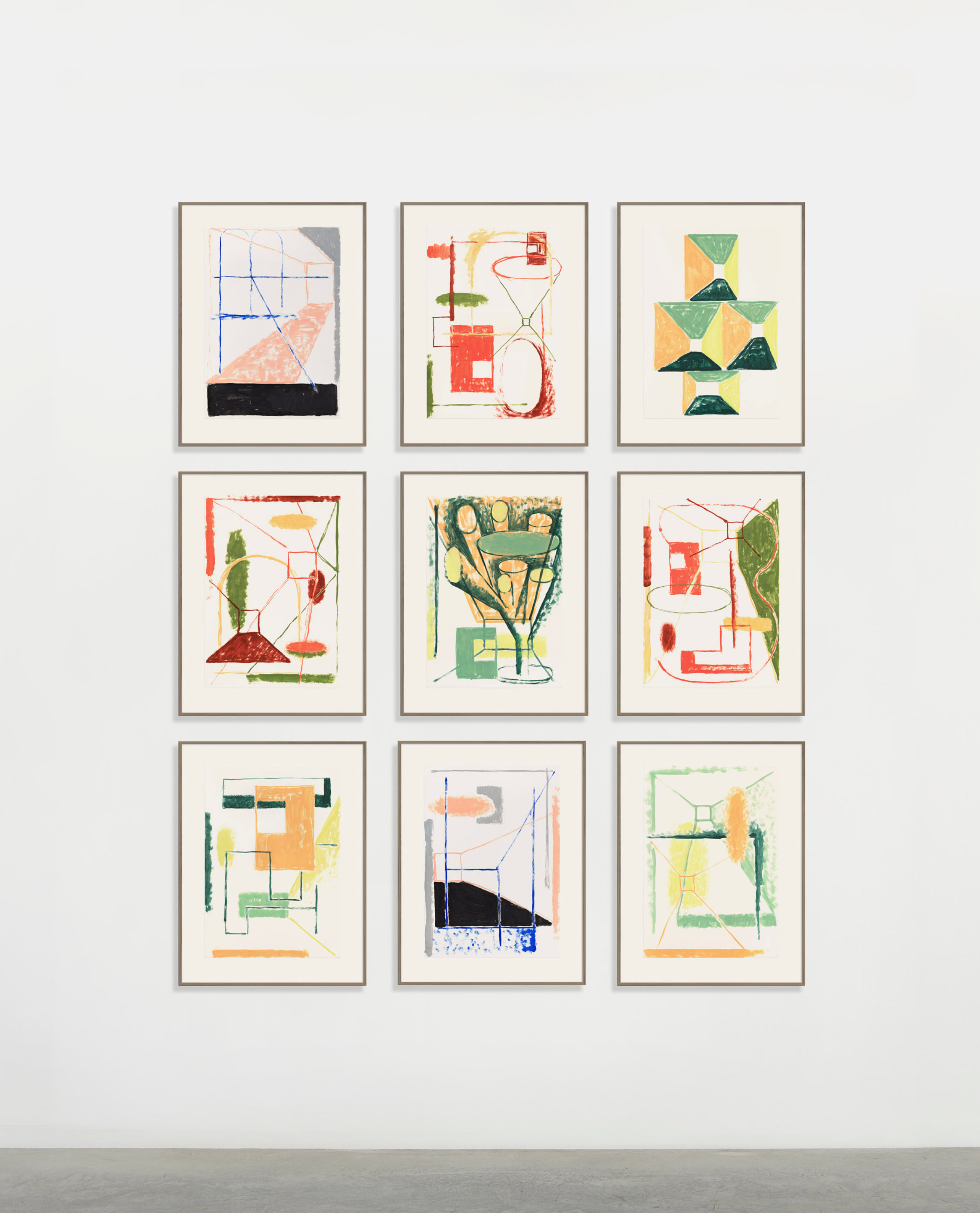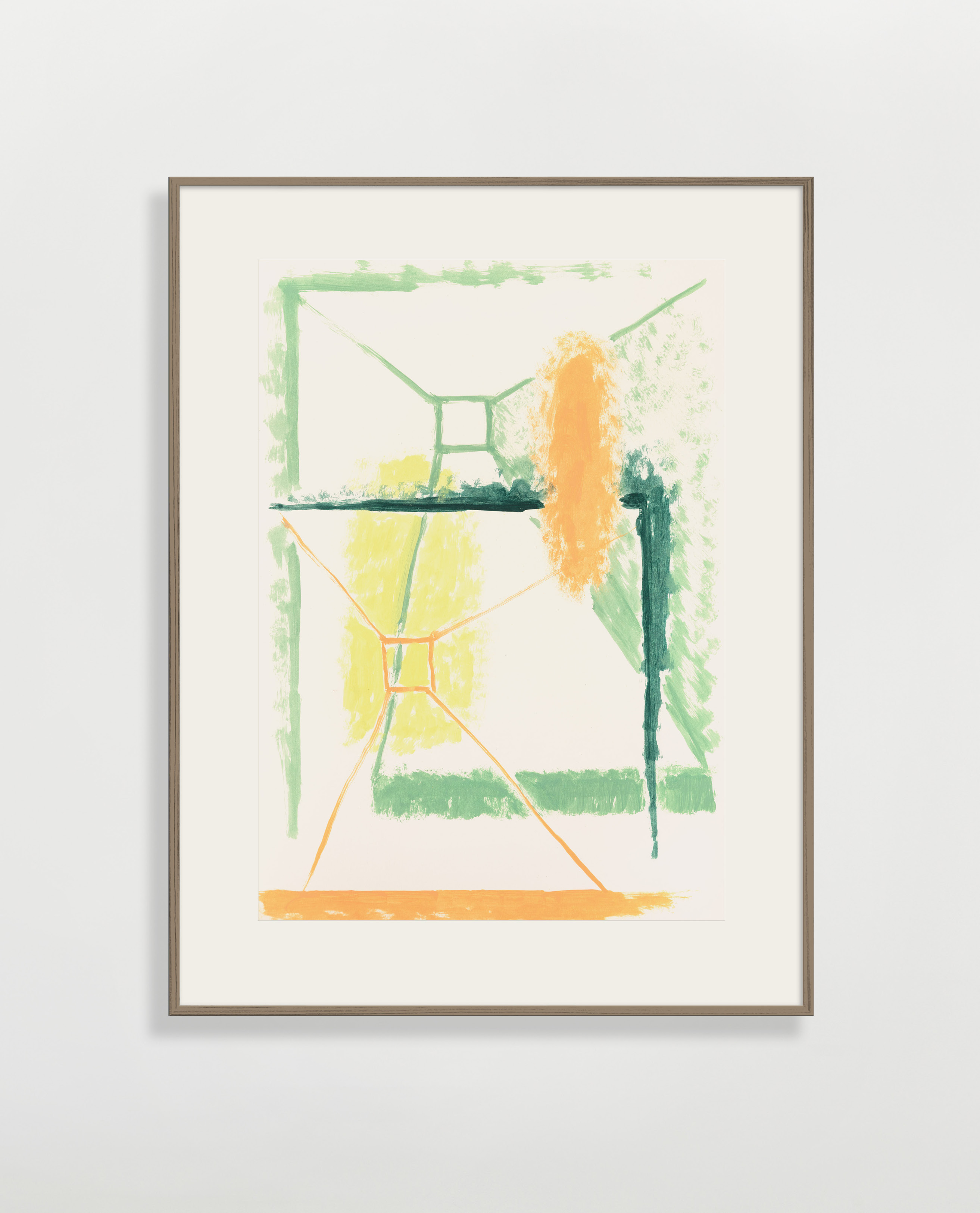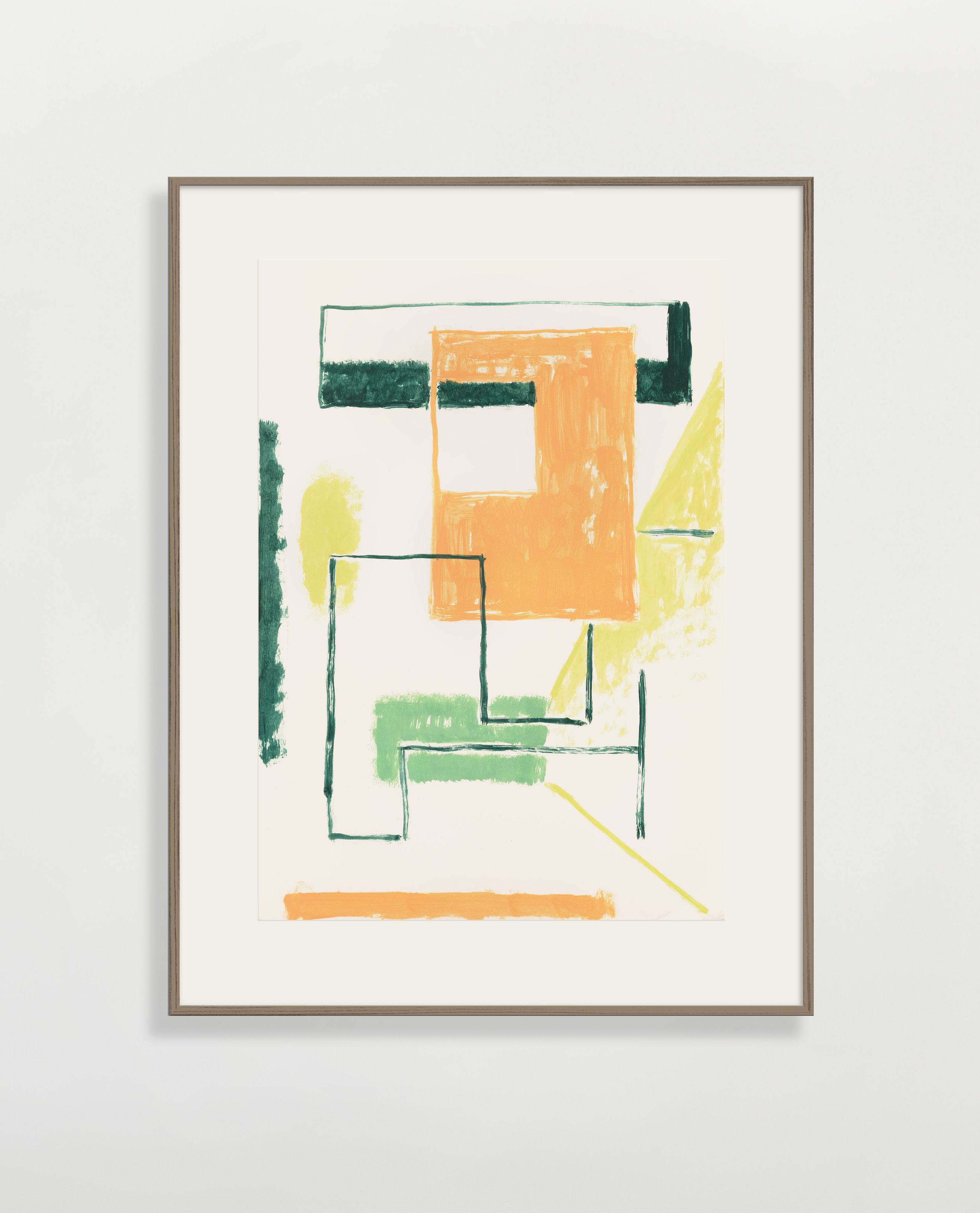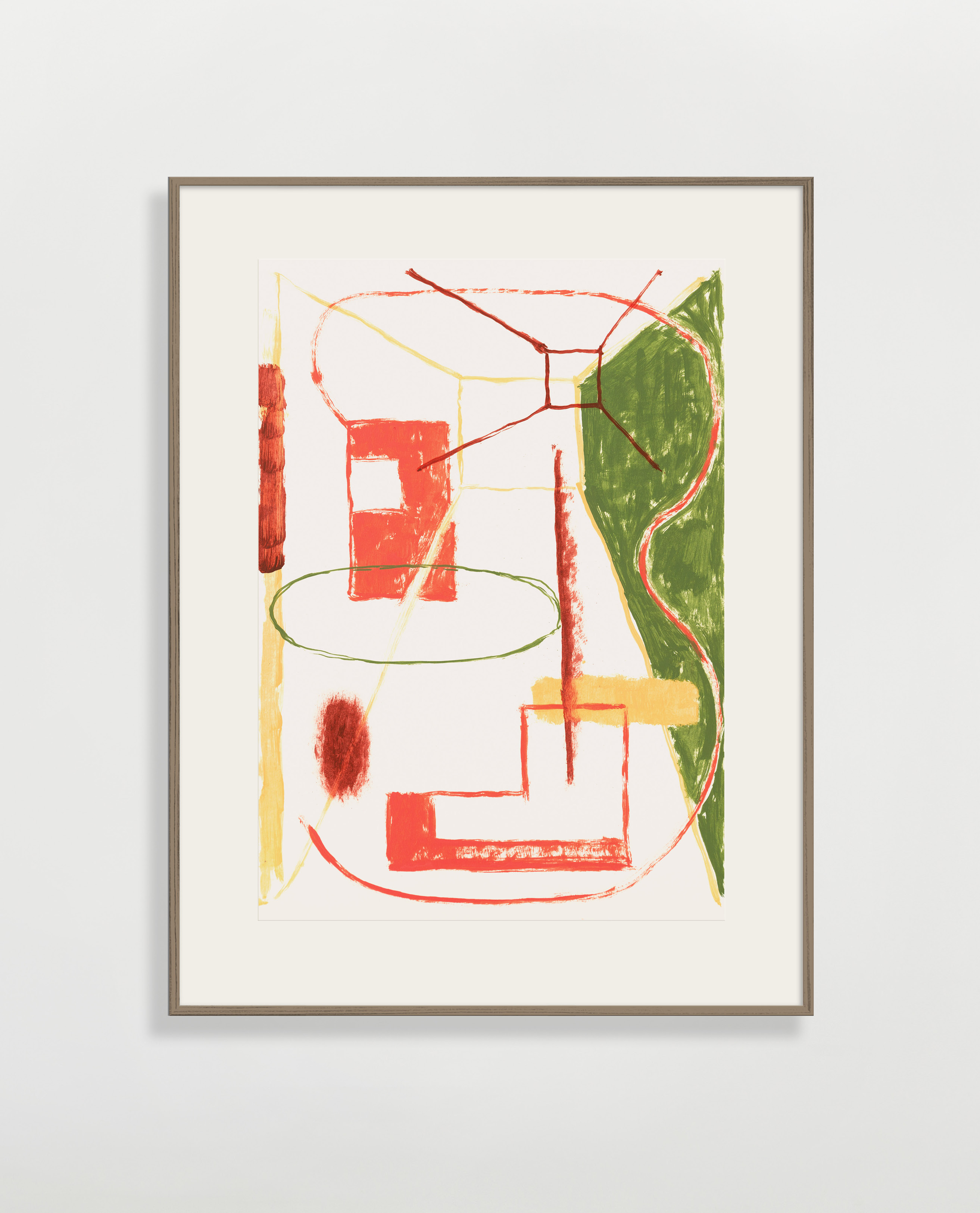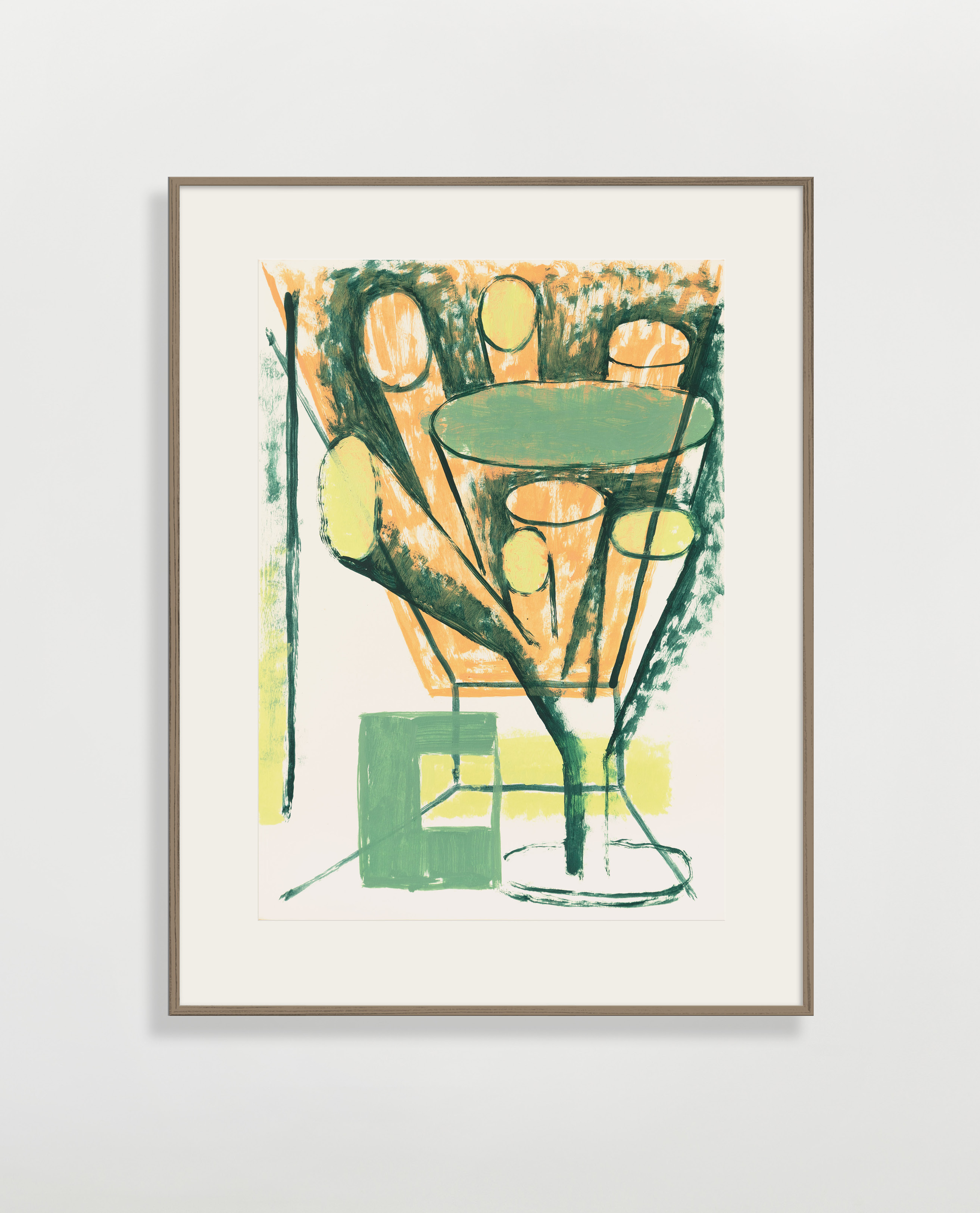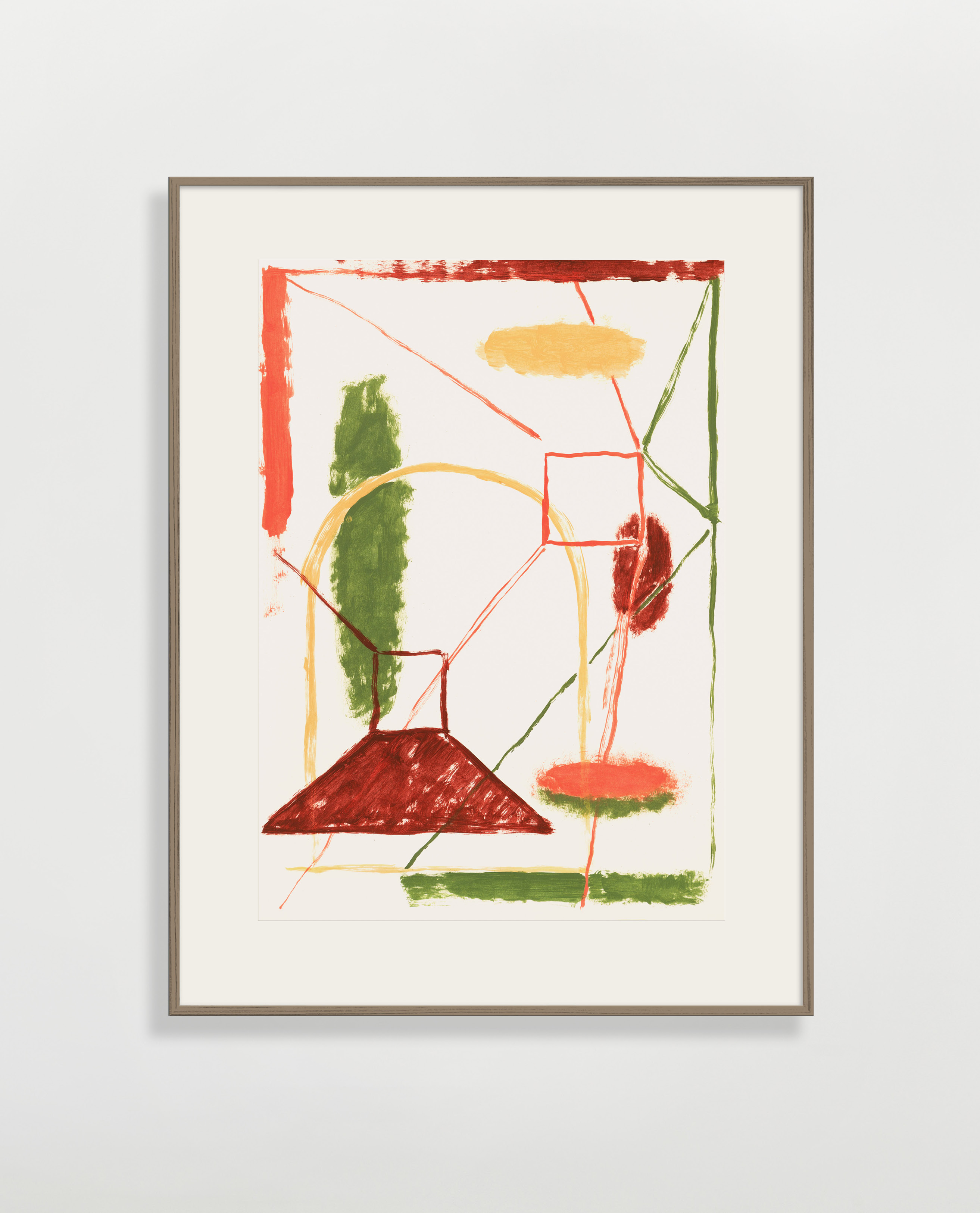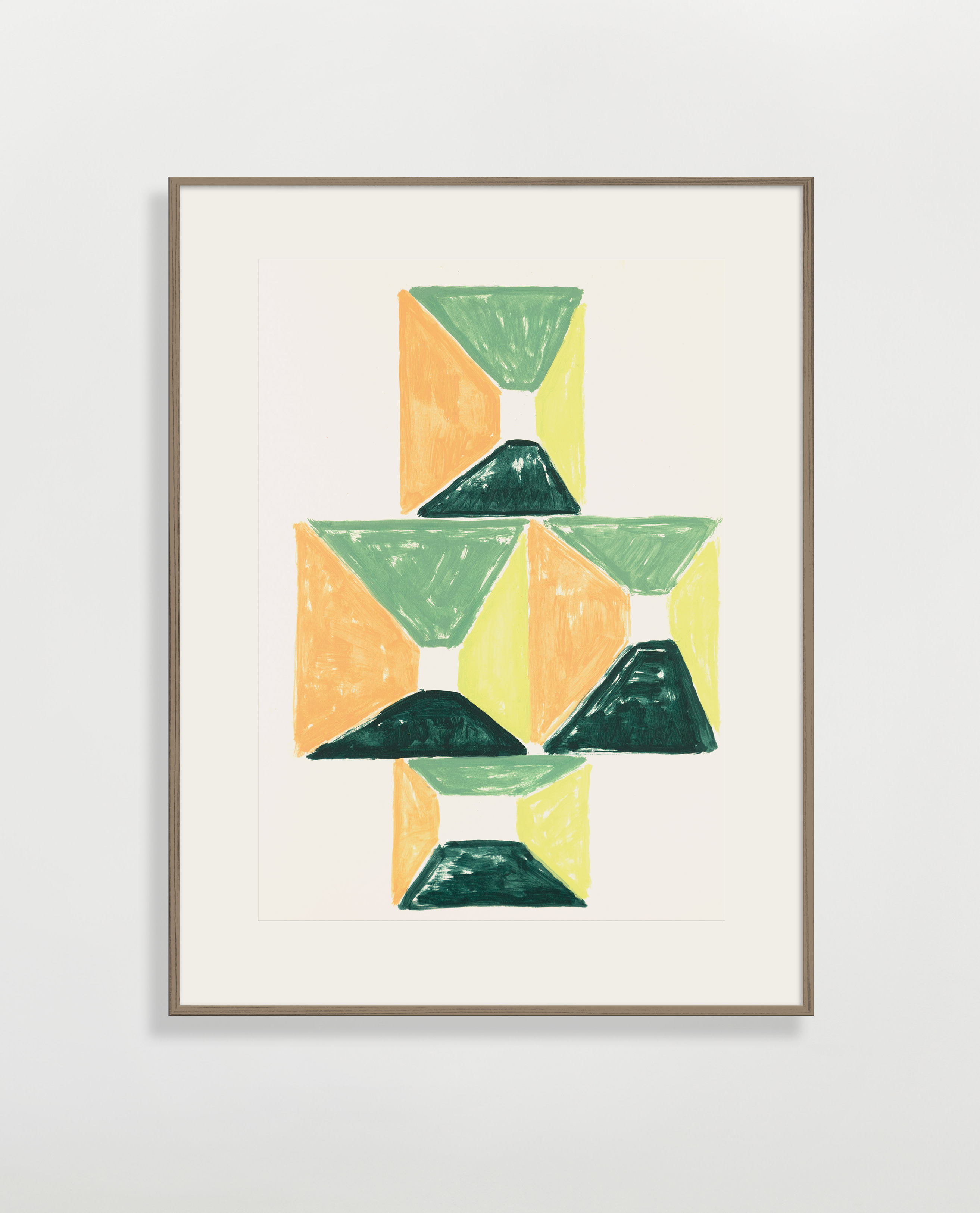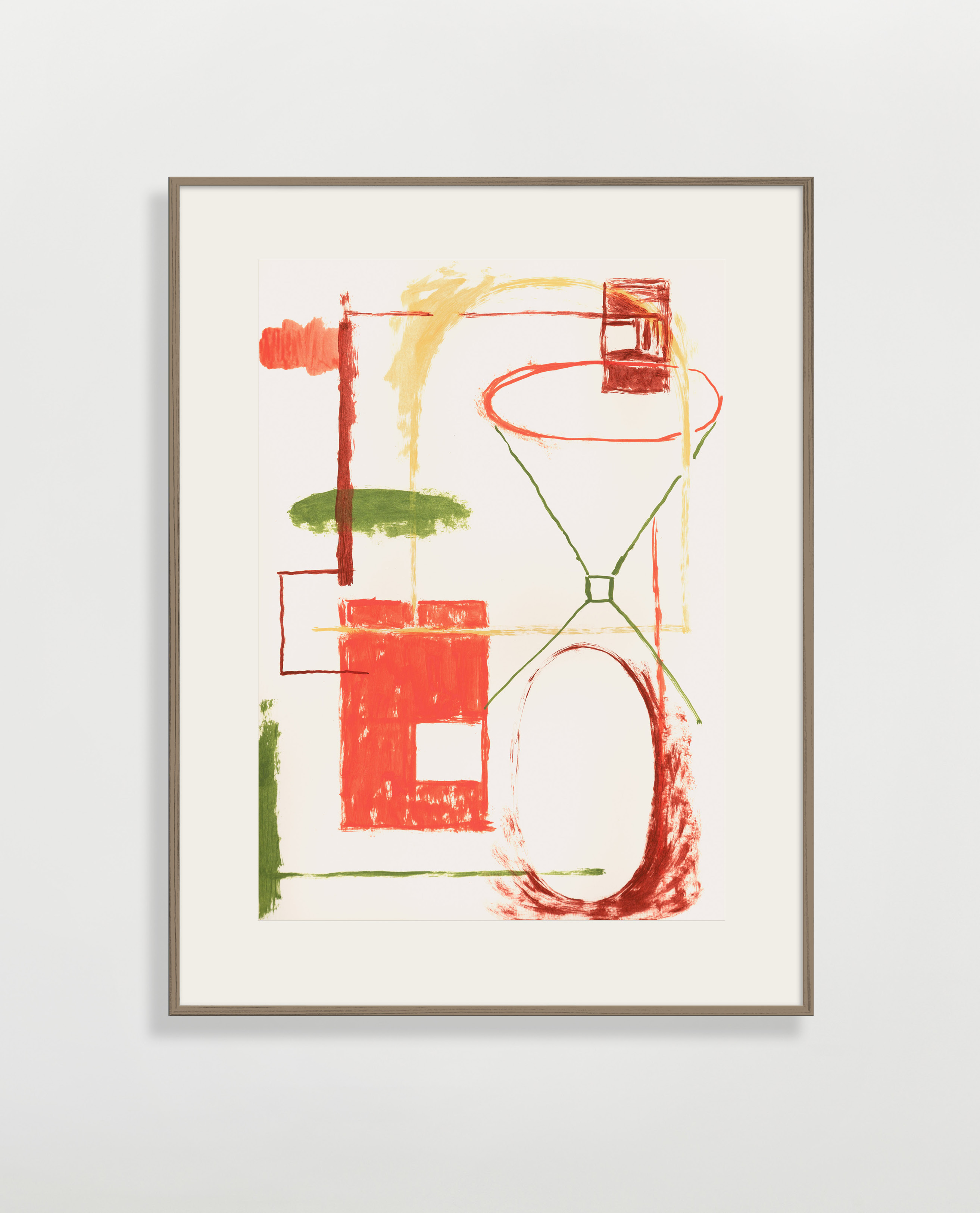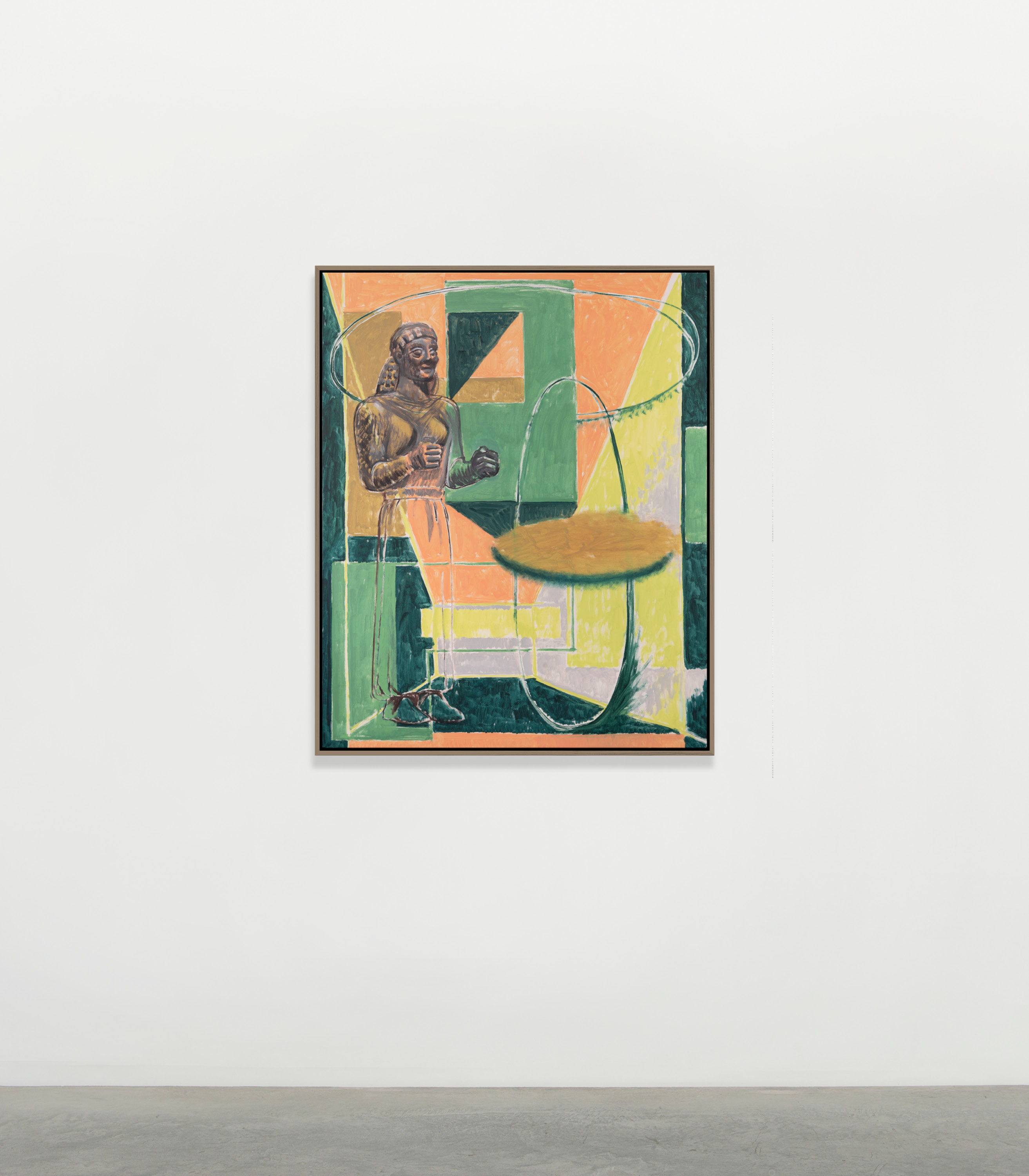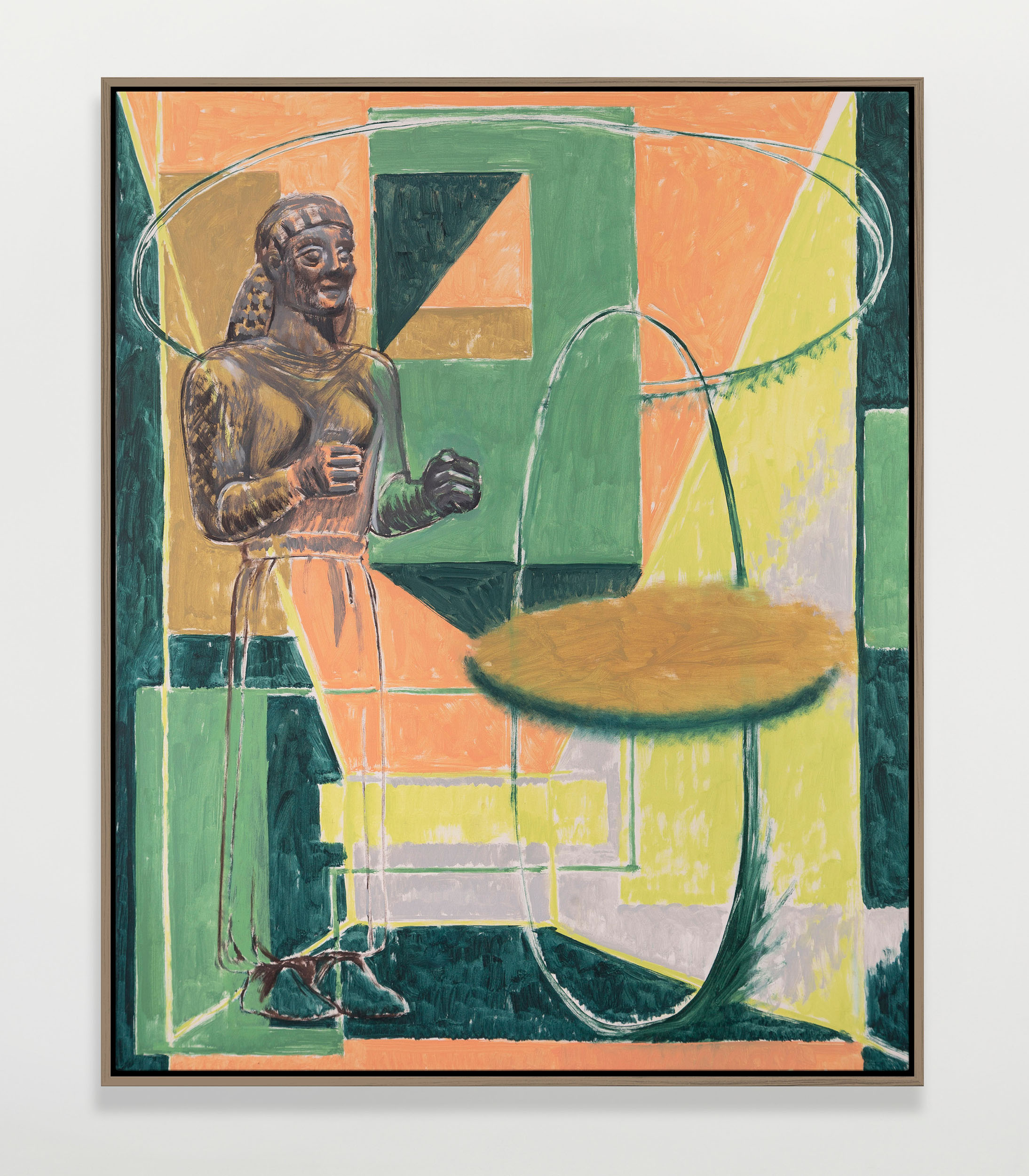The Old
and The New
Searchers
Buscadores (Searchers) talks about relationships among images, about searching for those relationships through the screen. In this occasion, painting feeds on design and the archaic on the digital. In these searches links are created between the found images, configuring in each one of the canvases what I describe as a pictorial interface.
The searched images are primarily archaic and classical. They try to find the beginning of a language and itemize its grammar without renouncing to its mystery. The windows of an interface overlap, giving us the false sensation of layers, of strata made of time. Leaps between eras remind us, of course, the warburgian atlas, but also to the maniera of Ezra Pound, where time, the ancient, and the quote, are not only motives, but in fact, matter and style.
These new paintings are also in debt with the concept of L’Arrière-pays (Hinterland) of the poet and philosopher Yves Bonnefoy. The French writer understand this land as an intimate journey, where he returns to visit places, sculptures, ruins, and paintings that are part of his memory. A territory between dream and reality where the destination does not matter, only the journey itself.
Buscadores habla de relaciones entre imágenes, de una búsqueda de ellas a través de la pantalla. En esta ocasión la pintura se nutre del diseño y lo arcaico de lo digital. En estas búsquedas surgen vínculos entre las imágenes halladas, configurando en cada uno de los cuadros lo que me gustaría llamar interfaces pictóricos.
Las imágenes buscadas son principalmente arcaicas y clásicas. Pretenden hallar el inicio de un lenguaje y desglosar su gramática sin renunciar a su misterio. Las ventanas de un interfaz se superponen unas a otras dando esa falsa sensación de capas, de estratos de tiempo. Saltos entre épocas que nos llevan, por supuesto, al atlas warburgiano, pero también a la manera de Ezra Pound, donde el tiempo, lo antiguo y la cita, ya no son sólo el motivo representado, sino también, materia y estilo.
Estas nuevas pinturas son también deudoras del concepto de Territorio Interior del poeta y filósofo Yves Bonnefoy. El escritor francés comprende este territorio como un viaje íntimo, donde vuelve a visitar lugares, esculturas, ruinas y pinturas que forman parte de su memoria. Un territorio entre lo onírico y lo real donde no importa el destino si no el viaje en si.
Paisaje Interior (Inner Landscape) makes mention of a book, The Arriere-pays by Yves Bonnefoy, and an exhibition, La abstracción del paisaje (The Landscape’s abstraction) [Fundación Juan March, Madrid, 2007]. In the first one, the poet talks about a homeland half dreamed half real, induced by the contemplation of Italian art; while the second one, traces a clear line that connects Romantic Landscape with Modern Abstraction.
But let’s return to the tittle. If we stop reading it, immediately we will notice that it is completely contradictory. A landscape is something that is outside, not inside, and nevertheless if we briefly go over it, it could seems ordinary and vague. Actually the oxymoron is a very popular figure of speech, and quickly can go unnotice.
Painting have also this ability to join different things and combine them with some spontaneity. One of its common territories is the relationship between figuration and abstraction. I, personally, drink from a tradition that tries to reconcile them, or at least, to continue taking them into consideration. Figures being abstracted or synthesized, or aabstractions in which motifs can be discerned… all of that overlapped with the own nature of painting.
On the one hand, some sculptures painted in a realistic way, reveal us images of the ancient world: Greece and Rome, some more archaic, others more classical, also Egypt and even Benin, but in a more recent time. For me these figures are amulets and reality enigmas, objects, at the same time, of study and fascination, triggers of my own inner territory and, curiously, all of them are bodies; of people, of animals, of hybrid gods with the head of a bird or the body of a fish, but all of them bodies.
And on the other hand, these figures are surrounded by a space of color fields and graphic elements where the rules of an abstract world arrange the surface. As if a Bauhaus teacher, Klee, for example, had said: “put that circle over there, this line here and that rectangle … below, until it balances out its own weight.” But I, like Klee, I’m not very orthodox and promptly, of this space, I begin to place new elements: stretchers, stairs, bulbs, arches, or simple room perspectives. An intermediate world of signs that remind us that, a circle could be a sun or two rectangles, with the right proportions, the silhouette of a cathedral.
Text for Paisaje Interior
solo exhibition at
Espacio Valverde
June 2019
——
Paisaje interior hace referencia a un libro y una exposición, El territorio interior de Yves Bonnefoy y la exposición La abstracción en el paisaje (Fundación Juan March, 2007). En el primero, el poeta habla de una patria medio soñada medio real, producida por la contemplación del arte italiano; mientras que en la segunda se expone una línea que une, de manera cristalina, el paisaje romántico con la abstracción moderna.
Pero volvamos al título. Si uno se detiene a leerlo, enseguida se dará cuenta de que es completamente contradictorio. El paisaje es algo que está fuera, no dentro. Y sin embargo leyéndolo por encima puede parecer de lo más normal y anodino. En realidad el oxímoron es una figura literaria muy popular y rápidamente puede pasar desapercibida.
La pintura también tiene esta capacidad de aunar cosas muy dispares y juntarlas con cierta naturalidad. Uno de sus territorios comunes es la relación entre figuración y abstracción. Yo, personalmente, bebo de una tradición que trata de conciliarlos o al menos de no dar por zanjado el tema. Figuraciones que se abstraen o sintetizan, abstracciones en las que se intuyen motivos… todo ello imbricado con la propia naturaleza de la pintura.
En esta exposición, a diferencia de las anteriores, lo figurativo y lo abstracto, aparentemente se han polarizado y se han ido cada uno a su extremo. Como si se hubiese separado el trigo de la paja.
Por un lado, unas esculturas pintadas de manera realista nos presentan imágenes del mundo antiguo: Grecia y Roma, en periodos más arcaicos o más clásicos, también Egipto e incluso Benín, pero ya en una época más reciente. Para mí estas figuras son amuletos y enigmas de realidad, objetos a la vez de estudio y fascinación, detonantes de mi propio territorio interior y, curiosamente, todas ellas son cuerpos; de personas, de animales, de dioses híbridos con cabeza de pájaro o cuerpo de pez, pero todos cuerpos.
Y por otro lado, a estas figuras las rodea un espacio de campos de color y grafismos donde las reglas de un mundo abstracto ordenan la superficie. Como si un profesor de la Bauhaus, Klee, por ejemplo, hubiese dicho: «pon ese círculo allí, esta línea acá y ese rectángulo… más abajo, hasta que compense su peso». Pero yo, como Klee, no soy muy ortodoxo y, enseguida, de ese espacio empiezo a sacar de manera esquemática otras cosas: bastidores, escaleras, bulbos, arcos, o simples perspectivas de una habitación. Un mundo intermedio de signos que nos recuerda que un círculo puede ser un sol o que dos rectángulos con las proporciones adecuadas pueden ser la silueta de una catedral.
Texto para la exposición
individual Paisaje Interior
en Espacio Valverde,
junio de 2019
Cardboards
August Sketchbook
